
 Aktif Konular
Aktif Konular  Üye Listesi
Üye Listesi  Takvim
Takvim  Arama
Arama  |
 Aktif Konular Aktif Konular  Üye Listesi Üye Listesi  Takvim Takvim  Arama Arama |
| |
| Tayyareler | |
| |
  |
| Sayfa 4 Sonraki >> |
| Yazar | Mesaj |
|
Nick_Karatzides
Üye 

Kayıt Tarihi: 06/06/2009 Aktif Durum: Aktif Değil Gönderilenler: 250 |
  Konu: 1/18 scale Flettner Fl-282 V21 Kolibri scratchbuil Konu: 1/18 scale Flettner Fl-282 V21 Kolibri scratchbuilGönderim Zamanı: 10/08/2014 Saat 16:56 |
|
After request, a 1/18 scale Fl-282 V6 helicopter with WWII Kriegsmarine markings built for a wealthy collector from Kiel, Germany. A second Luftwaffes Fl-282 V21 model followed for my own personal collection at home. Since the whole project cost (CAD design, 3D printing & model building) was entirely funded by the client, I did not hesitate to use the best available materials & machines to do the job. The text follows, is to describe the Flettner Fl-282 Kolibri (B-0 series) helicopter as manufactured by Anton Flettner Flugzeugbau GmbH on early 1940ies, used by Kriegsmarine & Luftwaffe during WWII and scratch built by me as a 1/18 scale model, now days. 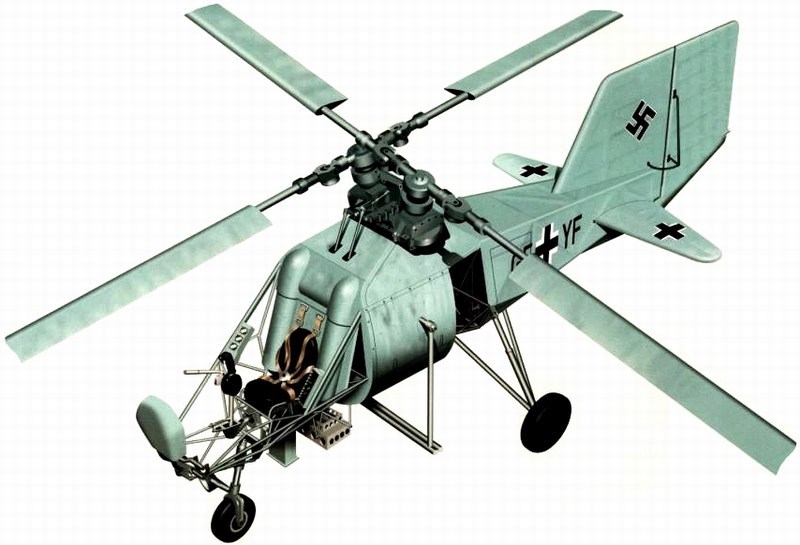
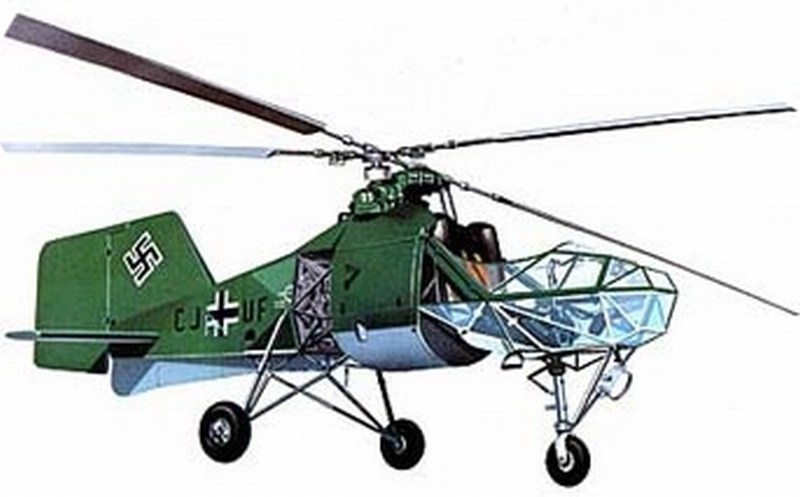 Anton Flettner was a German aviation engineer & inventor who made important contributions on airplane & helicopter design. During the WWI, Anton Flettner developed remote control & pilotless aircraft projects, which culminated in the prototype Siemens Schuckert Werke 1000 kg wire guided air to surface missile of 1918. Following WWI, he directed aeronautical & hydrodynamic research institute in Amsterdam and during the WWII, he headed the Anton Flettner Flugzeugbau GmbH, which specialized in helicopters. It is believed that the firm was founded in Berlin in 1935. By this time, however, Flettner had developed the idea of counter-rotating, intermeshing twin rotors. Many of his advisers thought that the airflow disturbed by the intermeshing blades would make this system less efficient than one using a single rotor; but Flettner believed that any problems thus encountered would be more than offset by the reduced drag resulting from having no external rotor-carrying structure. His pioneer work is often overshadowed by the more publicised activities of his contemporaries Heinrich Karl Johann Focke and Igor Sikorsky; yet Flettners helicopter, was far superior to the Henrich Fockes FW-61 and made a successful free flight several months before Igor Sikorskys VS-300 began tethered flights. Following pictures taken at Pfaffenwiesbach a district of the municipality Wehrheim, Germany. This artistic wall painting cultural monument, created by the local municipal council in memory of Anton Flettner who was the village teacher in Pfaffenwiesbach from 1906 to 1909. 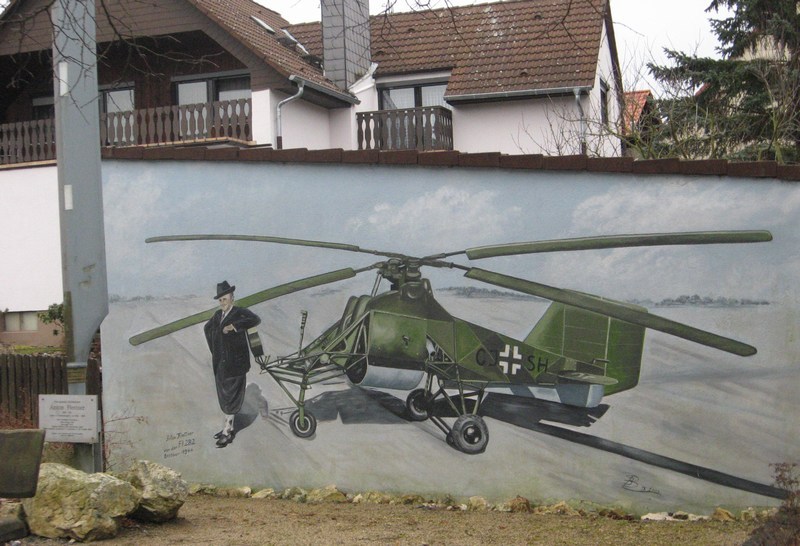
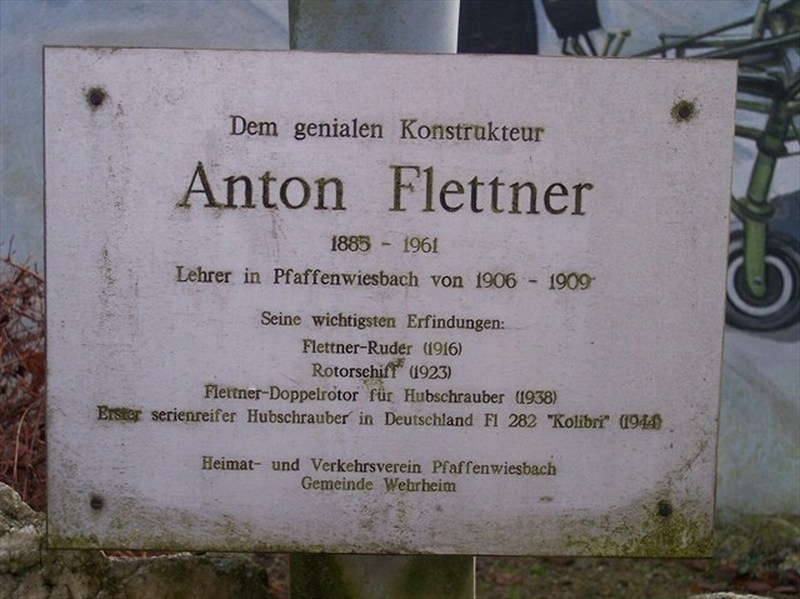 Although Anton Flettner built his helicopters for the German military, his wife Lydia Freudenberg Flettner was Jewish. Because of his personal friendship relationship with head of Gestapo, Heinrich Himmler, Anton Flettners Jewish wife and their family safely moved to Sweden for the duration of World War II. Anton Flettners partner and confidant was Dr. Kurt Hohenemser, a brilliant and thorough engineer who developed the details necessary for the helicopters success. Dr. Hohenemser's father was also Jewish, yet the pair remained unharmed during their tenure together throughout the War as they worked to develop the helicopter for military use. While the final product could be factory assembled, Anton Flettner and his partner Dr. Kurt Hohenemser insisted that they were the only ones who were capable of assembling the complex intermeshing rotor gearbox assembly. However, plans for 1000 helicopters mass production were made, the project was disrupted by the destruction of the designated factory by Allied bombing.  In following pictures, Anton Flettner is proudly posing in front of his Fl-282s fleet at Schweidnitz (today Świdnica, Poland), on October 1944. The first helicopter is a V14 registered as CJ-SH. 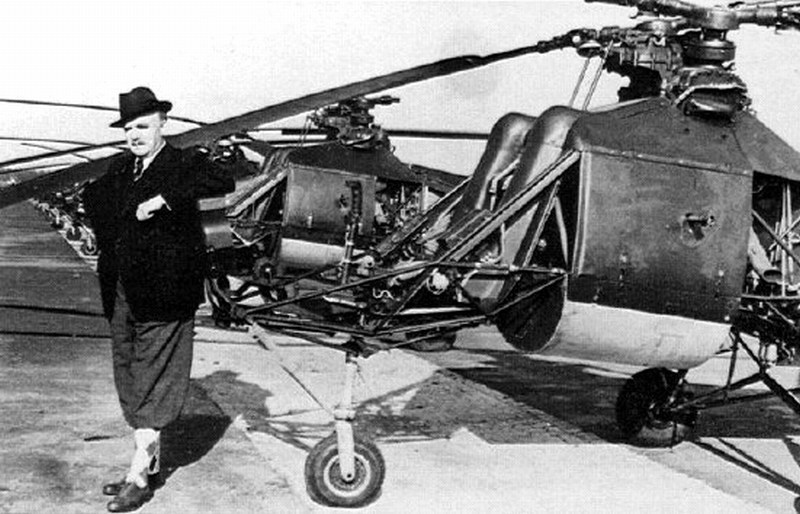
 Upon the WWII conclusion, Anton Flettner was held in the Dustbin interrogation camp at Kransberg castle. After 1945, Flettner, along with many other aviation pioneers, was brought to the United States as part of Operation Paperclip. He started Flettner Aircraft Corporation, which developed helicopters for the US military. His company was not commercially successful, but his work was shared with the Army Air Corps. Many of his designs, such as intermeshing rotor concept, saw widespread use in a series of postwar helicopters built by Kaman for the US Navy and USAF. Anton Flettner moved to the United States in 1947 to work as a consultant to the Office of Naval research and became the chief designer of Kaman Aircraft, creating the Kaman HH-43 Huskie, a concept with intermeshing rotors. He died at age 76 in New York City, USA on December 29th, 1961 and buried in Eddersheim cemetery at Frankfurt, Germany where he was born. In following photograph, Anton Flettner (2nd from left) meets Wernher von Braun (3rd from left). 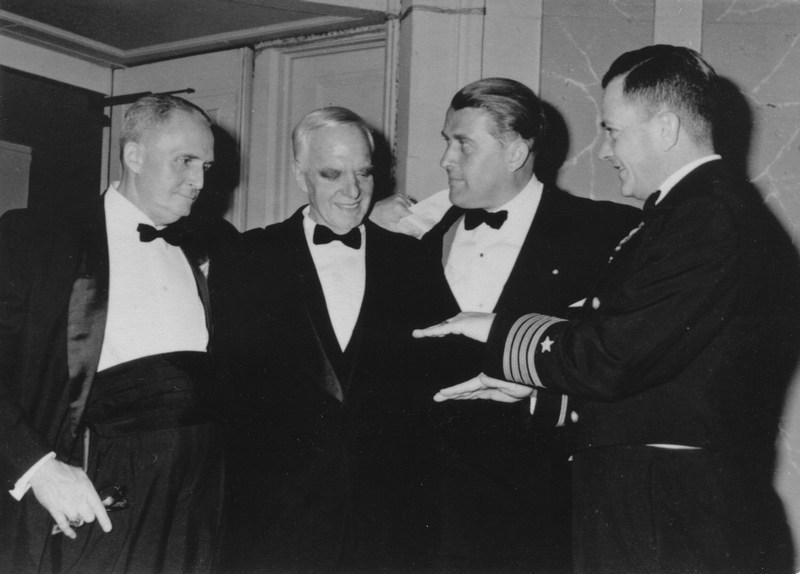 Düzenleyen Nick_Karatzides - 27/07/2018 Saat 11:58 |
|
 |
|
|
Nick_Karatzides
Üye 

Kayıt Tarihi: 06/06/2009 Aktif Durum: Aktif Değil Gönderilenler: 250 |
  Gönderim Zamanı: 10/08/2014 Saat 17:52 Gönderim Zamanı: 10/08/2014 Saat 17:52 |
|
The Flettner Fl-282 Kolibri, a single seat open cockpit intermeshing rotor synchropter, was the Worlds first mass produced helicopter and the first helicopter to land on a ship. Today one can say without exaggeration that it was the best helicopter of its day. It was actually an improved version of the previously built Flettner Fl-265, a pioneering example of a synchropter with two intermeshing rotors. The exact date on which the RLM issued the development contract for the Fl-282 is not really known. It can be assumed with certainty, however, that design work was begun in 1939 while testing of the Fl-265 was under way. All the test results and experience from the previously built Fl-265 were applied to the design of the Fl-282. By mid-August 1941 work on the Fl 282 V1 had progressed to the point where it could be used on the ground as a transmission unit test bed. The test bed was anchored but could climb the length of the restraint to a certain height and hover. 125 hours and 39 minutes were spent in these tests, which lasted until November 21st 1941. In the event of the destruction of the V1 or a lengthy interruption of testing due to some other problem, it was planned to use the V4 as a replacement test bed. First free flight was made by the V2 on October 30th 1941. At the controls was test pilot Ludwig Hoffmann, who had joined Flettner as the successor to company pilot Perlia. Flight tests resumed in March 1942 following design changes to the cardan shaft; the tests revealed a significant improvement in the helicopters handling. The Fl-282 V2 was taken out of service on May 25th 1942; the aircraft's transmission & engine were removed for use in other prototypes. Test pilot Ludwig Hoffmann carried out two altitude flights in the Fl-282 V3 on April 27th 1942. On the first he reached a height of 3500 meters over the takeoff point and on the second attempt 3800 meters in 36 minutes (from 15:17 to 16:10 hours). In following pictures, the Fl-282 prototype helicopters. The V2 (registered as GF-YB) with fully glazed cockpit, completed its first flight on October 30th 1941 and the V3 (registered as GF-YC) had H shaped horizontal stabilizers with end plates. The first three prototypes (A series) had fully enclosed cabins made up of a series of optically flat plexiglass panels, faired-in rotor pylons and well-contoured fuselages. The V3 version was fitted with endplate auxiliary fins and a long underfin beneath the rear fuselage. Later machines had more utilitarian bodies. Some (B-0 series) had a completely open pilot's seat, some (B-1 series) had semi-enclosed cockpits by flat plexiglass panels and finally some others (B-2 series) had cockpits enclosed by combination of plexiglass & wooden sidewalls. 
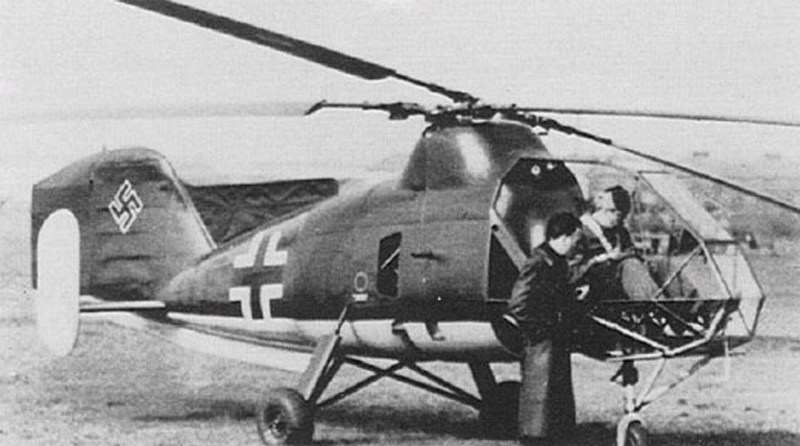 The idea of the helicopter was new at that time and Anton Flettner and his team made a lot of efforts to convince the German Air Ministry that its a good product. One of these efforts was to take an average German housewife and teach her to fly the new helicopter. As seen into following photograph, they finally proved that the vehicle was extremely stable and very easy to fly. So easy, that an average German housewife with no previous flying experience, managed to control the Fl-282 V22 (registered as CI-TV) helicopter, after only 3 hours of flight training. 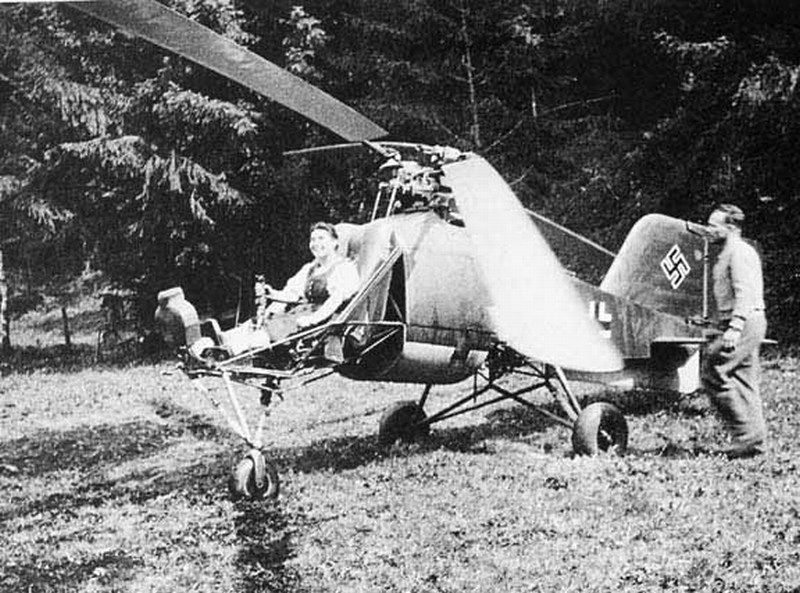 The fuselage was constructed from truss-type welded steel tube, covered with doped fabric. It was fitted with a fixed non-retractable tricycle type undercarriage, with the braced fixed nose wheel with VDM oil shock absorber leg coupled with the rudder foot pedals for steering. Nose wheel was equipped with a 350x150 mm tire and main gear with 465x165 mm tires. The rectangular outline with rounded tips rotor blades were made by tubular steel spar with riveted-on wooden ribs and plywood skin with fabric covering and axes of both rotors were angled outboard at 12° from the vertical. Seen from above, the right rotor rotates clockwise and the left rotor counter clockwise. At the rear end of the fuselage, a two-part horizontal stabilizer with single spar was provided for trimming purposes and a rudder fin of very generous area. This large area was necessary because much of it was ineffective due to the poor aerodynamic shape of the fuselage causing rearwards flow separation and turbulence. It was constructed by tubular steel spar with riveted-on wooden ribs, plywood leading edge & fabric-covered. Steering of the Fl-282 was by a combination of the rudder and differential collective pitch change on the two rotors, but only the rudder could give steering during autorotation since collective pitch was then ineffective (another reason for the large rudder area). Rudder fin was made of wood and covered by fabric, with 40° deflection. The vertical stabilizer and the elevators were also made of wood, with plywood leading edge and fabric covering, bolted to fuselage frame. 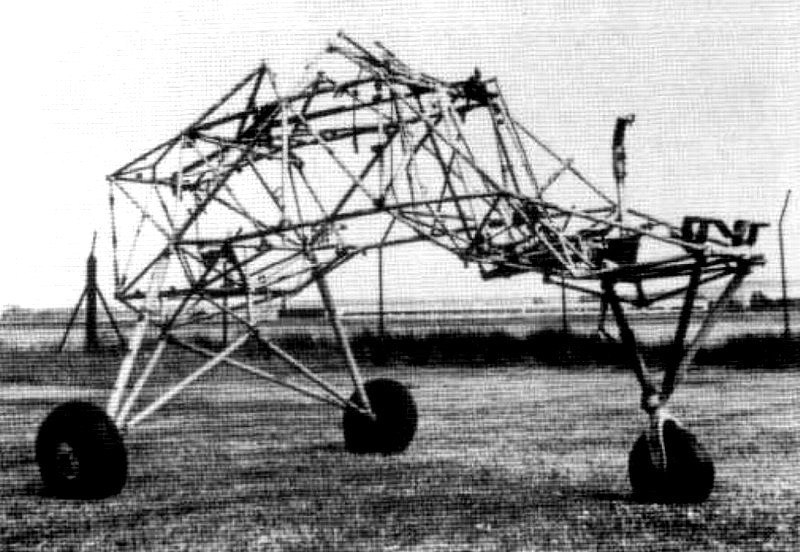
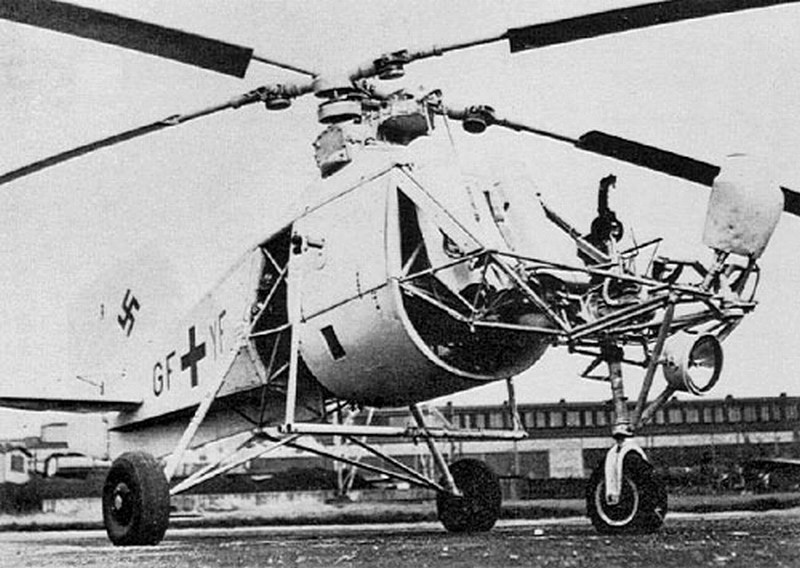
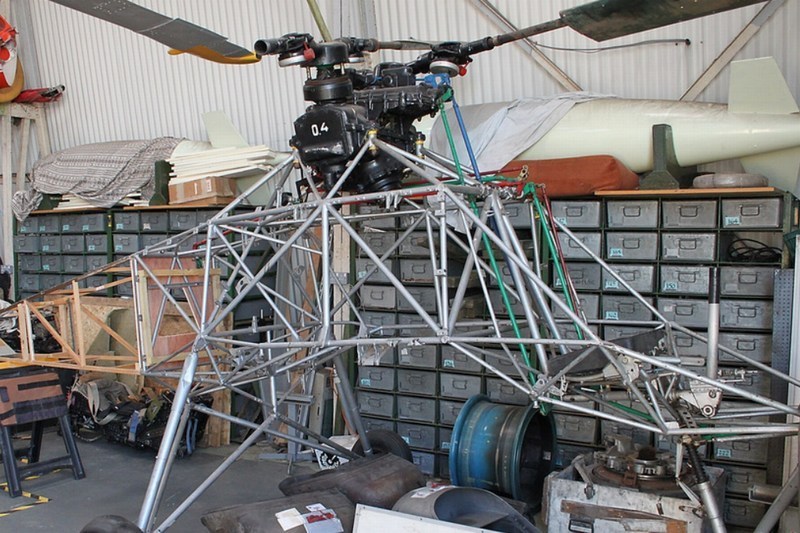
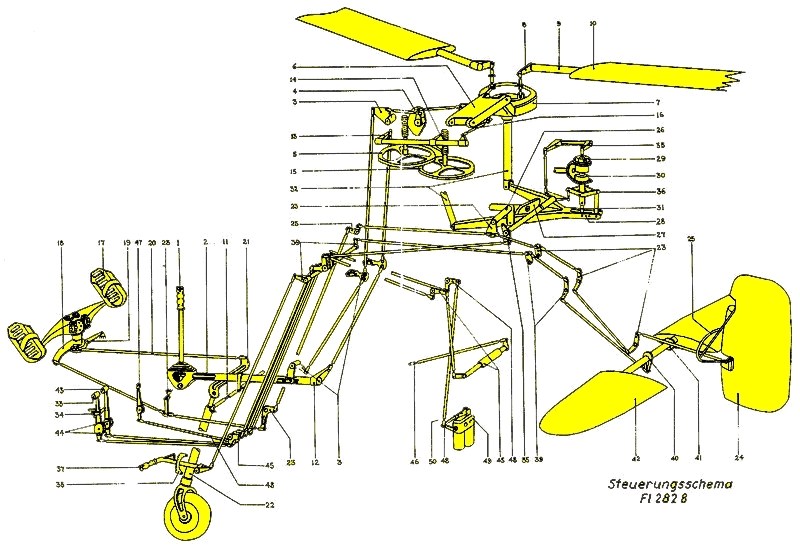
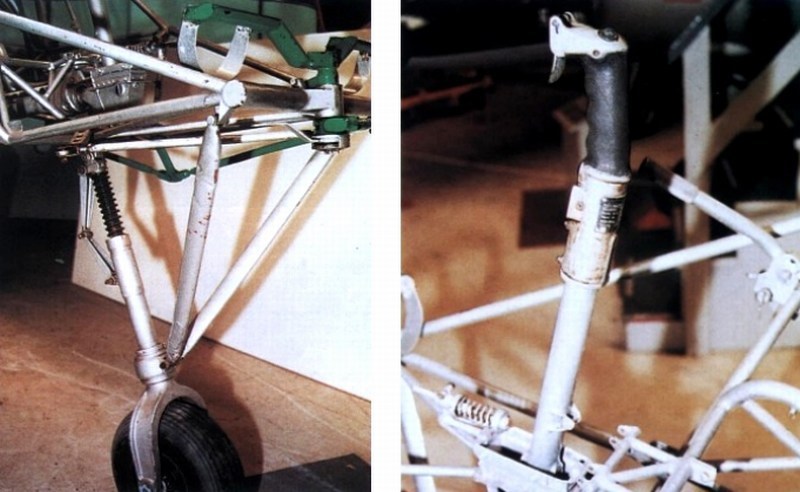
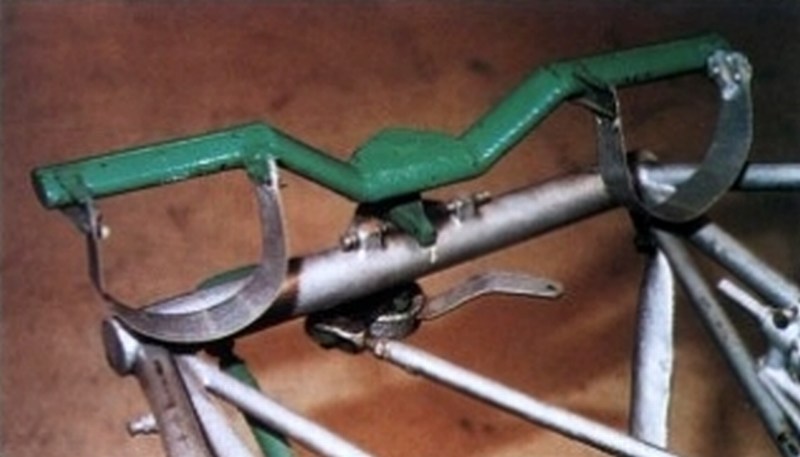 Düzenleyen Nick_Karatzides - 27/07/2018 Saat 11:58 |
|
 |
|
|
Nick_Karatzides
Üye 

Kayıt Tarihi: 06/06/2009 Aktif Durum: Aktif Değil Gönderilenler: 250 |
  Gönderim Zamanı: 10/08/2014 Saat 18:05 Gönderim Zamanı: 10/08/2014 Saat 18:05 |
|
It was equipped with flight and navigation instruments such as an ASI - AirSpeed Indicator, an altimeter, a VSI - Vertical Speed Indicator, a turn & bank indicator, RPM indicator for rotors, rotor blade angle indicator, a master compass and a dashboard clock. Radio & signalling equipment consisted of a FuG 19 ultra short wave radio installation. Back type parachute, first aid kit, signal flare pistol and one-man inflatable raft were also present. In following pictures, the instrument panel of the first three prototype helicopters with fully enclosed cabins made up of a series of optically flat plexiglass panels.
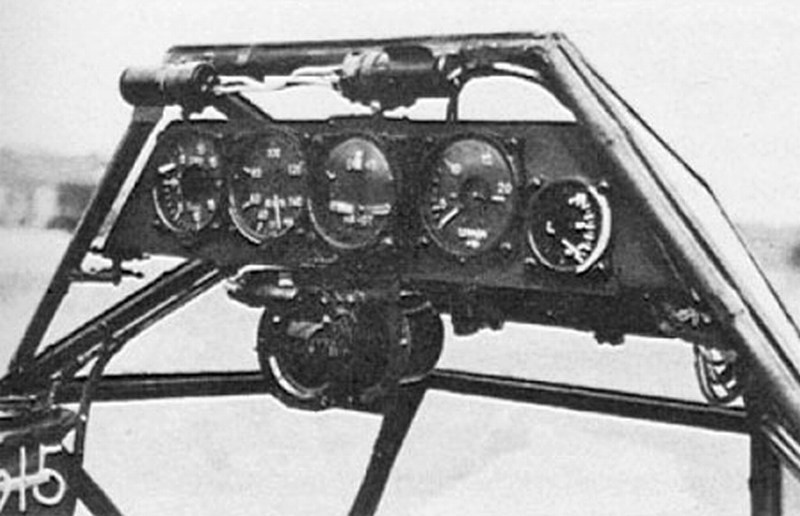
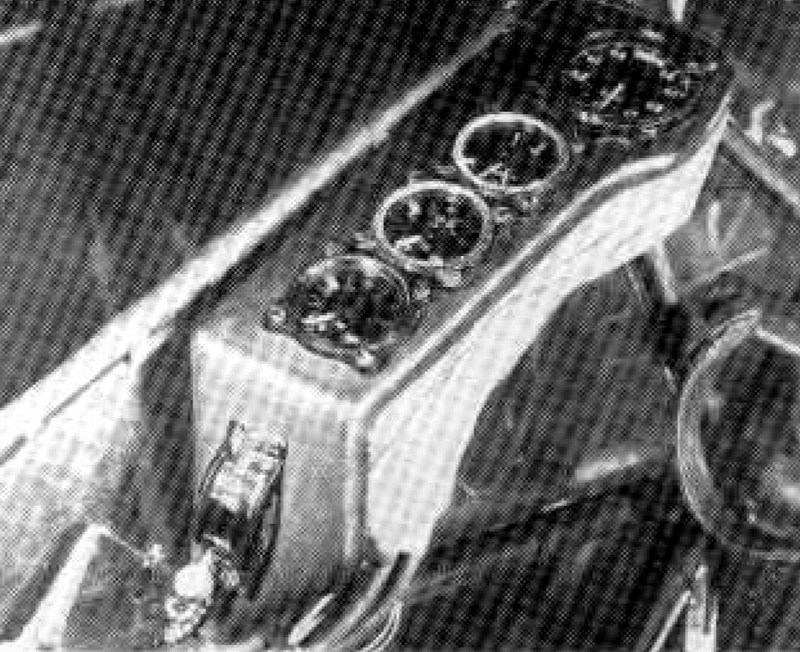
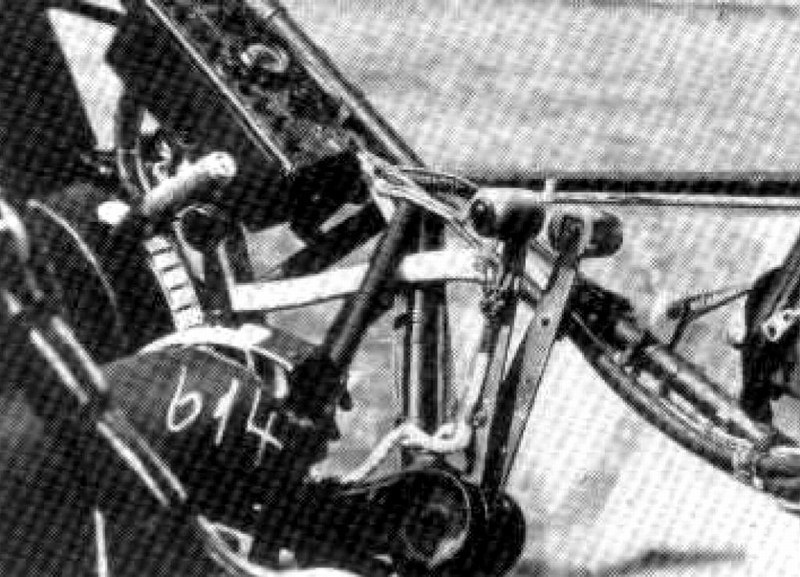 The Flettner Fl-282 Kolibri was equipped with a Bramo Siemens Halske SH-14A, 7-cylinders radial engine of 119 kW (160 hp) mounted in the center of the fuselage, with a transmission unit on the front of the engine from which a drive shaft ran to an upper gearbox, which then split the power to a pair of opposite drive shafts to turn the rotors. The SH-14A was an already tried engine design that only required servicing every 400 operating hours. 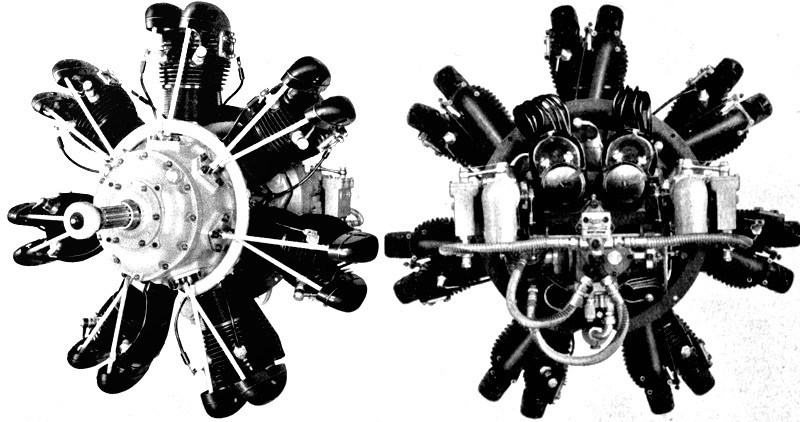
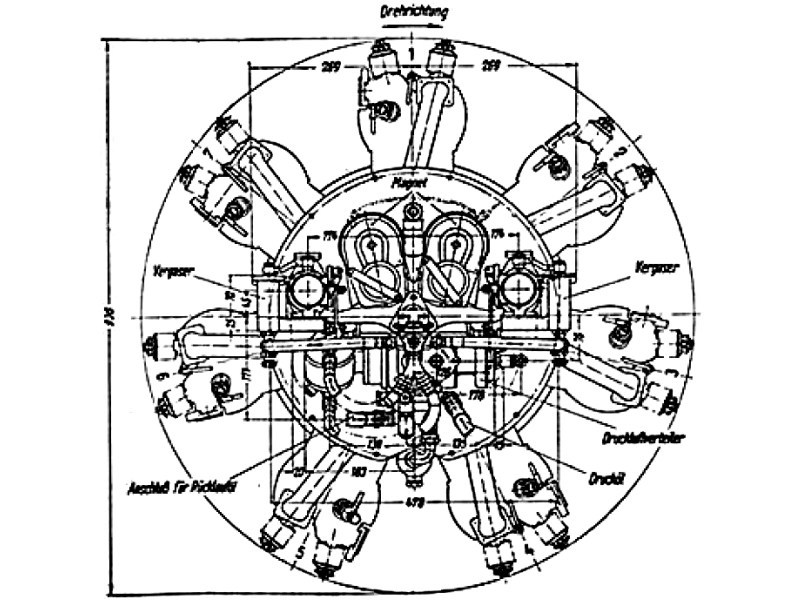
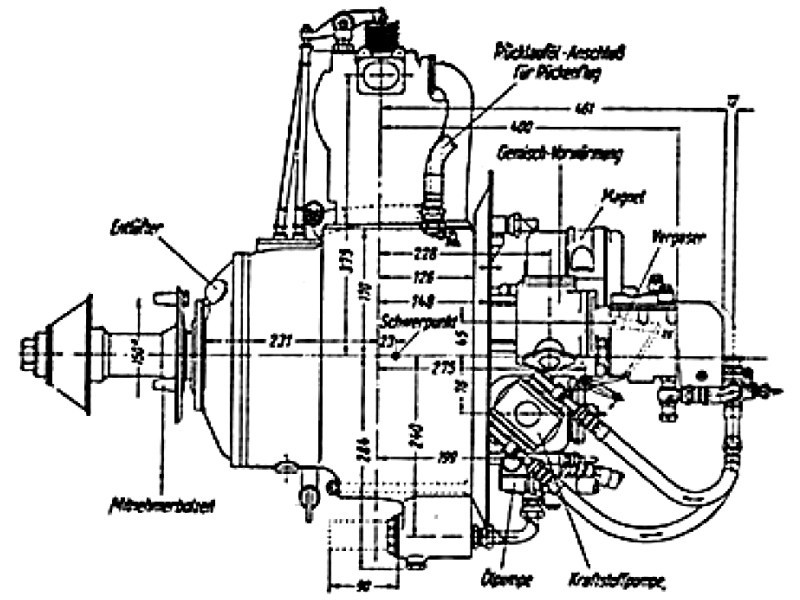 A drive shaft with universal joints took the drive from the engine transmission unit to the upper transmission unit, which consisted of gears and shafts connecting the two rotor shafts. The final cross-shaft between the two rotor shafts was fitted with a free wheeling unit to disconnect the engine drive, and also with a rotor brake. On the drive-shaft from the engine, a friction disc clutch was fitted which was used for running up the rotors until there was no slippage, when a positive dog-type clutch, on the same shaft, was then engaged. Total reduction through all the transmission units was 12.2 to 1. Cooling air for the enclosed engine was drawn in through openings beneath the fuselage by an eight blade wooden cooling fan with direct drive from the engine and a high pressure air tank was connected to the engine cylinders through a distributor for starting. 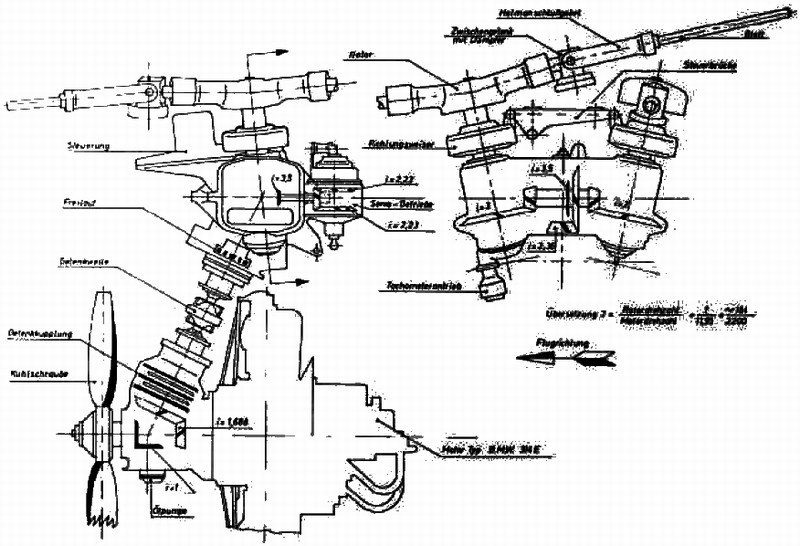 Düzenleyen Nick_Karatzides - 27/07/2018 Saat 11:59 |
|
 |
|
|
Nick_Karatzides
Üye 

Kayıt Tarihi: 06/06/2009 Aktif Durum: Aktif Değil Gönderilenler: 250 |
  Gönderim Zamanı: 10/08/2014 Saat 18:21 Gönderim Zamanı: 10/08/2014 Saat 18:21 |
|
The two 2-blade rotors, which were synchronized to be parallel in the 45° position, were mounted on shafts having an included angle of 24° between them and an inclination forward of 6°. The rotor blades consisted of wooden ribs mounted on tubular steel spars with a covering of plywood followed by fabric. Flapping and dragging hinges were fitted, the latter having friction dampers. A centrifugally operated blade pitch governor held the rotor rpm within prescribed limits, the governor being driven through clutches from the rotor transmission. In order to ensure that power-off autorotation was not lost, the governor was set for a minimum rotor speed of 160 rpm. With the use of his collective pitch lever, the pilot could over ride the governor but only to increase rpm. Under certain conditions, self-excited oscillations could occur in the rotor; this happened in flight on one occasion when an Fl-282 was being flown with a high collective pitch and the low rotor speed of 140 rpm (compared with the recommended 175 rpm). Vibration became so severe that the pilot prepared to bail out, but, before he could do so, the machine went into autorotation and the vibration ceased.
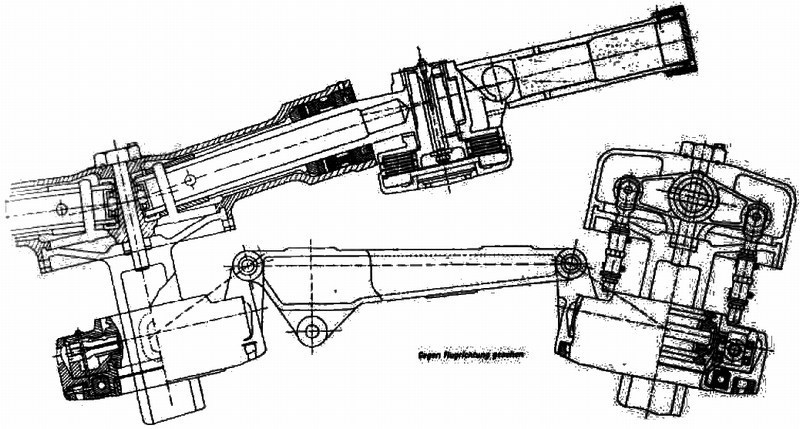
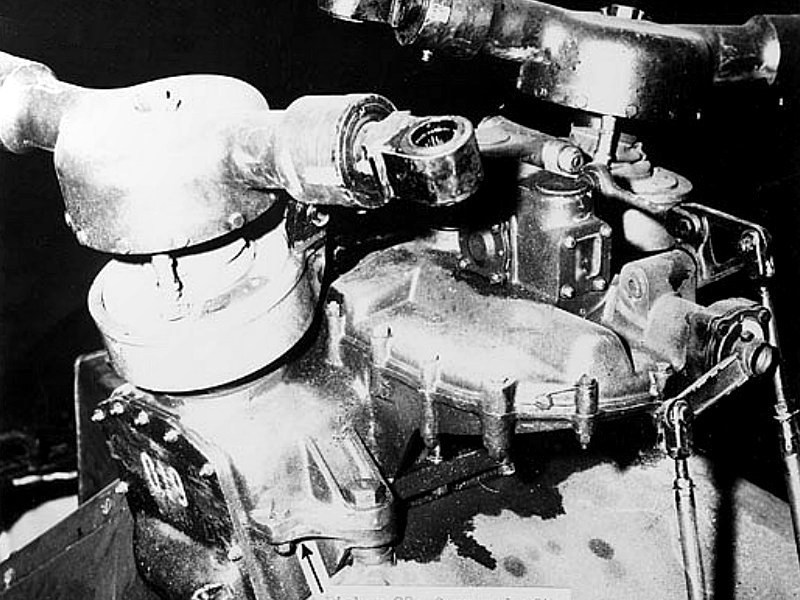
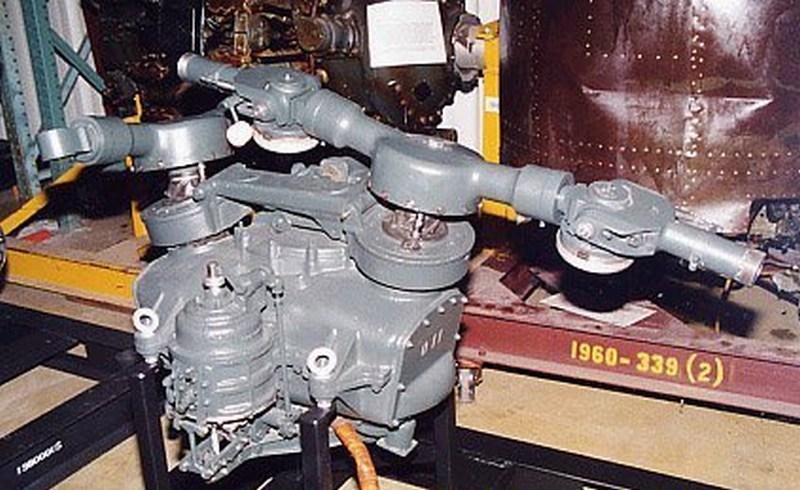
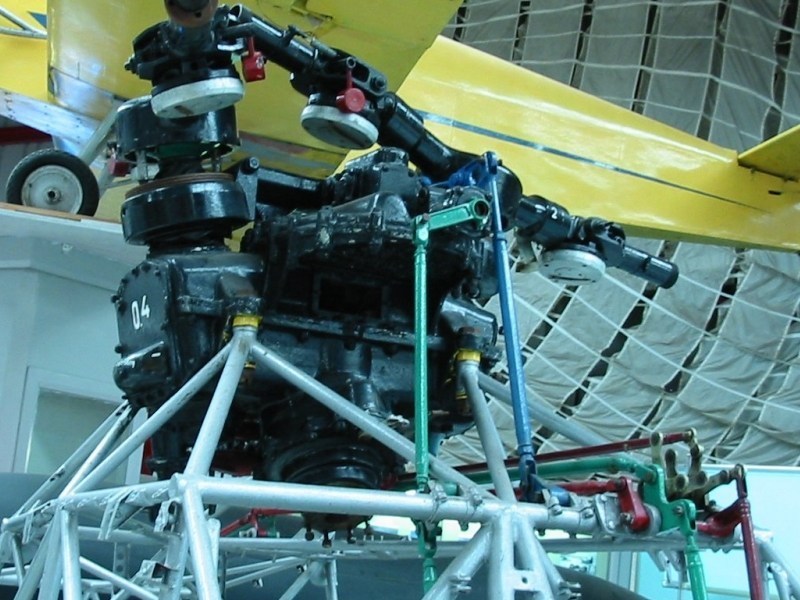
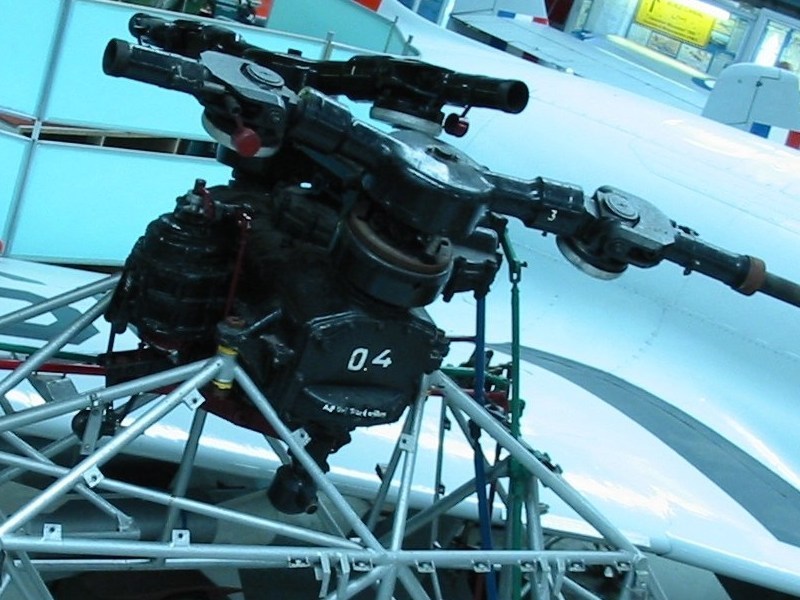 The Fl-282 was more highly developed and flew more hours than any other German helicopter, and very extensive tests and measurements were made of all flight aspects. Most of this test work was done by Anton Flettner's chief pilot Oberleutnant (Luftwaffe 1st Lieutenant) Hans E. Fuisting, who also undertook blind flying and trained many of the 50 pilots who learned to fly the Fl-282 Kolibri. Other test pilots participated test pilot FliegerStabsingenieur (Luftwaffe Major) Gerhard Geike, Dipl. Ins. Hans Fischer and Dipl. Ins. C. Bode. Some new pilots ran into trouble when flying near the ground, because, as they turned with the wind, they lost lift and struck the ground. One new pilot had a fatal accident when flying his Fl-282 blind in cloud, and the assumed cause of the accident was that the machine had been dived and the controls then pulled back so violently that the blades were forced into each other or into the tail. The diving speed thereafter was restricted to 175 km/h. On occasions, the Kolibri was landed autogyro way and without the use of collective pitch. This was done by vertically descending, diving nose-down and then pulling back on the controls to land. Unfortunately, by using this landing technique without the use of collective pitch, on (at least) one occasion, the tail boom hit the ground and was damaged. As seen into following two photographs, the CJ-SK registered Fl-282 V17 helicopter, following a crash-landing at Travemünde, on April 13rd 1944, with test pilot FliegerStabsingenieur (Luftwaffe Major) Gerhard Geike behind controls who replaced the main test pilot Fliegerstabsingenieur Dipl. Ins. Hans Fischer after he was badly hurt in a Dornier Do-217 crash. 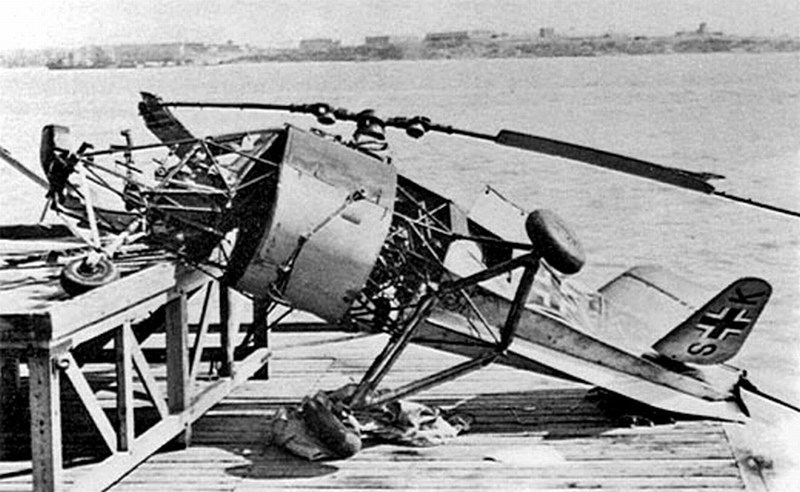
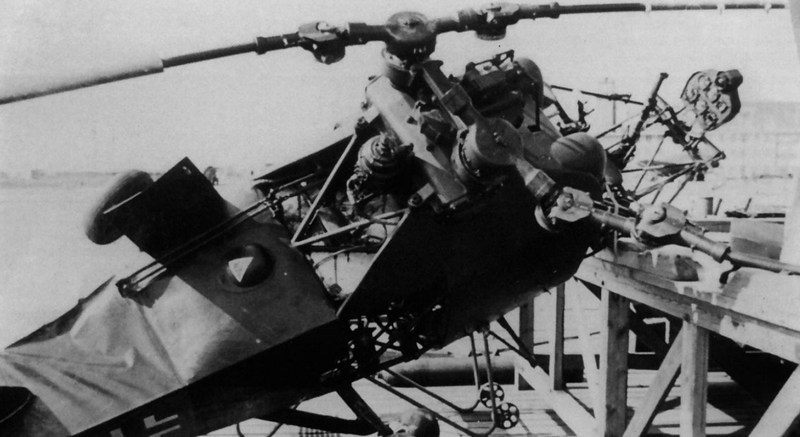 Extremely manoeuvrable and very stable, even in gusty conditions, the machine could be flown hands-off in forward flight above 60 km/h for indefinite periods by making an adjustment to neutralize the loads on the controls. However, in forward flight at speeds below 60 km/h there was some longitudinal instability, which reached a maximum at about 40km/h. Another slight criticism of the Fl-282 was that it vibrated rather badly while the rotor was running up on the ground, but this vibration decreased upon lifting off, although there was still a certain amount of vibration transmitted to the control column, which was sluggish and tended to overshoot the requisite amount of movement. Although many of the mechanical components were unnecessarily complicated and heavy, the general design and workmanship were of excellent quality. Since taxiing under its own power was strictly forbidden, the Fl-282 V12 registered as CJ-SF seen in following picture, pushed back by ground personnel. This rule imposed because the non vertical angled rotor hubs resulted in the blade tips at the sides of the craft being around human body height and made the craft dangerous to approach from the ground whilst the blades were spinning. In addition, the blades could be damage by contact with the ground. At heliports these two problems could be overcome, but at unprotected sites this would be a concern. So, they had a simple rule that ground crew could not approach at that time or only directly from the front. 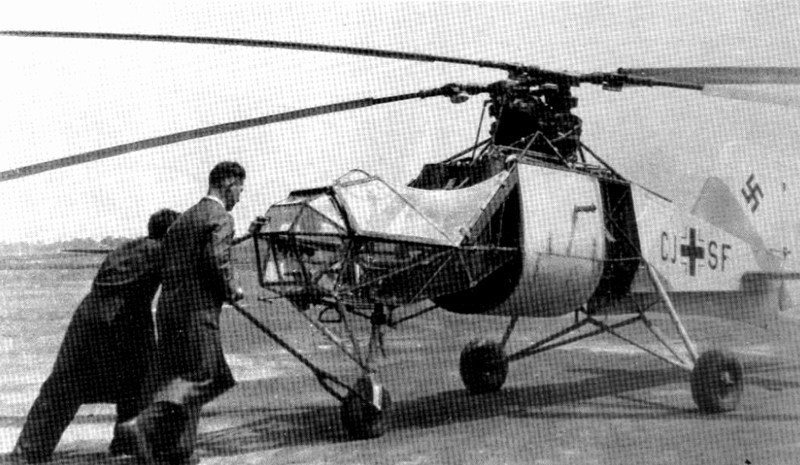 In following picture, Emil Arnolt (left) chief designer at Anton Flettner Flugzeugbau GmbH, test pilot Oberleutnant (Luftwaffe 1st Lieutenant) Hans E. Fuisting and a mechanic (name unknown), in front of companys factory plant. Next photograph, Emil Arnolts family (wife & kids) having their first contact with the new helicopter. Pictures provided by Carsten Arnolt, grandson of Emil Arnolt. 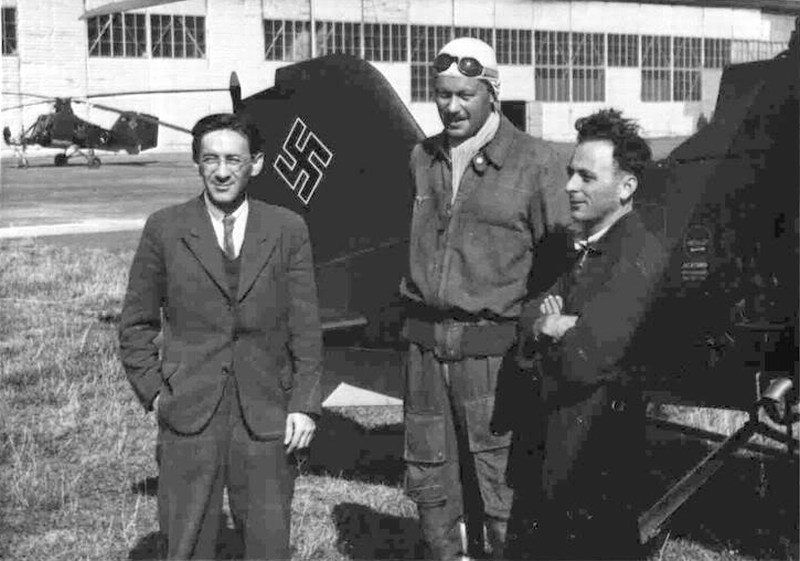
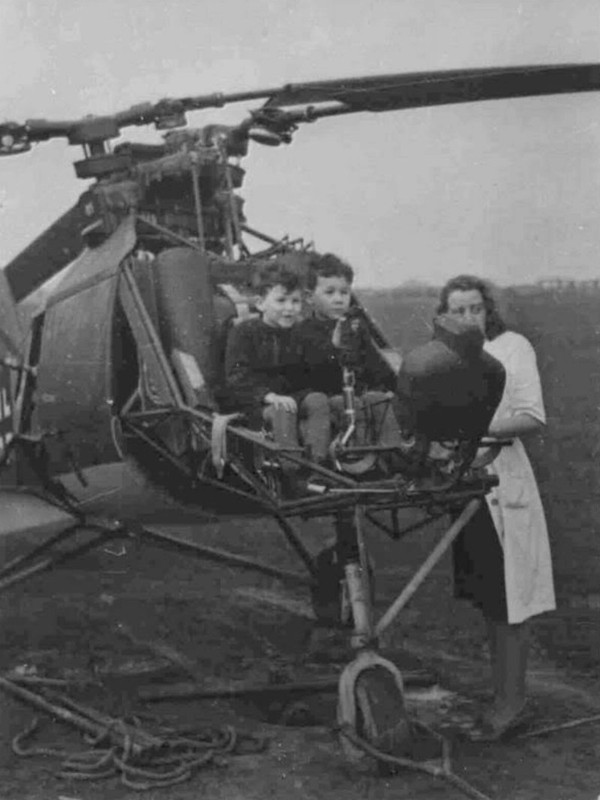 Düzenleyen Nick_Karatzides - 27/07/2018 Saat 12:03 |
|
 |
|
|
Nick_Karatzides
Üye 

Kayıt Tarihi: 06/06/2009 Aktif Durum: Aktif Değil Gönderilenler: 250 |
  Gönderim Zamanı: 10/08/2014 Saat 18:43 Gönderim Zamanı: 10/08/2014 Saat 18:43 |
|
The Kriegsmarine HQs was impressed with the Flettner Fl-282 Kolibri and wanted to evaluate it for submarine spotting duties, ordering an initial 15 helicopters, to be followed by 30 production models. Flight testing of the first two prototypes (with enclosed plexiglass panelled cabins and 3-bladed rotors installed, instead of the 2-bladed rotors on production models) was carried out through 1941, including repeated takeoffs and landings from a 13 m² wide platform pad mounted on the German cruiser Köln. Intended roles of Flettner Fl-282 Kolibri included ferrying items between Kriegsmarine ships and naval reconnaissance operation from cruisers and other warships. The entire Fl-282 flight test program was not conducted at Rechlin, as was customary for land based aircraft; instead, from August 1942, trials were carried out at E-Stelle See Travemünde. Travemünde was selected because the air traffic safety ship Greif was based there and could be used for deck landing trials. The site also simplified helicopter sea trials with the navy, it was also imperative to move the site of the trials from Flettner's facility in Berlin, where there was a greater risk from the growing Allied bombing raids.
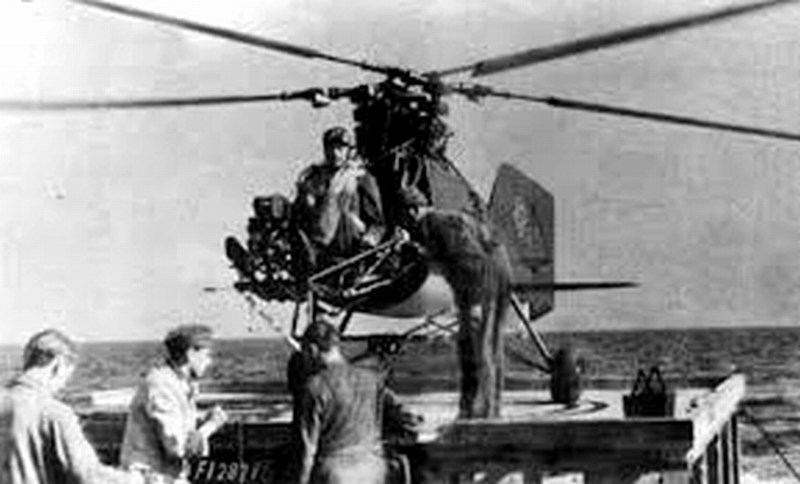
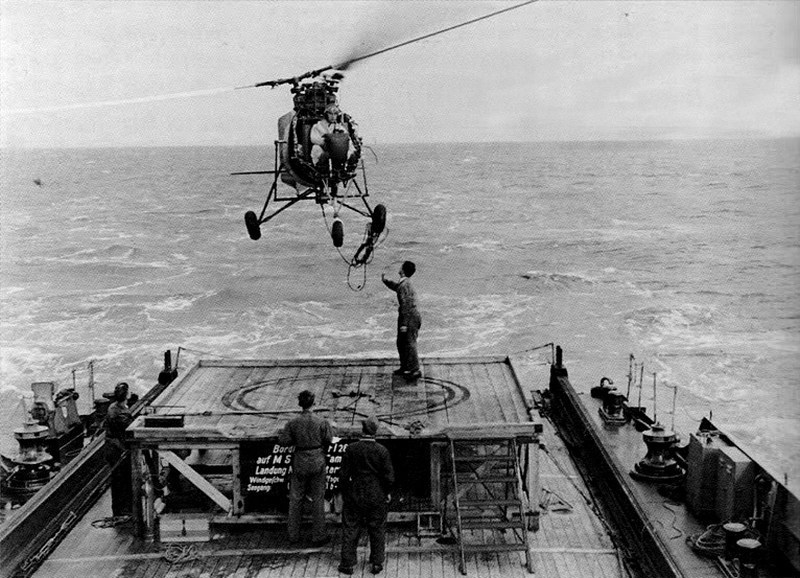 On September 1942 a Fl-282 Kolibri V12 version with registration CJ-SF, was initially tested by Anton Flettner's chief pilot Oberleutnant (Luftwaffe 1st Lieutenant) Hans E. Fuisting, aboard the Kriegsmarine's ship Greif', a 2000 ton aircraft salvage ship. Few weeks later, in October 1942, another two Fl-282 helicopters, one V6 version with registration GF-YF and one V10 version with CJ-SD registration, were delivered to Trieste with their personnel, including Hauptmann (Luftwaffe Captain) Klaus von Winterfeldt, Anton Flettners chief pilot Oberleutnant (Luftwaffe 1st Lieutenant) Hans E. Fuisting and a 3rd pilot (his name & rank are unknown) plus three mechanics for technical support. From November 1942 until February 1943, the Fl-282 V6 registered as GF-YF, had been extensively tested aboard the Kriegsmarine's minelayer Drach (Schiff 50, ex-Yugoslavian Zmaj) while operating in Aegean Sea, north of Crete, Greece, following the absence of RAF aircrafts in the area for few months. The second V10 Kolibri registered as CJ-SD, was a reserve machine that stayed ashore. The helicopter was operated from a 15 m² wide platform pad, while the ship was moving. It was no simple matter setting a helicopter down on the waving deck of a ship, so a special system was designed to bring the two vehicles together. A 10 meters long cable was attached to a swiveling fixture on the bottom of the helicopter. The pilot would bring the helicopter in to hover just out of ground effect over the platform and release the free end of the cable. Two men on the deck would grab the cable and hook it onto the winch drum, pulling the helicopter down to the deck. While this was going on the pilot applied enough power to keep the cable taunt, thus the helicopter took the waves in unison with the ship. The reverse procedure would be performed for take-off. A similar method is still used today for operating helicopters off of ships in rough weather. 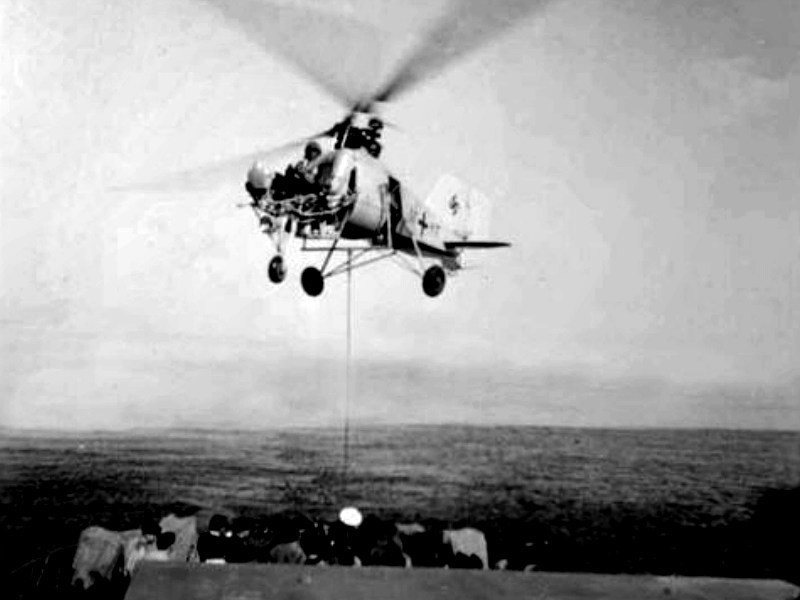 By 1943, the Fl-282s were routinely being used by the Kriegsmarine for convoy protection and reconnaissance. Usually they flew from platforms above the gun turrets of convoy escort vessels in the Aegean, Baltic and Mediterranean Seas, often in extreme weather conditions. The Flettner Fl-282s revealed control & performance qualities well above expectations and found to be especially valuable at dawn or dusk when fixed wing aircraft pilots did not have good visual contact in the poor light. As an important area of operations, the Mediterranean Sea offered the promise of worthwhile missions for the Kolibri and the tactical trials could be conducted into the most favourable weather conditions. As well, the U-617 submarine was also available to participate to the trials. During the day, helicopter crews could spot the submarine as deep as 130 ft. Once a sub was spotted the Kolibri could easily match the speed & course of the submarine, which was impossible for the fixed wing aircraft with stall speeds higher than the cruise speed of a submarine. The Fl-282 would then radio transmit the sub's position to the convoy and if a warship was dispatched to attack on sub, the helicopter would mark the target's position with a magnesium flash bomb or marker flares. The V9 helicopter registered as CJ-SC was the prototype for a version to be operated by the Navy from large submarines and designated as Fl-282 U (Umbau) Modified Model in Form of a Standing Cylinder version. Although the Fl-282 was designed so the rotor blades and landing gear could be removed and the helicopter stored in a compact area such as the pressure tank of a U-boat, there is no evidence that it was ever used this way. 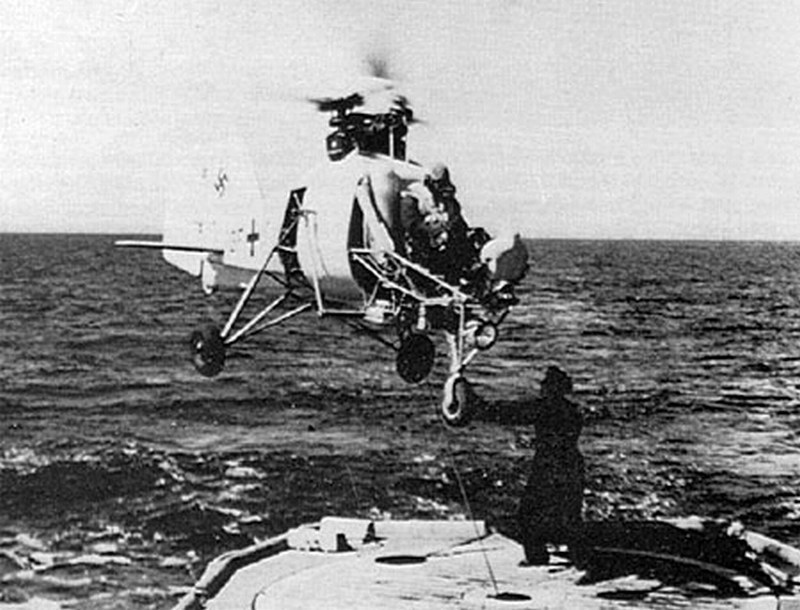 Further service trials carried out later in the Baltic Sea aboard the anti-submarine vessel KUJ 13 (type KUJ 41) from 24th April 1943 to 15th May 1943, in conjunction with the 21st U-boat training flotilla, as part of the Kriegsmarines ongoing exercises for sea missions in the area of Danzig Bay and the north tip of Gotland island. The fleet exercises involved underwater attacks on simulated convoys consisting of target vessels & escorts. Once, over a convoy, test pilot Hauptmann (Luftwaffe Captain) Klaus von Winterfeldt was able to make out all twelve (!!!) submarines that sent against convoy. 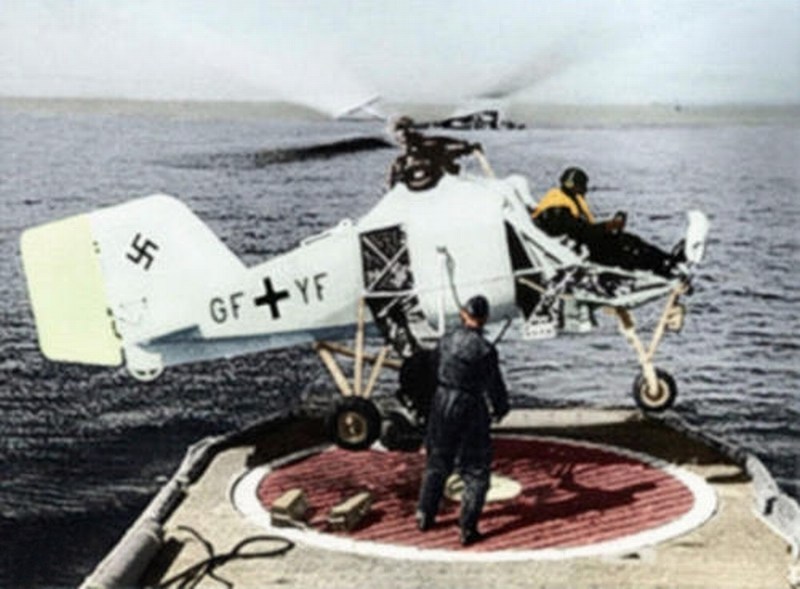 On May 3rd and 4th 1943, a special experiment took place in cooperation with the DVL's Institute for Marine Aviation. It involved towing tests with a 50 kg gliding body. The proposal originated from Hauptmann (Luftwaffe Captain) Klaus von Winterfeldt, director of the Erprobungs und Lehrkommando (Testing and Instruction Detachment) that time, who carried out the towing flights from an anti-submarine vessel in Gotenhafen. In addition to its role as a reconnaissance aircraft in support of the sub-chasers, armed with bombs the Fl-282 was also to participate actively in the anti-submarine role. Unfortunately, on May 10th 1943, Hauptmann (Luftwaffe Captain) Klaus von Winterfeldt (pictured in following photograph) run out of fuel, crashed in sea (35 nm NE from Christlansoya island) and killed, while flown the GF-YF registered V6 testing helicopter. He was posthumously promoted to Luftwaffe Major for his work in helicopter development. 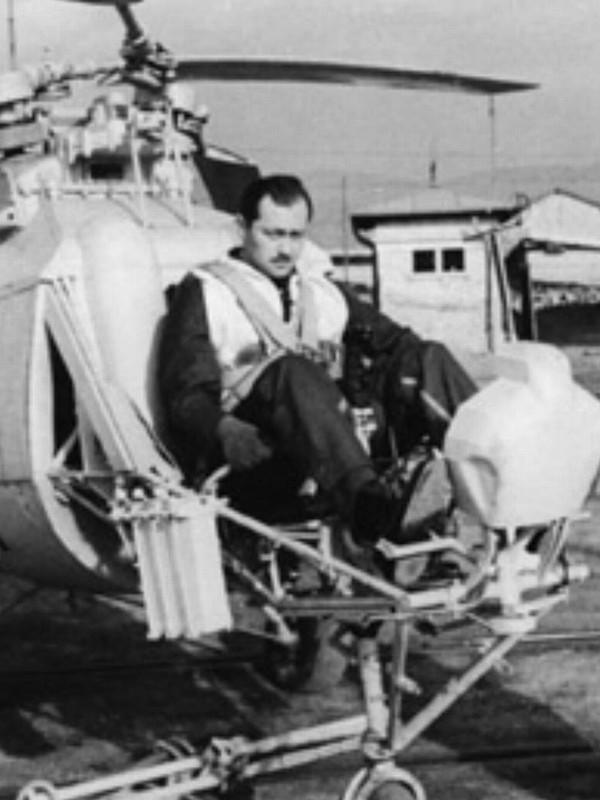 Düzenleyen Nick_Karatzides - 27/07/2018 Saat 12:04 |
|
 |
|
|
Nick_Karatzides
Üye 

Kayıt Tarihi: 06/06/2009 Aktif Durum: Aktif Değil Gönderilenler: 250 |
  Gönderim Zamanı: 10/08/2014 Saat 18:53 Gönderim Zamanı: 10/08/2014 Saat 18:53 |
|
However, as the War progressed, the Luftwaffe began considering converting the Kolibri for battlefield use. Until this time the helicopter had been flown by a single pilot, but by then a seat for an observer was added at the very rear of the craft, resulting in the V21 and later the V23 reconnaissance liaison versions with two seats for pilot and observer. These helicopters later proved a useful tool on multiple roles, used for picking up downed airmen, artillery spotting and other observation duties. It was similar to the naval helicopter, but a rearwards facing seat for the observer was positioned behind the rotor shafts. This made necessary the removal of the main fuselage fuel tank with consumable content 105 litres of 87-octane aviation gasoline. The standard fuel tank was removed and replaced by two un-protected, 25 litres cylindrical fuel tanks mounted externally on both sides of the pilot seat. The FuG 19 ultra short wave radio installation of the naval version was also replaced with a smaller and lighter short range radio. The naval versions one-man inflatable raft, the single-barrel flare pistol, the hand operated signal lamp and other sea survival equipment were also removed. Beginning in 1944, the Luftwaffe began to implement a program to provide a helicopter to each Wehrmachts independent artillery brigade.
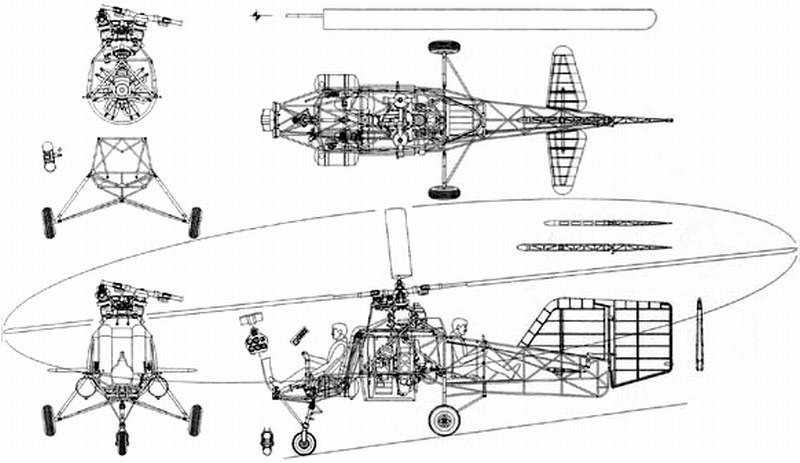
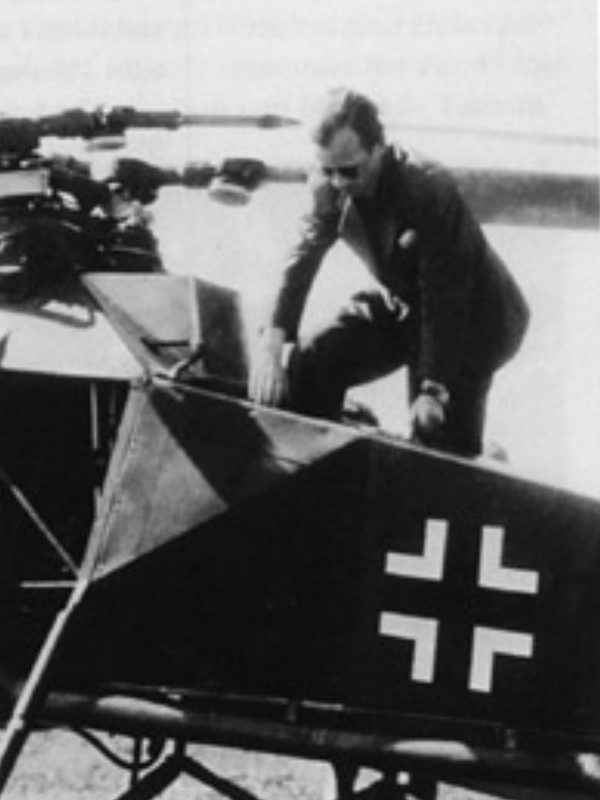
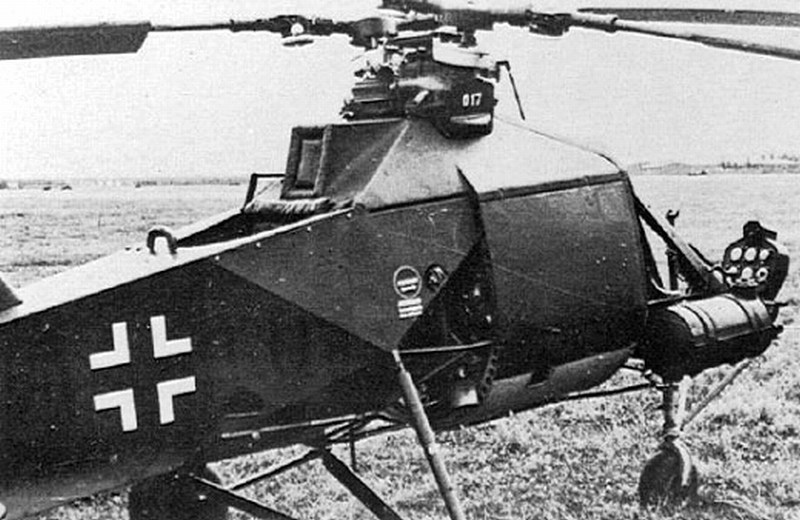 The twin seat Fl-282 V21 helicopter registered as CI-TU, as seen while been tested with two men in rear compartment plus pilot. Anton Flettner himself took part on these test flights sitting in the rear observers seat and company chief pilot Oberleutnant (Luftwaffe 1st Lieutenant) Hans E. Fuisting on the flight controls. 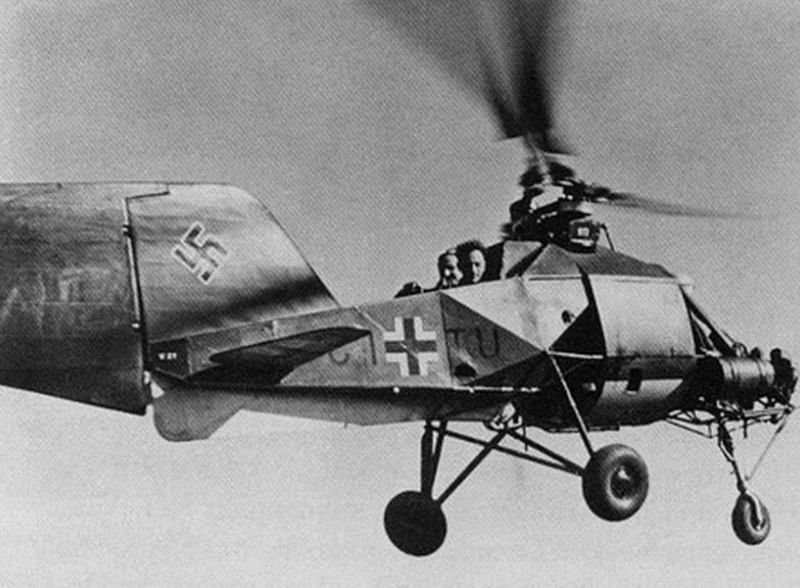
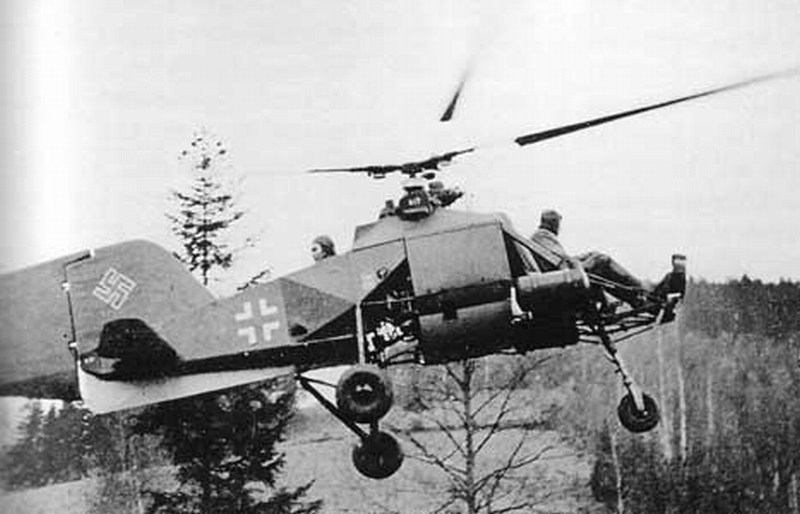
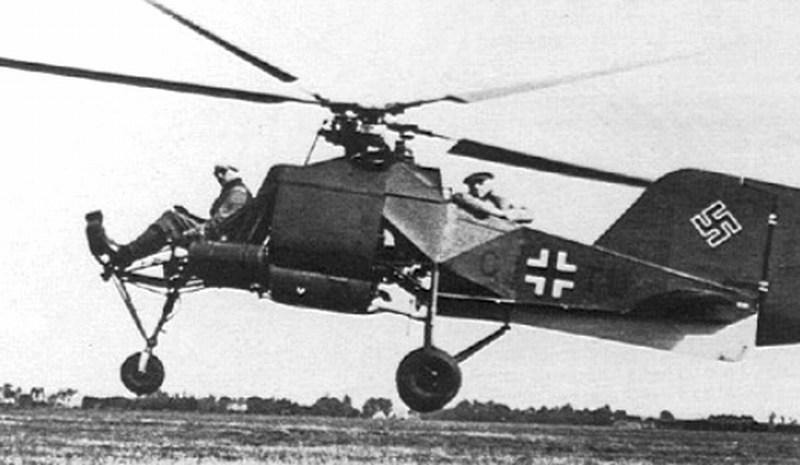 The V23 version had also two seats for pilot & observer, but differed from V21 because it was equipped with V-shaped stabilizer (similar to that of the Cierva C-30) and also had wooden cockpit sidewalls, as visible into following diagram. 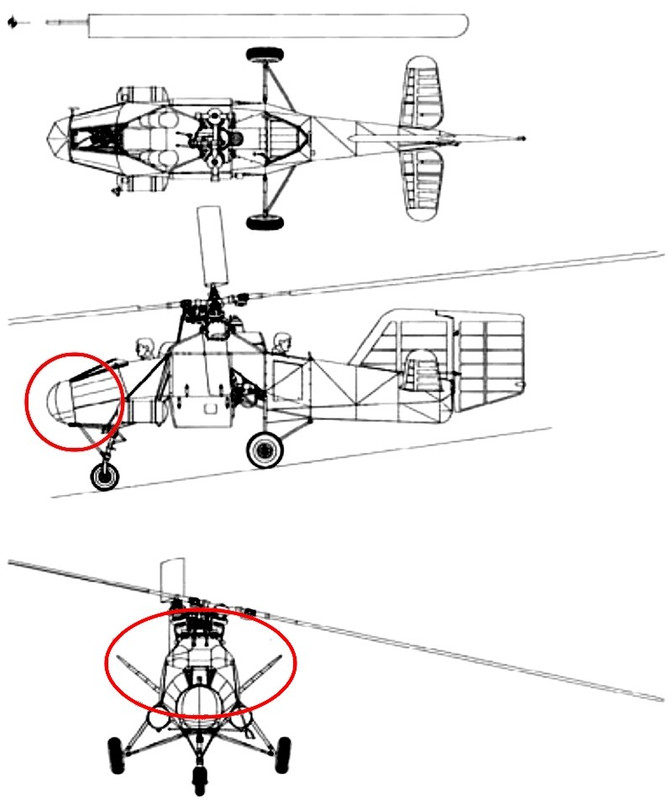 On June 22nd 1944 a mock combat between the Fl-282 V12 (registered as CJ-SF) with companys chief pilot Oberleutnant (Luftwaffe 1st Lieutenant) Hans E. Fuisting in controls and a FW-190 with pilot Oberleutnant (Luftwaffe 1st Lieutenant) Dieter Eisenlohr of Erprobungskommando (Testing Command) EKdo 25, took place at Schweidnitz, in order to investigate the chances of a fighter hitting a helicopter. A camera was installed in the wing of the FW-190 fighter, with the shutter release connected to the firing button. The combat was scheduled to last twenty minutes. During the first ten minutes, combat had to take place at altitudes above 330 ft (100 m). For the final ten minutes Kolibris pilot Hans E. Fuisting was advised that he could do as he wished. Camera film evaluation and both pilot written reports revealed that at altitudes more than 100 meters AGL (Above Ground Level) the fighter was able to get the helicopter in gun sights briefly but when near the ground, especially in difficult terrain, the fighter had little chance against a helicopter. The FW-190 pilot tried very hard and made the steepest possible turns to keep the helicopter into his gun sights. On the other hand, the Fl-282 helicopter pilot, only made slight evasive movements up, down or sideways so that he could escape from being into FW-190's gun sights. During the second part of the combat exercise, the Fl-282 helicopter simply vanished from the fighter, partly hidden between the trees as Hans E. Fuisting showed his mastery of nap-of-the-earth flying. FW-190s pilot Oberleutnant (Luftwaffe 1st Lieutenant) Dieter Eisenlohr's recollection of events is similar: ...At altitude above 330 ft (100 m) the Fl-282 seemed a small target clearly visible against the blue sky and I could partly compensate for Fuisting's evasive movements but during the second part of our combat, I had great difficulty spotting him in the meadows and forests around Schweidnitz. I twice spotted the Fl-282s because sunlight reflection on rotating blades & flat plexiglass panels of cabin and I had to make a 180° tight turn to try and get it in my gun sights... The June 1944 Monatsbericht (monthly report) of E-Stelle Travemunde noted: ...At present time, the evaluation of the film and the pilot reports have not arrived yet. At heights above 100 m the fighter was able to get the helicopter in its sights briefly. Near the ground, especially in difficult terrain, the fighter has little chance against a helicopter.... In following picture, the Fl-282 V12 (registered as CJ-SF) with partial plexiglass enclosure of the cockpit, as used on the June 22nd 1944 mock combat against a FW-190 fighter. 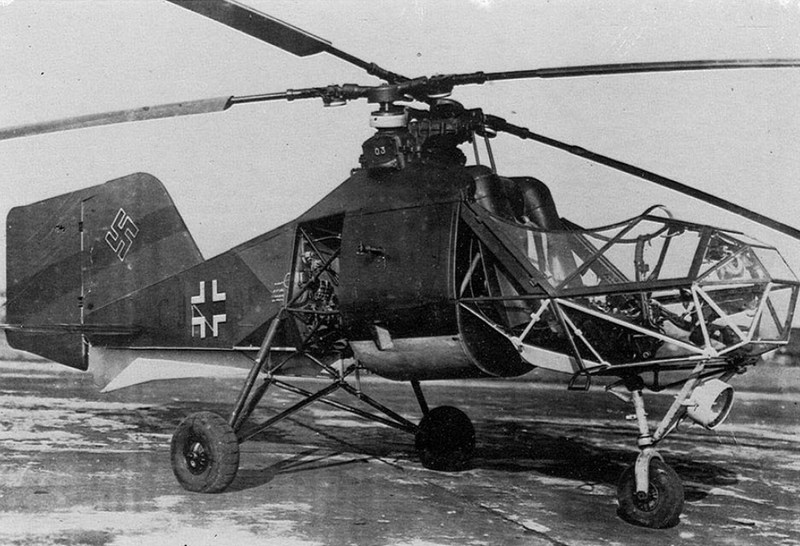 Vulnerability to gunfire was also investigated, whereby they proceeded on the assumption that the mathematical probability of a moving rotor blade being hit was much less than that of a fixed wing. Another consideration was that the helicopter could escape by making brief evasive movements, which the fighter could not follow. Furthermore, tests involving ground firing at the moving rotor blades were carried out, as the helicopter was felt to be more vulnerable to gunfire from the ground than from the air. An unmanned, tethered Kolibri was used; in spite of several hits in the rotor blades ground fire failed to bring down the helicopter. Good flight characteristics and easy handling in bad weather, led the German Air Ministry to issue a contract being given in 1944 to the BMW - Bayerische MotorenWerke for 1000 helicopters production. However, the factories based in Munich and Eisenach completely destroyed by the Allied bombing raids. The Flettner Johannisthal factory was also bombed and by the end of the War, this concern had completed only 24 operational helicopters (10 helicopters before 1943 plus 14 helicopters during 1943 & 1944). Due to the growing number of Allied air raids on Berlin, in August 1943 the company began transferring its operations to Schweidnitz in Silesia (approx. 50 km SW of Breslau); due to the deterioration of the transportation system the operation took several months. The Fl-282s on hand with the company were also flown to Schweidnitz to continue the test program. In February 1944 the workforce reached approximately 120 men, its highest level ever. With the Red Army approaching Silesia, the company moved back to Berlin Tempelhof in January and February 1945. Any systematic work or further production was of course out of the question under these circumstances. To make matters worse, two days after its arrival the rest of the company's equipment was destroyed in a night raid on Tempelhof. What was left of Anton Flettner Flugzeugbau GmbH was subsequently evacuated to Bad Tölz (Upper Bavaria); two Fl-282s were also flown there. The story Anton Flettner Flugzeugbau GmbH ended there with the arrival of US Army troops. 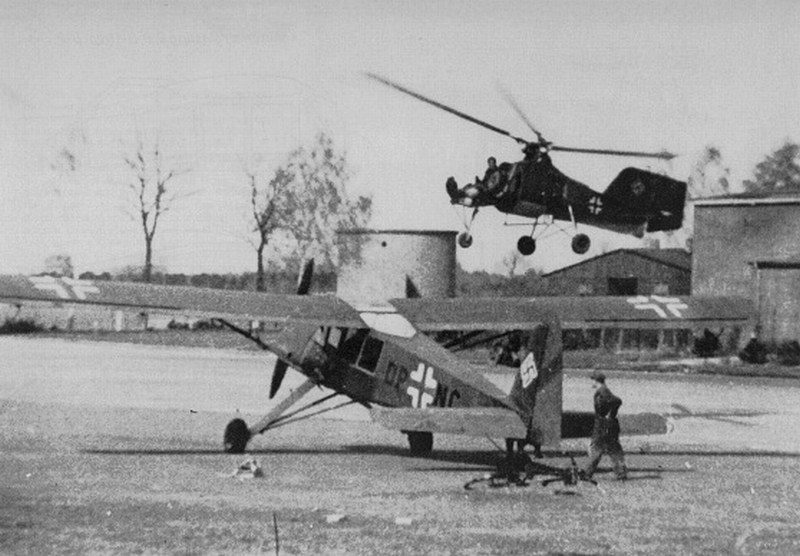 Düzenleyen Nick_Karatzides - 27/07/2018 Saat 12:04 |
|
 |
|
|
Nick_Karatzides
Üye 

Kayıt Tarihi: 06/06/2009 Aktif Durum: Aktif Değil Gönderilenler: 250 |
  Gönderim Zamanı: 10/08/2014 Saat 19:06 Gönderim Zamanı: 10/08/2014 Saat 19:06 |
|
Towards the end of World War II, most of the surviving Flettner Fl-282s were stationed at Rangsdorf AB & Ainring AB at Mühldorf, Bavaria, in their role as artillery spotters, assigned to TransportStaffel (transport squadron) TS40, the Luftwaffe's only operational helicopter squadron but gradually fell victim to Soviet fighters and anti-aircraft fire. During the last few months of the War the Luftwaffe's TransportStaffel TS40 squadron made many flights into and out of besieged and encircled towns transporting dispatches, mail and key personnel. It was possibly one of this unit's Fl-282s that flew Gauleiter (governor of Lower Silesia, Bavaria), Reichsführer SS and Chief of the Deutschen Polizei Karl August Hanke, to his escape out of besieged Breslau, on May 5th 1945, letting him escape to Prague, just one day before the capture of that city. It seems that it was the CI-TU registered Fl-282 V21, as the only available two-seater helicopter in squadron that date, since the other V23 (registered as CI-TW) two-seater, had been flown away and hidden at Bad Tölz few days earlier (on April 26th 1945 flown by companys chief pilot Hans E. Fuisting). By May 7th 1945, the Soviets were located less than 19 miles away from Fl-282 base and orders were received to transfer westward to avoid capture. On May 8th 1945, the ground element of TransportStaffel TS40 set out by road to Zell-am-See. Since there were no available pilots for the remaining Fl-282s, attempts were made to destroy the helicopters. Unfortunately, very few Fl-282s survived the War and only five found by the Allies in a serviceable condition for testing and evaluating. Also unfortunately, the Fl-282 helicopter was not so much photographed and there are not available photographic records of each one of these 24 helicopters produced. Actually, the total (known) photographs while serving under Kriegsmarines & Luftwaffes markings, might not exceed total 100 - in which more usual protagonists are the V6 (naval tests) and the V21 (double seats), both typical examples of the type but both did not survive the War.
Captured helicopters #1 & #2: The first two flyable helicopters were found intact by US Army troops. One V23 helicopter registered as CI-TW and one V15 registered as CJ-SI. These two Fl-282s, received the FE-4613 and FE-4614 US numbers after been captured and transported from Cherbourg Octeville, France to Newark New Jersey, USA (Operation Seahorse from July 12nd 1945 to July 19th 1945) aboard HMS Reaper D82 (a Bogue class escort aircraft carrier of US Navy, leased to the Royal Navy during WWII) for further investigation. The Fl-282 V23 Kolibri was a two-seater similar to the V21, with V-shaped stabilizer fins. Into following pictures, notice the exact same V23 helicopter as seen with pre-capture Luftwaffes CI-TW registration & swastika markings and later in USAAF service with the FE-4613 US numbers visible, after been captured. 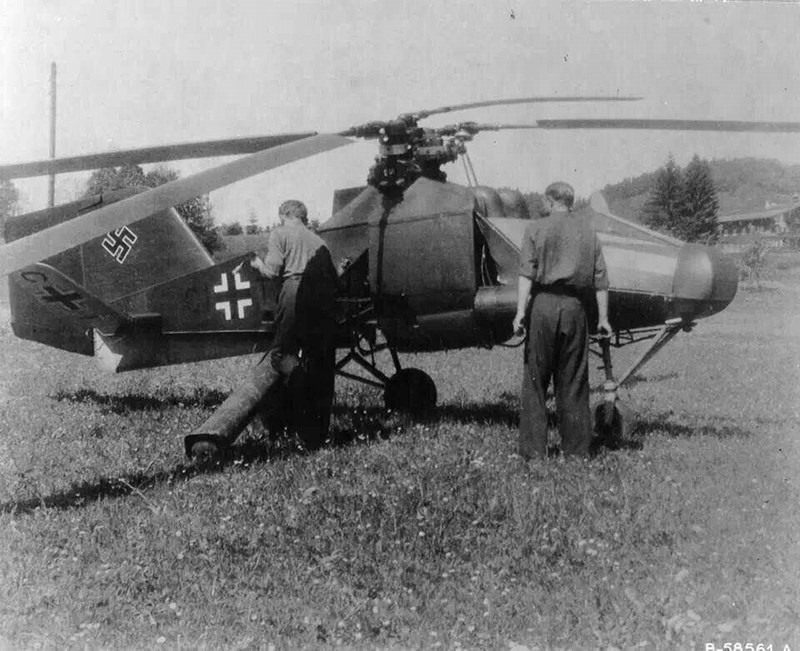
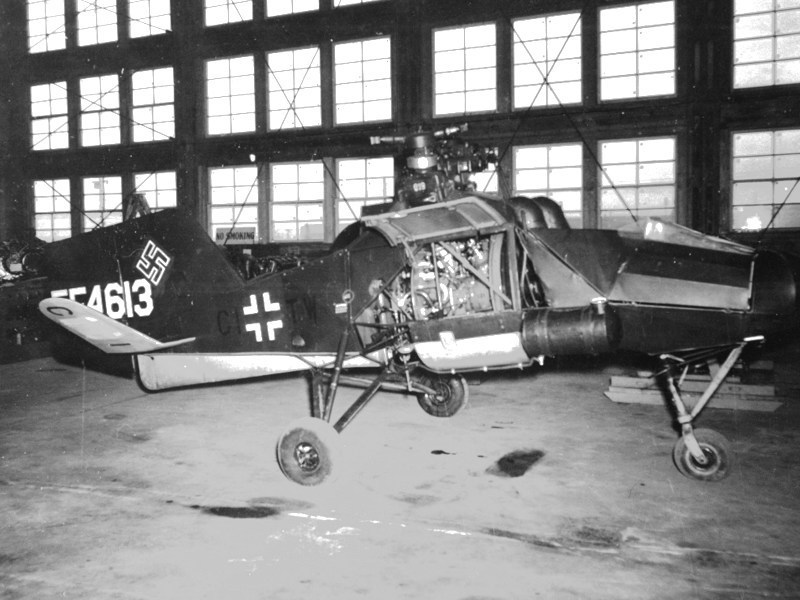 These two Fl-282s found & captured by the US Army troops were actually revealed by Anton Flettner himself. These two helicopters were flown from Schweidnitz to Bad Tölz, few days earlier, on April 26th 1945. The first (CI-TW registered V23) flown by companys chief pilot Oberleutnant (Luftwaffe 1st Lieutenant) Hans E. Fuisting, was hidden in a barn near Bad Tölz. The other (CJ-SI registered V15) helicopter flown by pilot Ernst Remain, was hidden in a mill near Penzburg, 15 km west of Bad Tölz. Following the arrival of the US Army forces, Anton Flettner reported the hiding places to the US military administration in Bad Tölz. The two US held Fl-282s were first taken to Munich and then to Stuttgart (Nellingen flugplatz) where been demonstrated to Allied officers by German pilots. Since USAAF officers were impressed with the helicopters, the captured Fl-282 V23 (CI-TW / FE-4613 registered) Kolibri transferred to St. Dizier, France on June 15th 1945 and been demonstrated by Anton Flettners chief pilot Oberleutnant (Luftwaffe 1st Lieutenant) Hans E. Fuisting. By December 1945, the Air Technical Intelligence collection and evaluation process for Luftwaffe technology officially transferred from London, UK to Wilbur Wright Field (officially Area B of Wright Patterson AFB) near Riverside Ohio, USA. 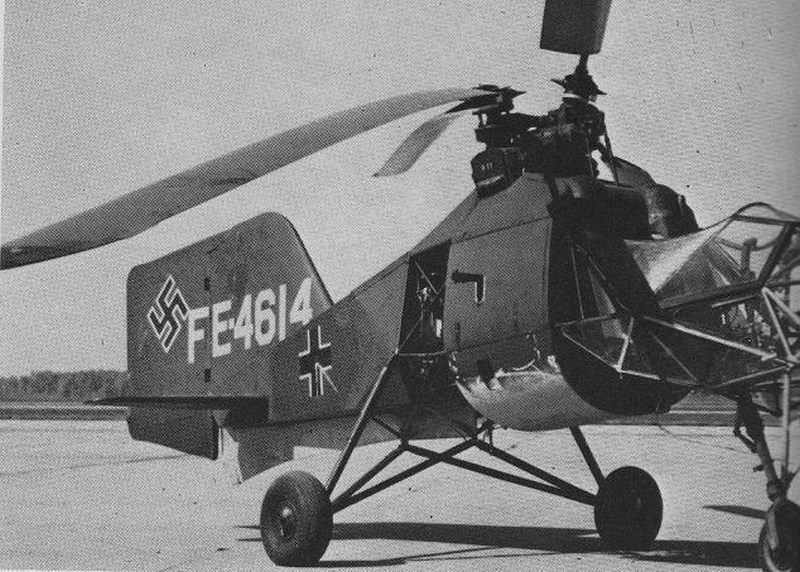
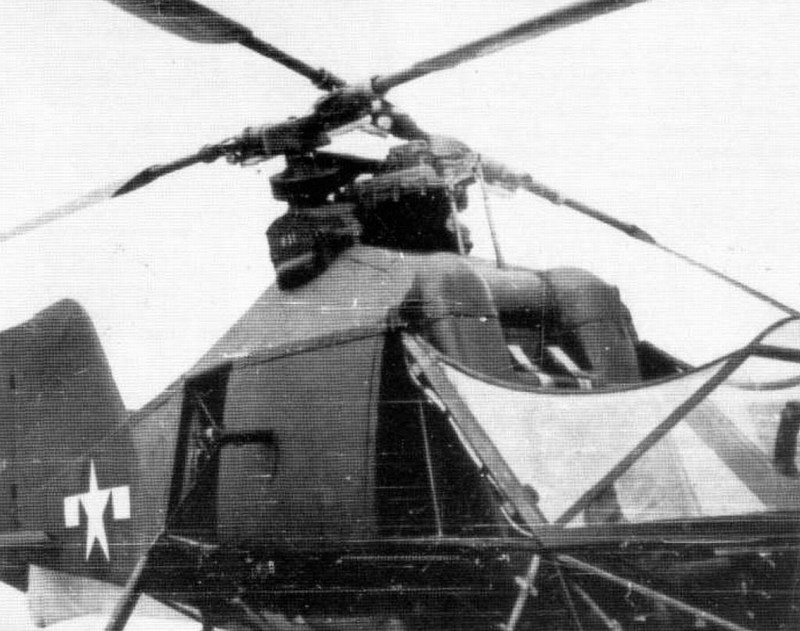
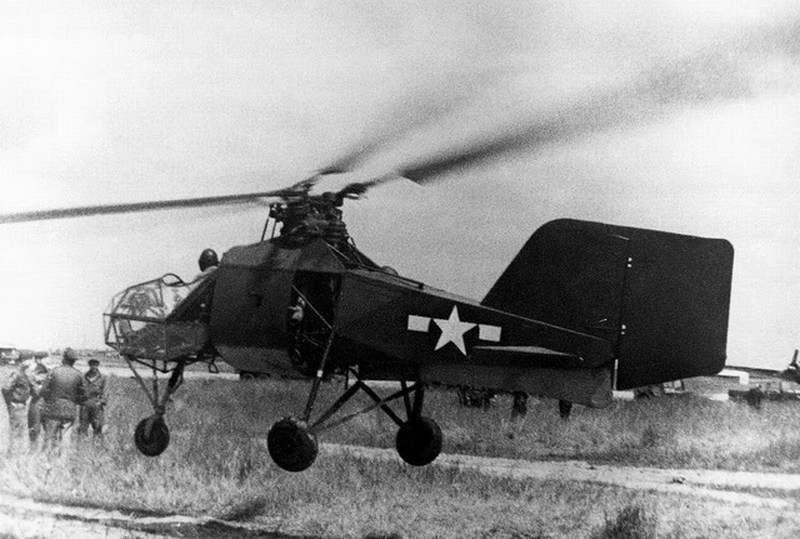 The evaluation flights in US (115 hours) were conducted at Benedict airport, Booth Corners Pennsylvania, USA by Prewitt Aircraft company test pilot Captain Dave Driskill. The objectives of the tests were to determine power requirements, control response, stability measurements & a comparison between a straight and a V-shaped stabilizer. In March 1946, the Air Technical Service Command became Air Material Command and it was around this time the FE numbers, assigned to captured Luftwaffe aircrafts, became T2 being the organization designator for Air Technical Intelligence. The prefix FE (meaning Foreign Equipment) changed to T2 but the inventory numbers did not change. This probably reflected the organizational changes taking place. Now days, the Fl-282 V15 is presented at the Cranfleld Institute of Technology. On the other hand, although the V23 helicopter was transported and placed at the National Museum of the United States Air Force, located at Wright Patterson AFB 6 miles NE of Dayton Ohio USA, its current whereabouts are unknown. 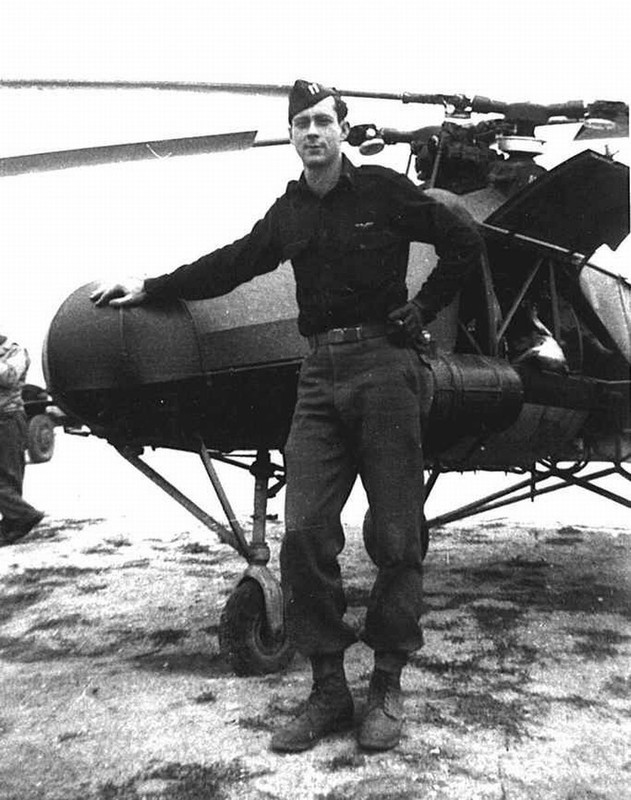
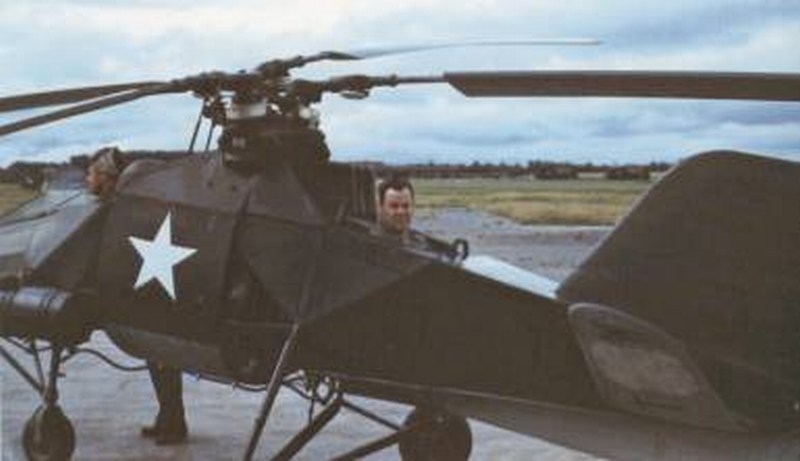
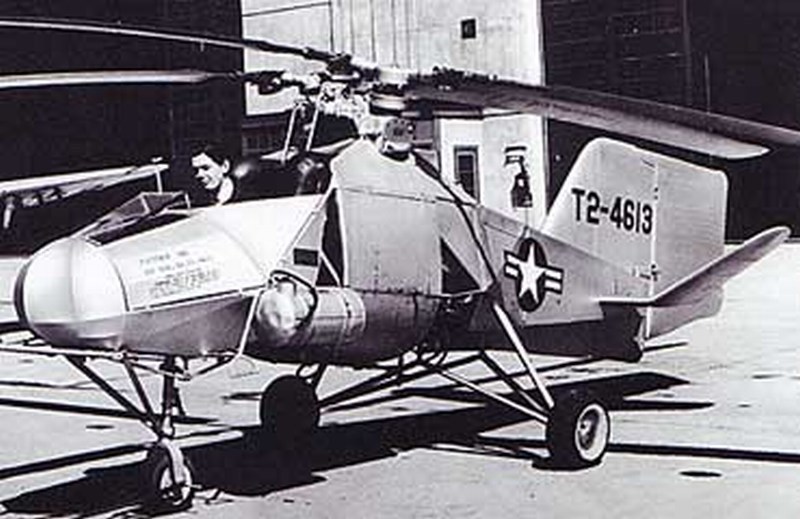 Captured helicopter #3: On May 9th 1945, pilot Max Schmid (pictured in following photograph) trying to escape capturing by Red Army, flown with the CI-TV registered V22 helicopter to his home village of Wallern (about 130 km SE of Vienna, Austria) to rejoin his wife & children. He landed at his family farmhouse backyard and with the help of his wife he managed to hide the helicopter in the barn. Unfortunately his flight did not go unnoticed and soon US troops arrived and arrest him. Max Schmid refused to fly and demonstrate the Fl-282 for the Americans. Instead he helped them dismantle the Kolibri for transport. Unfortunately, no more info is available about the fate of Max Schmids CI-TV registered Fl-282 V22 helicopter after the War. 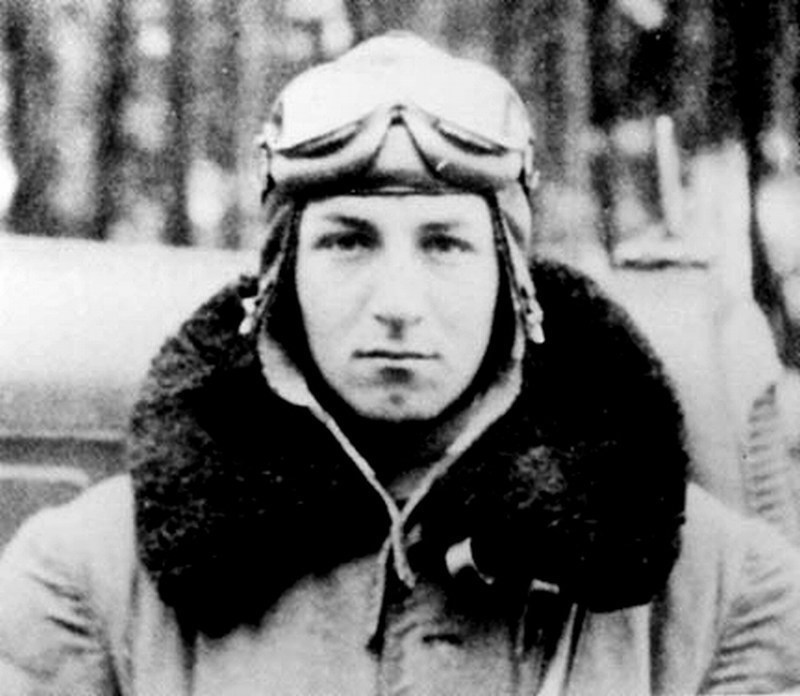 Düzenleyen Nick_Karatzides - 27/07/2018 Saat 12:05 |
|
 |
|
|
Nick_Karatzides
Üye 

Kayıt Tarihi: 06/06/2009 Aktif Durum: Aktif Değil Gönderilenler: 250 |
  Gönderim Zamanı: 10/08/2014 Saat 19:22 Gönderim Zamanı: 10/08/2014 Saat 19:22 |
|
Captured helicopter #4: It is reported that another Fl-282 helicopter which had been assigned to TransportStaffel TS40 was captured at Rangsdorf by Red Army forces in serviceable condition and later transferred to USSR for further testing & evaluation. Judging by the following pictures, its a B-0 series (without partial plexiglass enclosure of the cockpit), single seat helicopter and could possibly be the V13 (CJ-SG registered) or the V14 (CJ-SH registered) or the V16 (CJ-SI registered) or the V18 (CJ-SL registered) helicopter. The first two helicopters should be excluded because Luftvaffes files reveal that the V13 & V14 were both unserviceable & grounded that time (V13s rear fuselage and V14s rotors removed to be used as spare parts on other helicopters). This means that the pictured Soviet captured Kolibri might was the V16 or the V18 helicopter (both previously assigned to Staffel 1/196 at Pillau AB and Grouppe 3/196 at Kiel). Another possible answer for the mysterious helicopter could be the V11 (registered as CJ-SE) property of Anton Flettner Flugzeugbau GmbH company and used as testbed, later transferred to TransportStaffel TS40 stationed at Rangsdorf AB, but it was also reported to be grounded because had no engine installed that time. On the other hand, there is a possibility that the helicopter appeared to be captured by Soviets, could be a B-1 series machine, for example the V12 (CJ-SF registered) helicopter survived until the end of WWII, with the cockpit glazing removed by Soviets later. Keep in mind that the V16 helicopter was also considered as the Soviet captured Kolibri by RS Models, also pictured on their 1/72 scale Flettner FL-282 B-0 Kolibri model (companys code 92083) instructions sheet. According to RS Models, the V16 was transferred to Sukovskoje, USSR and evaluated until 1947. Anyway, since no more info is available about the Soviet held Fl-282 helicopters fate after the WWII, we cannot be absolutely sure for a positive ID.
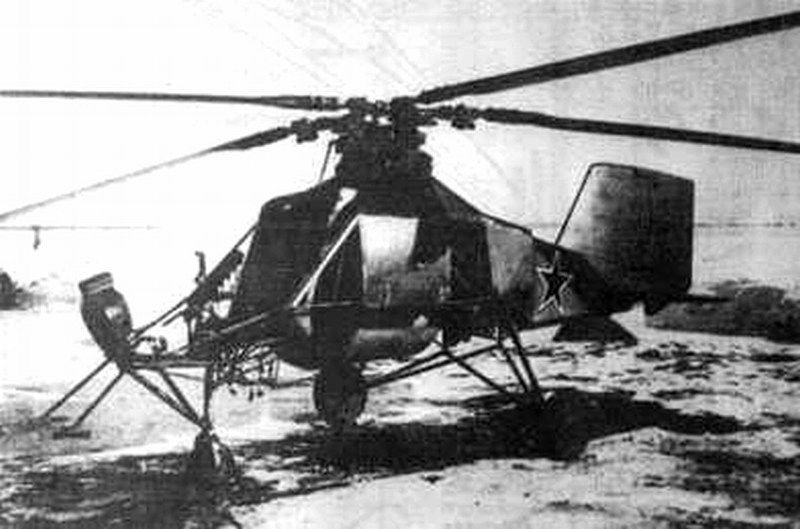
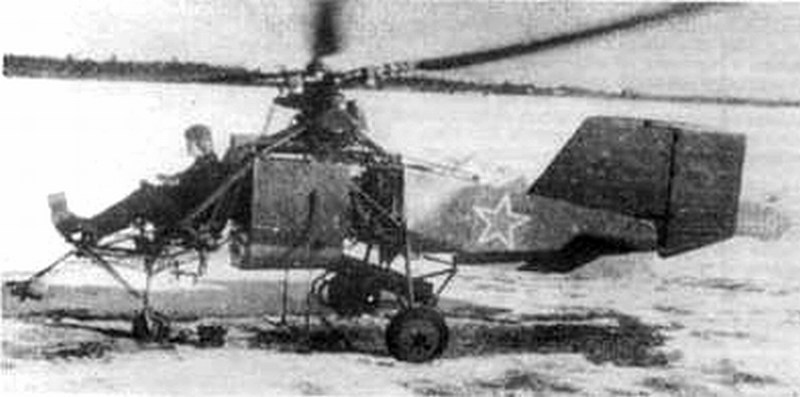 Captured helicopter #5: Finally, a fifth Fl-282 V20 helicopter (registered as CJ-SN) previously assigned to Staffel 1/196 at Pillau AB, found & captured by the British Army in good condition. For some unexplained reason, the helicopter been brutally disassembled and some parts of it ended up as souvenirs. The doped fabric ripped away & removed from fuselage, the horizontal stabilizer fins mysteriously stolen, the clipped rotor blades cut off and are never seen again since that day. The remaining framework wreckage with upper rotor transmission, transferred back to UK as a War trophy, on late May 1945. Notice the 04 which indicates the serial number of the upper rotor transmission as pictured right after been found and next photographs as finally disassembled & transferred on a truck by British troops as War trophy. Upon arrival in UK, this exact helicopter Fl-282 V20 relic became property of the Cranfield College of Aeronautics until mid 1960ies, when sold to Midland Air Museum. Now days, the captured V20 helicopter fuselage framework parts with upper rotor transmission and what left of the chopped (once full-length) rotor blades, are presented at the Midland Air Museum situated just outside the Baginton village in Warwickshire, UK and is adjacent to Coventry, UK airport. Unfortunately, many parts are still missing and the doped fabric cover & rotor blades never been restored. 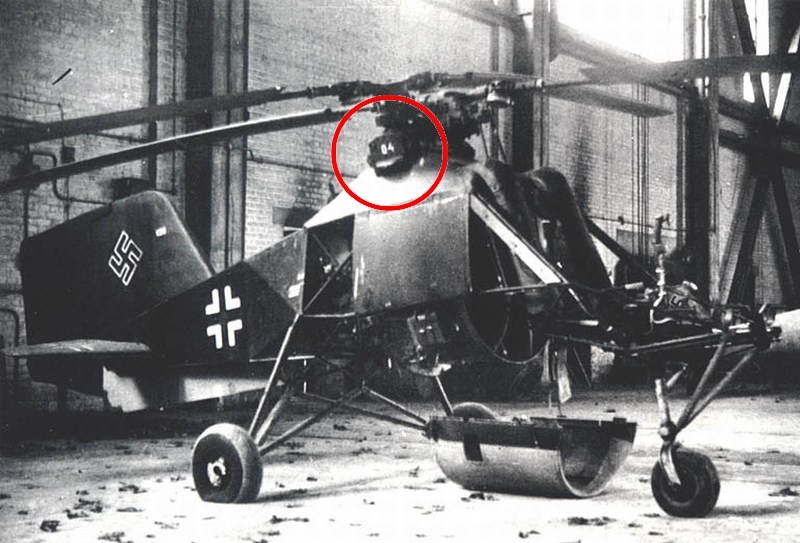
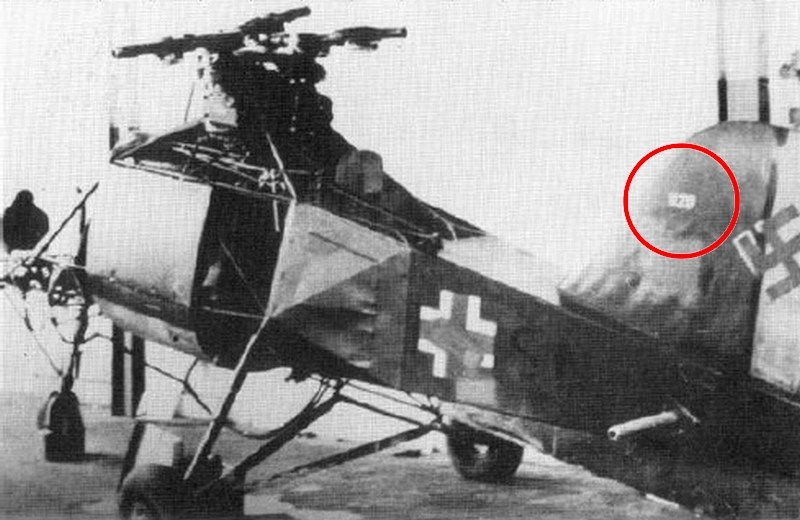
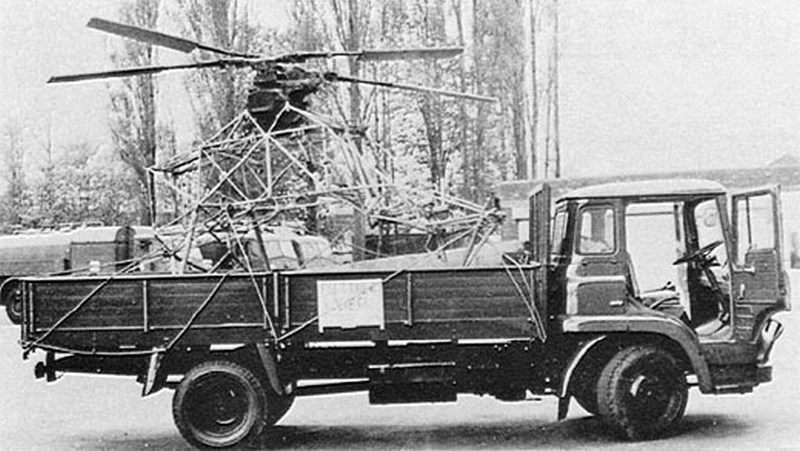
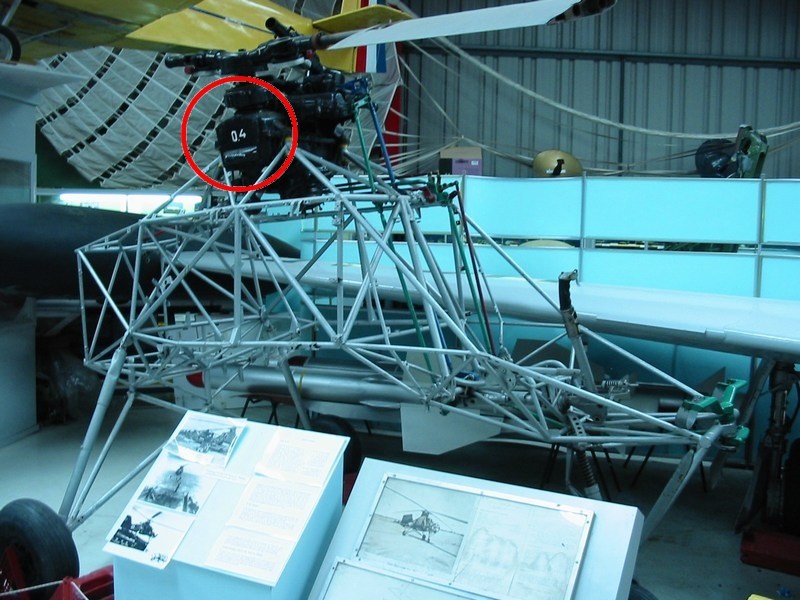
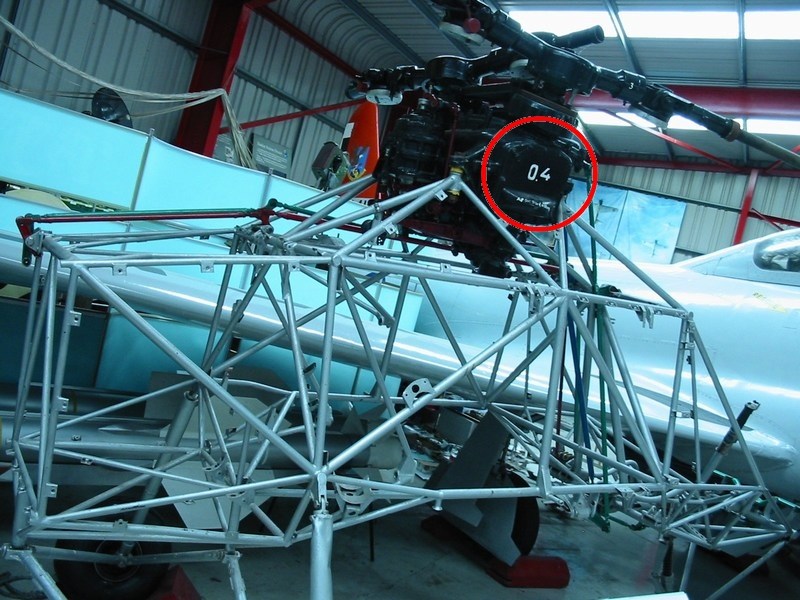 The technical data & general characteristics are: - Type designation: Flettner Fl-282 V21 Kolibri, - Country of production: Germany, - Usage: ASW / Reconnaissance helicopter, - Crew: 1 pilot & 1 observer (on V21 & V23 versions), - Year of construction: 1940 - 1945, - First flight: October 30th 1941 flown by test pilot Ludwig Hoffmann, - Length: 21 ft 6 in (6.56 m), - Height: 7 ft 3 in (2.20 m), - Rotor diameter: 2 x 39 ft 3 in (11.96 m), - Rotor area: 2418.5 ft² (224.69 m²), - Rotor turns: 175 rpm for best cruising / 180 rpm at takeoff, - Rotor blade chord: 11.42 in, - Rotor loading: 1.81 lb/ft² (8.84 kg/m²), - Powerplant: 1 x Bramo Siemens Halske SH-14A, 7-cyl aircooled radial engine of 119 kW (160 hp), - Weight empty: 1676 lb (760 kg), - Weight max takeoff: 2205 lb (1000 kg), - Armament: 2 x 5 kg explosive bombs or magazine for 4 smoke buoys, - Fuel tank capacity: 27.8 gal (105 lt) if pilot only / 17.2 gal (65 lt) if both pilot & observer, - Fuel consumption: 8.5 gal/h when flying 60 km/h (economic cruising speed), - Speed maximum forward: 93 mph (150 km/h) at sea level, - Speed maximum backward: 30 mph (48 km/h) at sea level, - Speed maximum sideways: 20 mph (32 km/h) at sea level, - Speed maximum gliding as autogyro: 60 mph (97 km/h) at sea level, - Range operational: 186 miles (300 km) if pilot only / 112 miles (180 km) if both pilot & observer, - Endurance operational: 1.5 to 3 hrs depending on cruising speed & altitude, - Ceiling service: 10827 ft (3300 m), - Ceiling hover: 984 ft (300 m), - Rate of climb: 299 ft/min (1.52 m/s). 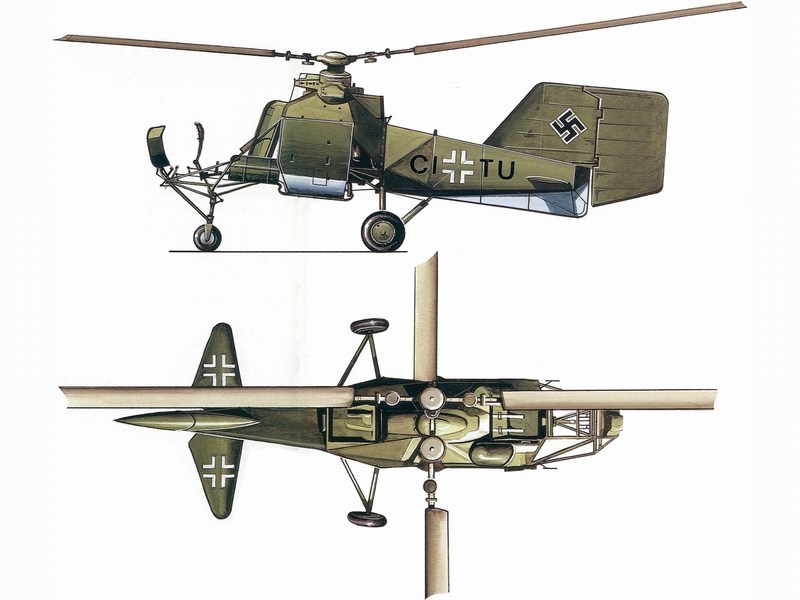
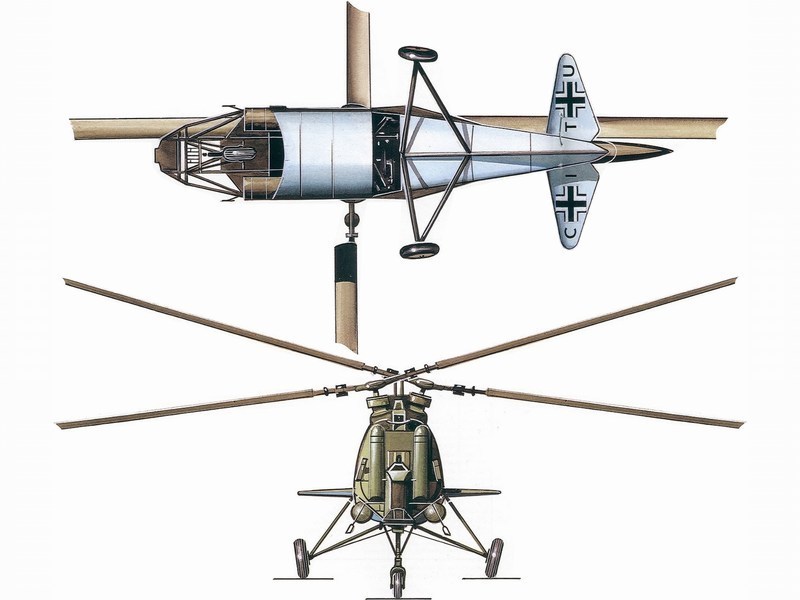 Düzenleyen Nick_Karatzides - 27/07/2018 Saat 12:07 |
|
 |
|
|
Nick_Karatzides
Üye 

Kayıt Tarihi: 06/06/2009 Aktif Durum: Aktif Değil Gönderilenler: 250 |
  Gönderim Zamanı: 10/08/2014 Saat 19:26 Gönderim Zamanı: 10/08/2014 Saat 19:26 |
|
Before start building a new scale model, I always try to study as much as possible the object of construction. Any available references such as technical manuals and detailed photos always help during building process. As described into my previously uploaded WIPs into this forum (feel free to have a look on the IS-A Salamandra glider and the Wallis WA-116 autogyro 3D printed models under 1/18 scale), the plan is to design a detailed CAD file and then print it, on a 3D replicator. Following this method helps a lot and gives the opportunity to scratchbuild almost anything, under any scale, within short time. The 3D printing technology introduction into scale modelling and free access to the average modeller is a great evolution in the hobby and a creative tool that helps us to build better and more realistic models. Certainly the new technologies and gadget tools in the hands of talented enthusiasts open new horizons and provide almost unlimited potentials on scale model building. 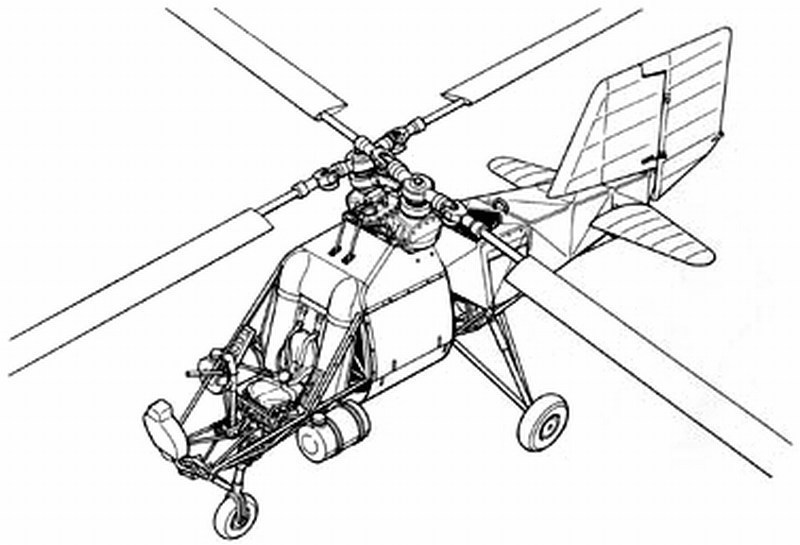 Because the detail complexity of the model, the present Kolibri project took approx 150 hours of computer work, to CAD design within a hundredth of a mm accuracy, scale into correct 1/18 size and then digitally cut the helicopters compartments into virtual pieces, having always in mind that the later 3D printed parts, should perfectly fit and finally become a fine scale model. Most amazing part is that after the CAD file is ready, the model can be produced under any scale, as many times as you like, just by clicking a button. And voilà, a new digitally created Flettner Fl-282 Kolibri model is ready to be forwarded to the 3D replicator and become an actual physical object under 1/18 scale, within short time. 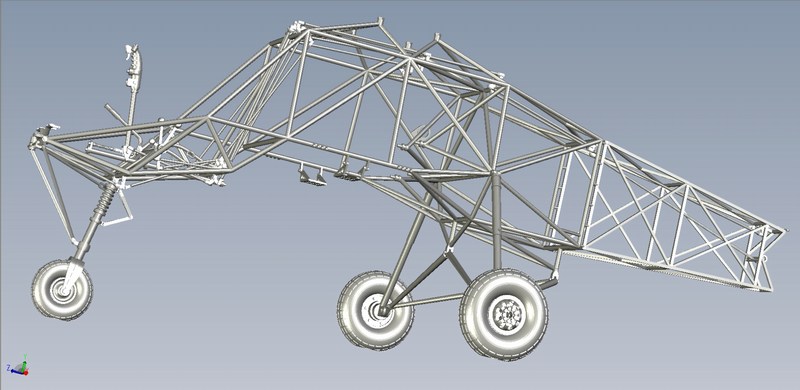
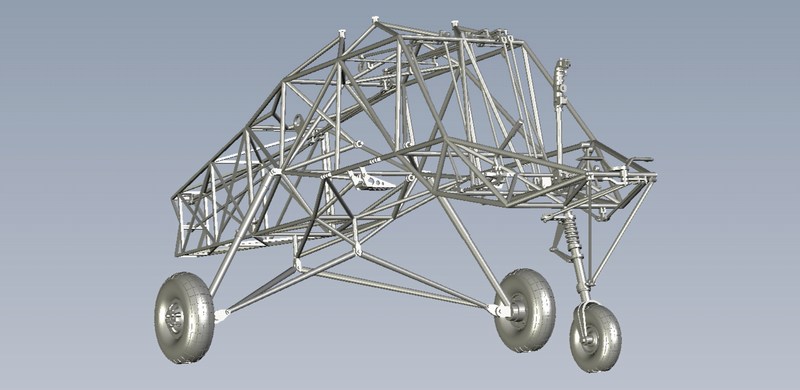
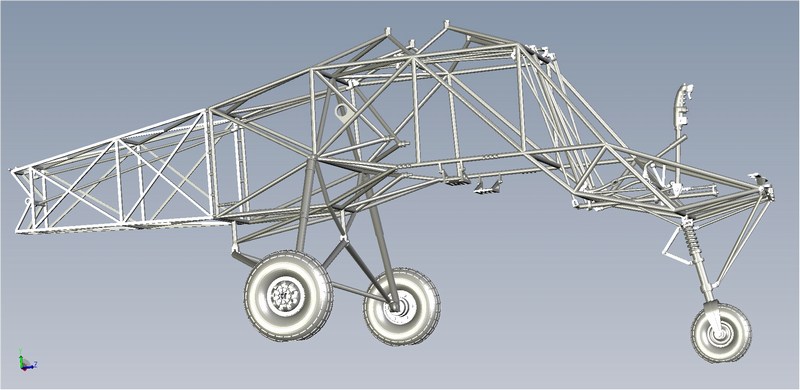
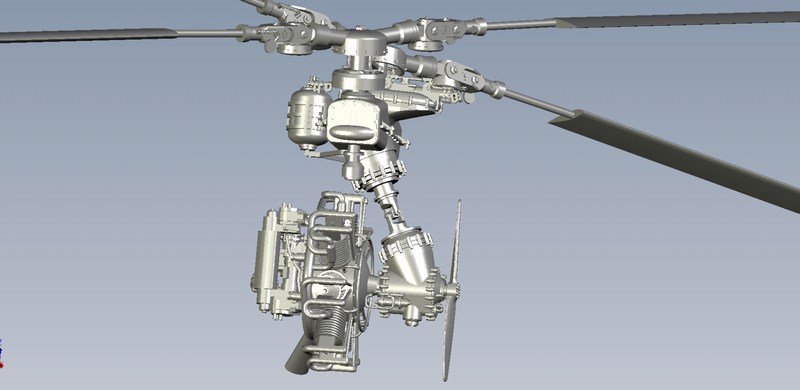
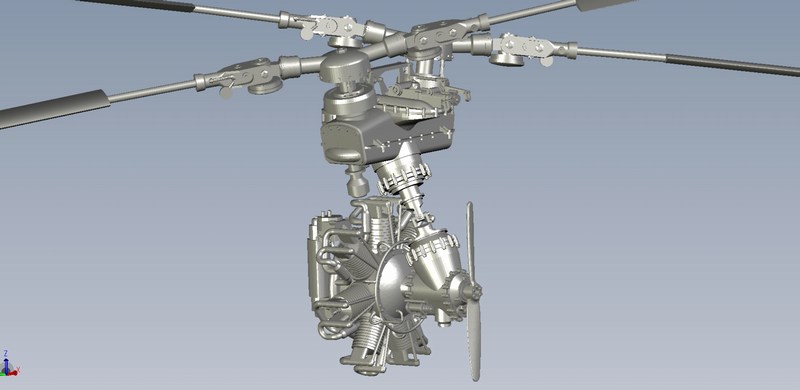
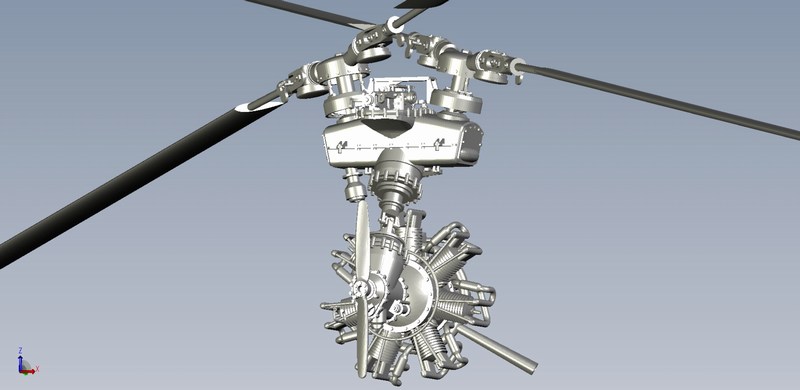
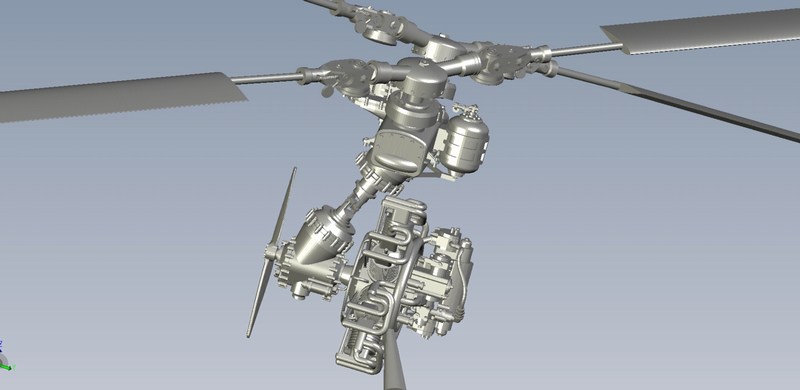 Düzenleyen Nick_Karatzides - 27/07/2018 Saat 12:07 |
|
 |
|
|
Nick_Karatzides
Üye 

Kayıt Tarihi: 06/06/2009 Aktif Durum: Aktif Değil Gönderilenler: 250 |
  Gönderim Zamanı: 10/08/2014 Saat 19:41 Gönderim Zamanı: 10/08/2014 Saat 19:41 |
|
This is the complex of intermeshing rotor gearbox. It turned out (as happened in the actual helicopter) that it was the hardest and most complicated part to build, because it was not easy for me to get a technical manual describing the gearbox in detail. Fortunately (thanks to Deutsches Marinemuseum), I managed to get access to blue prints and some detailed photographs, which helped me a lot to understand exactly how it was in reality and to ascribe it as accurate as possible to a scale model part. Because I was never completely satisfied with outcome and had to delete it and start over again and again few times, this damned thingy took me more than 25% of total CAD designing time.

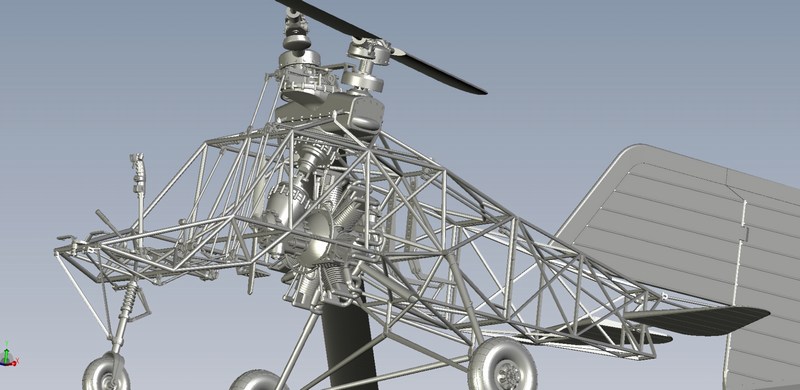
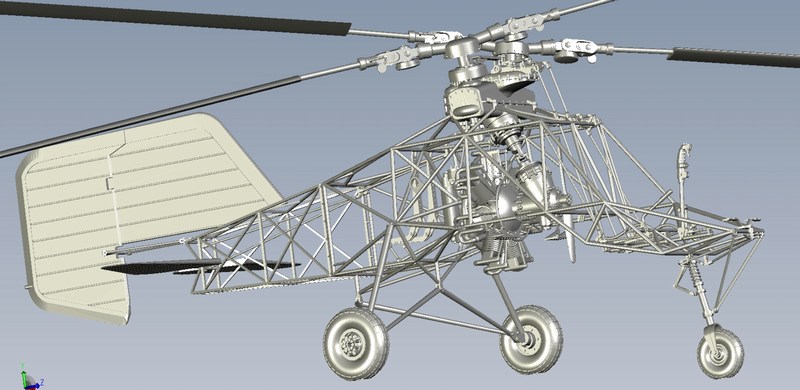
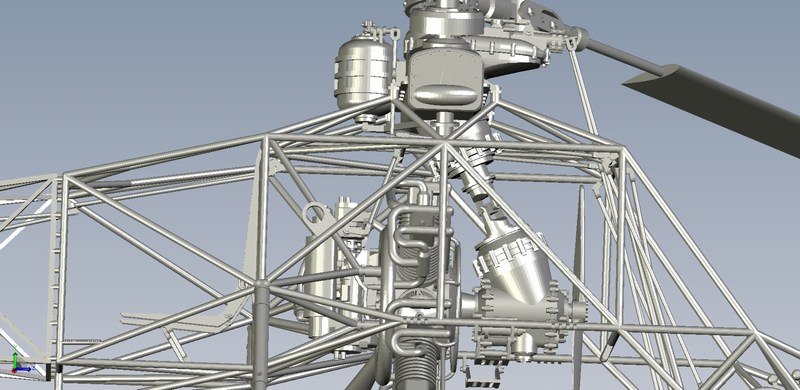 Since the oval cross-sectioned central fuselages outer skin consists of removable doors, hoods & sliding panels, I designed the CAD file such way to set all hatches in opened position and present it as during maintenance. For this reason, the 7-cylinders radial engine can be removed from helicopter and be placed nearby on a wheeled stand. Actually, by this way (not necessarily planned to create some diorama scene) the models observer can easily have a closer look inside the helicopters belly and also check detail on the (visible by any angle) engine details same time. 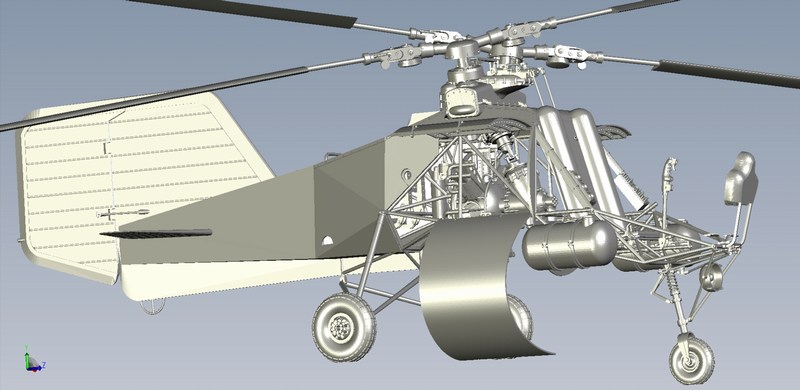
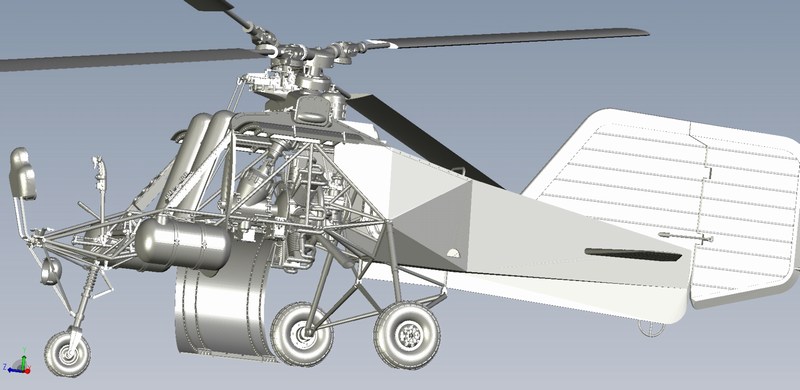

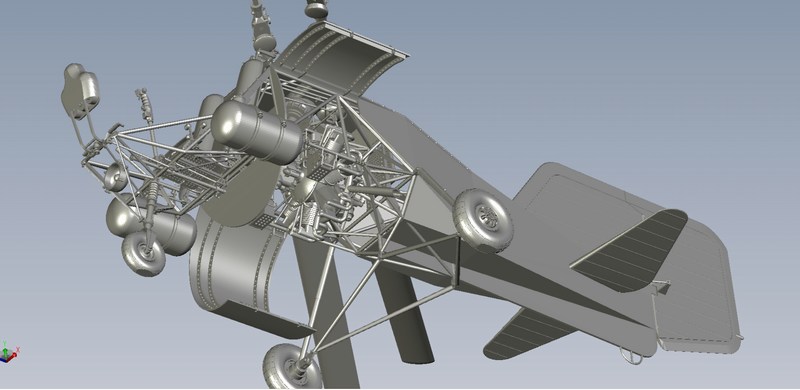
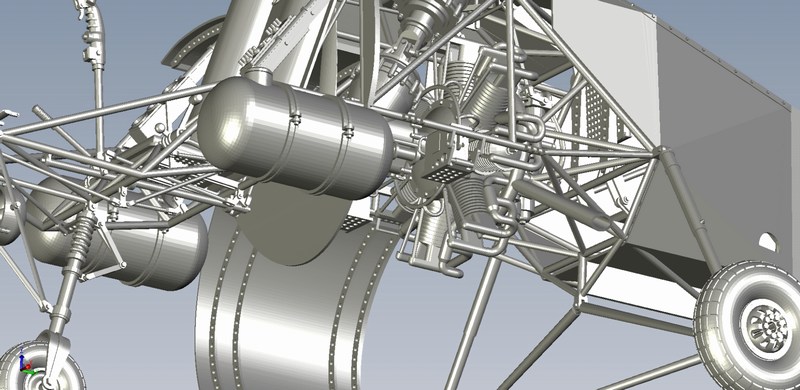
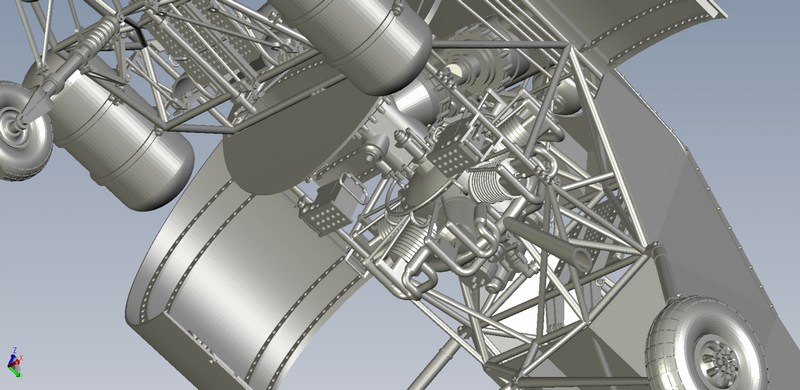 Düzenleyen Nick_Karatzides - 27/07/2018 Saat 12:08 |
|
 |
|
|
Nick_Karatzides
Üye 

Kayıt Tarihi: 06/06/2009 Aktif Durum: Aktif Değil Gönderilenler: 250 |
  Gönderim Zamanı: 10/08/2014 Saat 21:06 Gönderim Zamanı: 10/08/2014 Saat 21:06 |
|
The biggest part of the kit are the 4 rotor blades measuring approx 28 cm long each. The fuselage was CAD designed such way and later 3D printed into two main section parts with all included truss-type welded tubes and drive shaft rods with universal joints inside. That was mostly preferred for me, because all basic parts should be accurately pre-installed in place without any glue, putty, sanding etc. On the other hand, that could arise some minor difficulties while painting, but I think that proper masking & airbrushing could lead on good results.
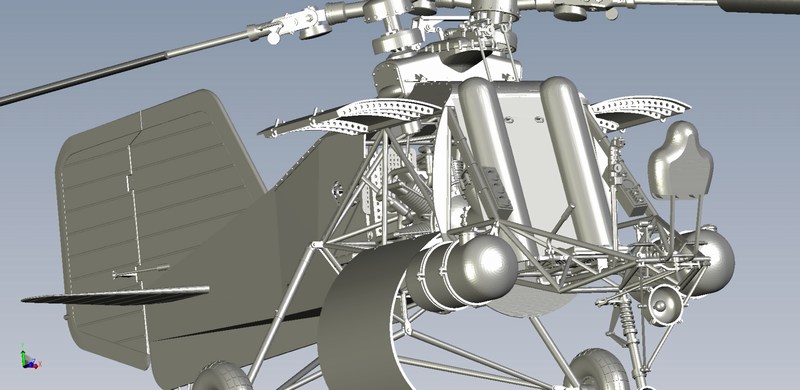
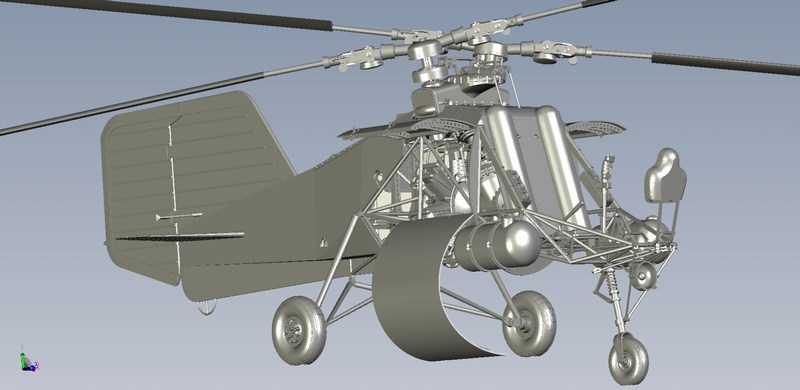
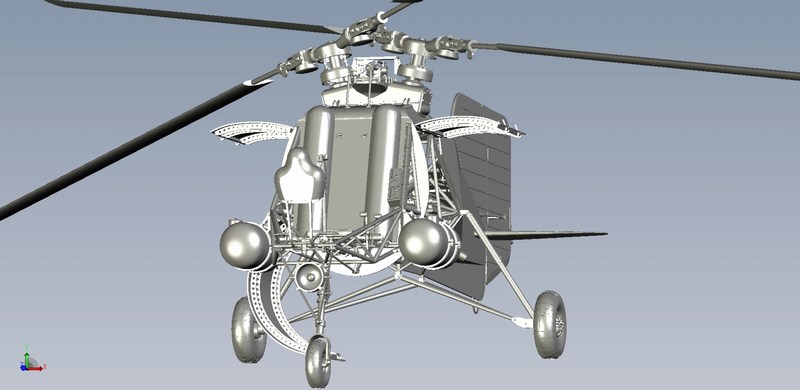
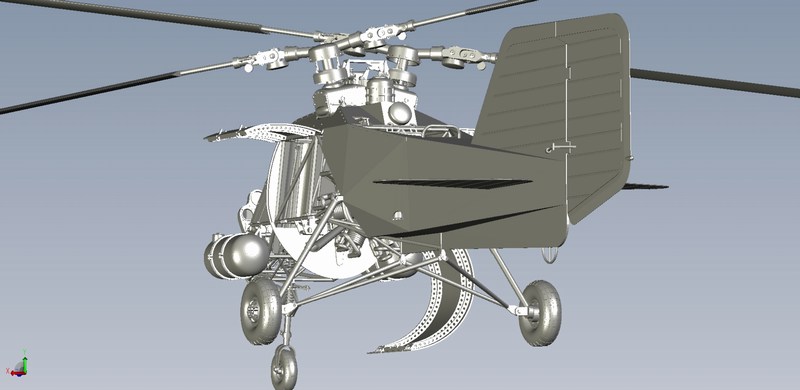
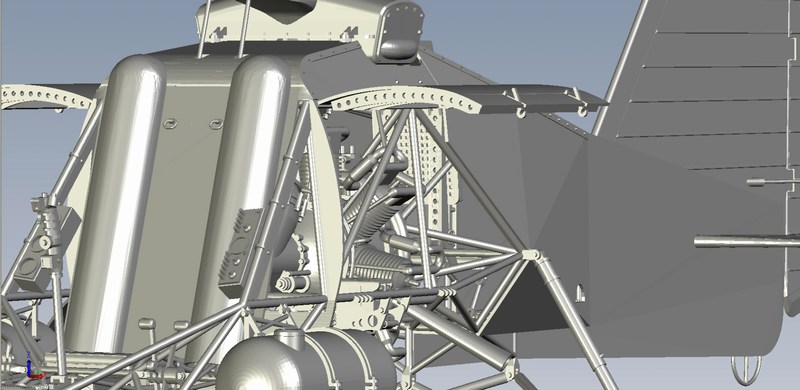 Düzenleyen Nick_Karatzides - 27/07/2018 Saat 12:08 |
|
 |
|
|
Nick_Karatzides
Üye 

Kayıt Tarihi: 06/06/2009 Aktif Durum: Aktif Değil Gönderilenler: 250 |
  Gönderim Zamanı: 10/08/2014 Saat 21:40 Gönderim Zamanı: 10/08/2014 Saat 21:40 |
|
The doped fabric cover over the truss-type welded tubes & wooden ribs is about 0.4 mm thick (in some special areas about 0.7 mm). Thinking as a rivet counter, this 0.4 to 0.7 mm thick fabric cover could be considered as an out-of-scale unforgivable mistake, having always in mind that it does represent a fabric material and it should normally be as thin as the air. On the other hand, the whole construction should be structural reinforced somehow and making the fuselage skin even thinner than 0.4 mm, might result a major building failure. Anyway, I think that 0.4 mm is just fine, considering that all the well known Tamigawas mass produce and sell model kits with much more thick fuselage skins than my custom made Fl-282 and no rivet counter complains about it. Right?
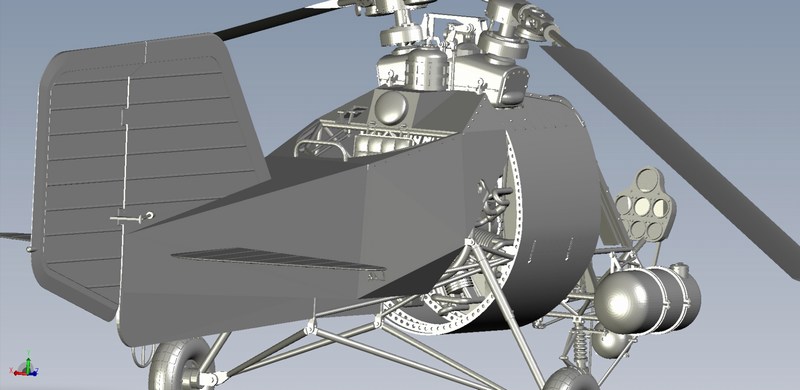
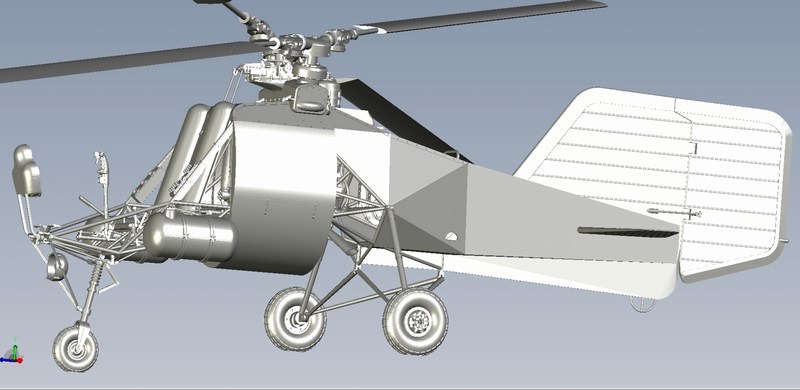
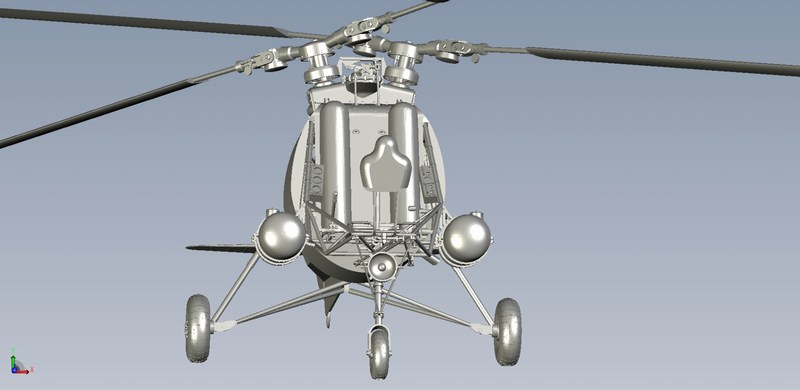 Engine throttle & rotor collective levers with panels for auxiliary gauges placed on each side of pilots seat. Electric wiring for switches and gauges cables will be added later. 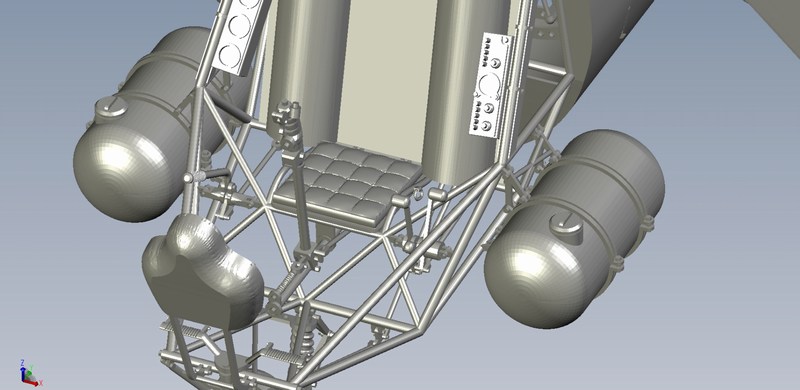
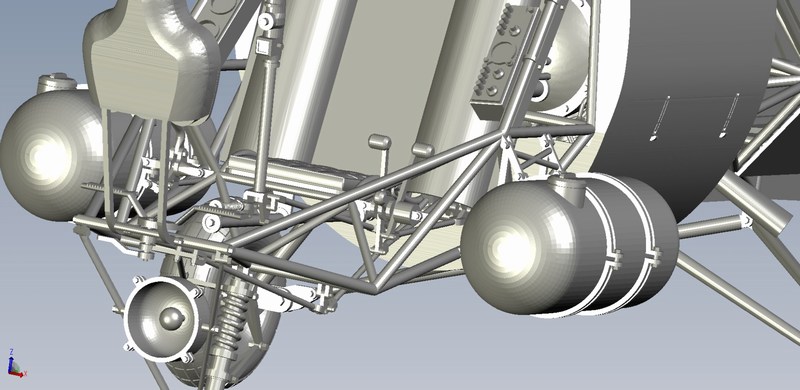
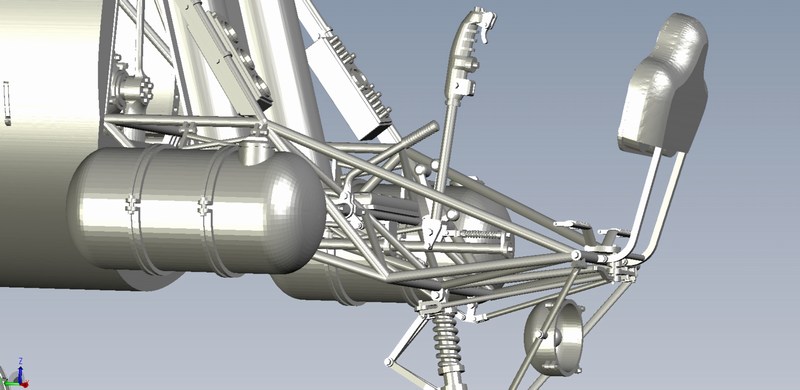
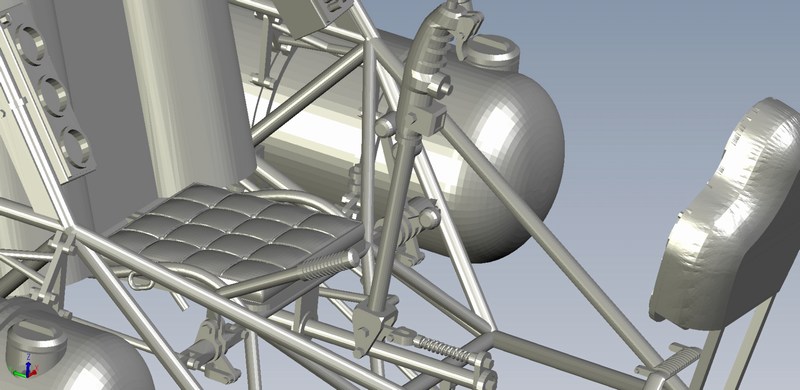
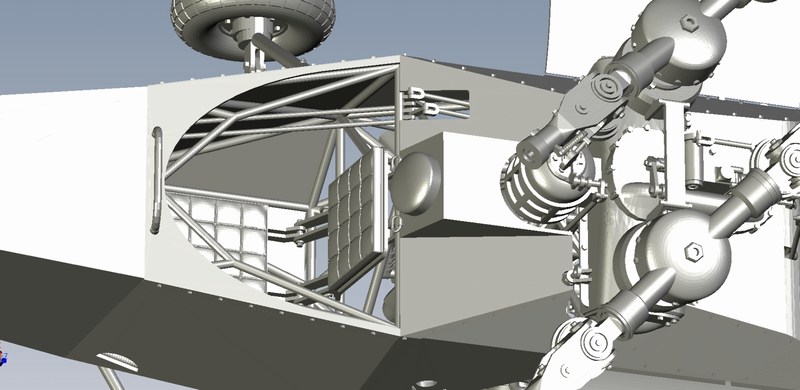
 Düzenleyen Nick_Karatzides - 27/07/2018 Saat 12:09 |
|
 |
|
|
Nick_Karatzides
Üye 

Kayıt Tarihi: 06/06/2009 Aktif Durum: Aktif Değil Gönderilenler: 250 |
  Gönderim Zamanı: 10/08/2014 Saat 21:58 Gönderim Zamanı: 10/08/2014 Saat 21:58 |
|
This is the 3D design of one of the two rotor heads, equipped with vibration dampers pots on the blade roots. Each one of the separately 3D printed rotor blades, will be later attached on the blade root connecting hinges and the outcome will be installed on gearbox shafts, having an included angle of 24° between the two rotor heads and an inclination forward of 6°.
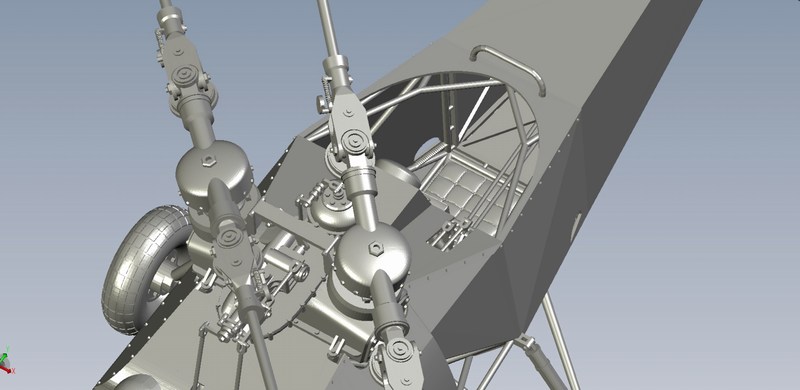
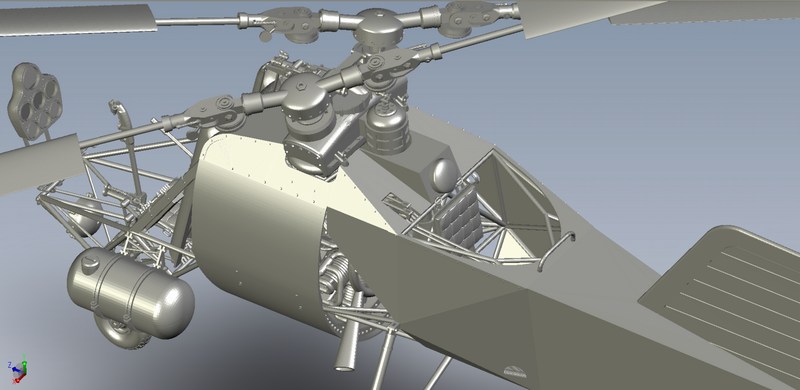 Totally four seat frames produced. One for the single seat V6, another two for the double seater V21 model and an additional one for spare in case something breaks. These seat frames are only 0.6 mm thick and proved to be much stronger than expected. 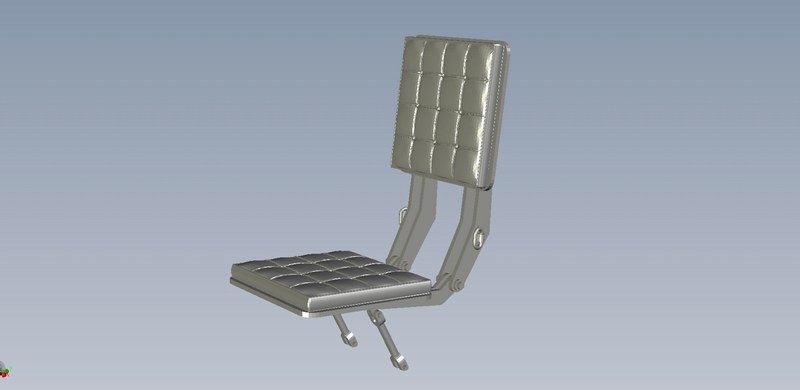
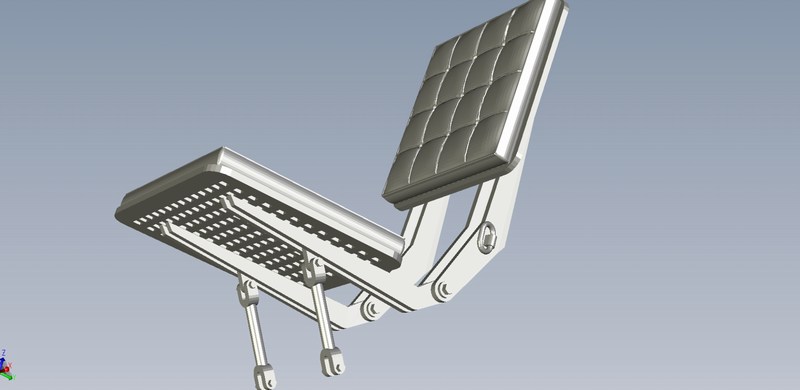 The main instrument panel with opened areas for gauges and 0.2 mm embossed detail around it to simulate the support bezels. Each gauge was 3D printed separately and will be added later, after placing the proper water slide decals. 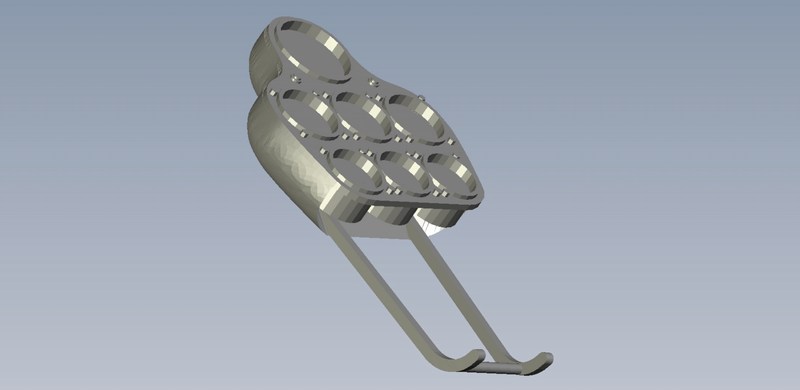
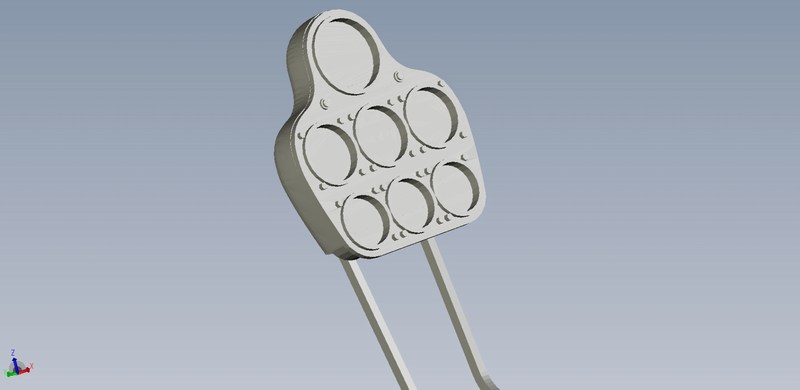 Most of available B&W and some coloured (during evaluation flights in USA) photographs are not detailed enough to reveal if the landing gear wheels had engraved tread grooves (and how many) or embossed lugs running circumferentially around the tire. The Fl-282 wheels found nowadays in museums could not be considered as a reliable reference, because the original tires could not last after 70+ years and would probably be replaced by other similar size & shape. Anyway, since I was aware for the exact 350x150 mm size for the nose wheel and 465x165 mm size for the main gear tires, I created a set of wheels, which looked realistic to me. Also, in most pictures the helicopters seemed to have slightly conical shaped caps installed over wheel rims, but there are also some pictures revealing uncovered wheel rims. Having these photos in mind plus some diagrams of Fl-282s undercarriage system, I thought that it would be quite interesting and challenging to present the wheels without rim caps. 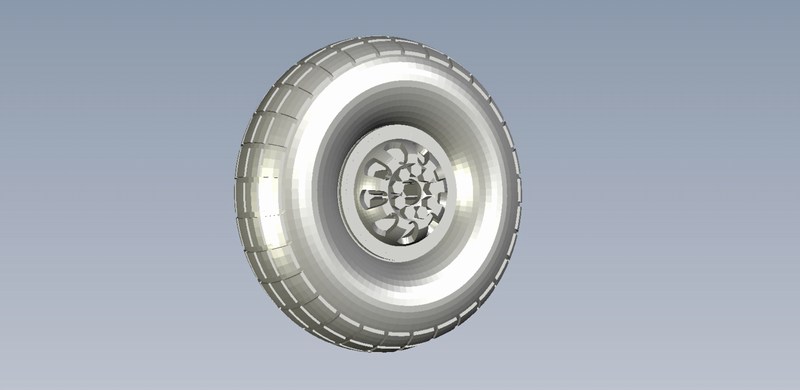
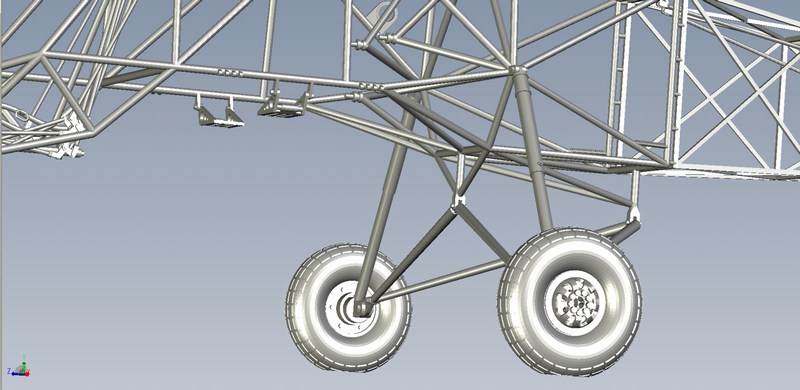 The two 25 litres cylindrical fuel tanks mounted externally on both sides of the pilot seat, were designed such way to get 3D printed as hollow parts and be presented with lids open to show the interior area. 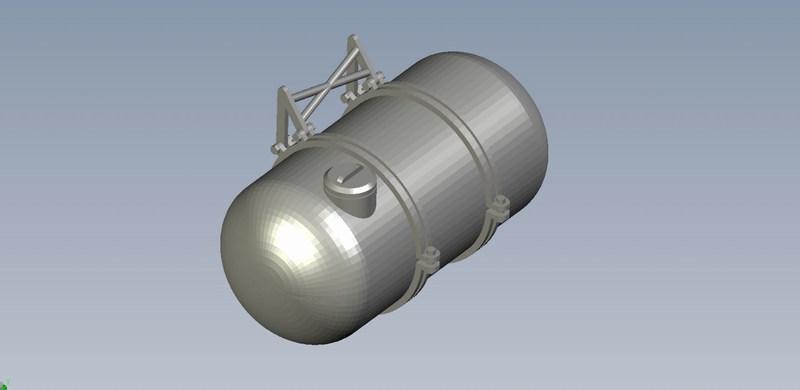
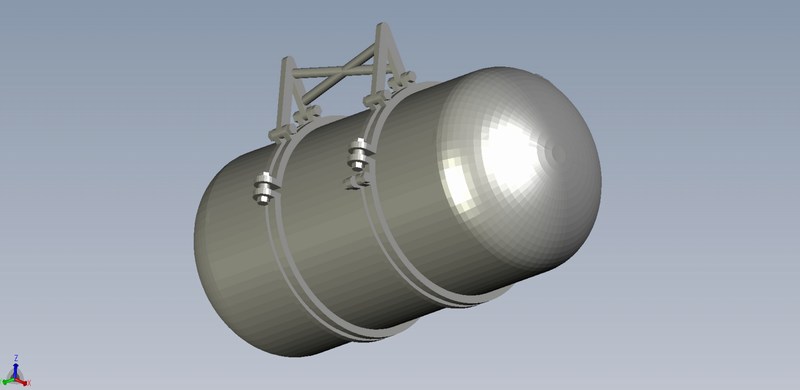 Düzenleyen Nick_Karatzides - 27/07/2018 Saat 12:09 |
|
 |
|
|
Nick_Karatzides
Üye 

Kayıt Tarihi: 06/06/2009 Aktif Durum: Aktif Değil Gönderilenler: 250 |
  Gönderim Zamanı: 10/08/2014 Saat 22:06 Gönderim Zamanı: 10/08/2014 Saat 22:06 |
|
As previously said, I found interesting idea to have the 7-cylinders radial engine would be installed inside the helicopter's belly in the fuselage center-section (and become almost hidden) and also 3D print a second removed engine, place it on a wheeled stand and present it nearby, as it would be there for maintenance purposes. By this way, helicopters inner area and the engine details would be both visible by any angle for the models observer.
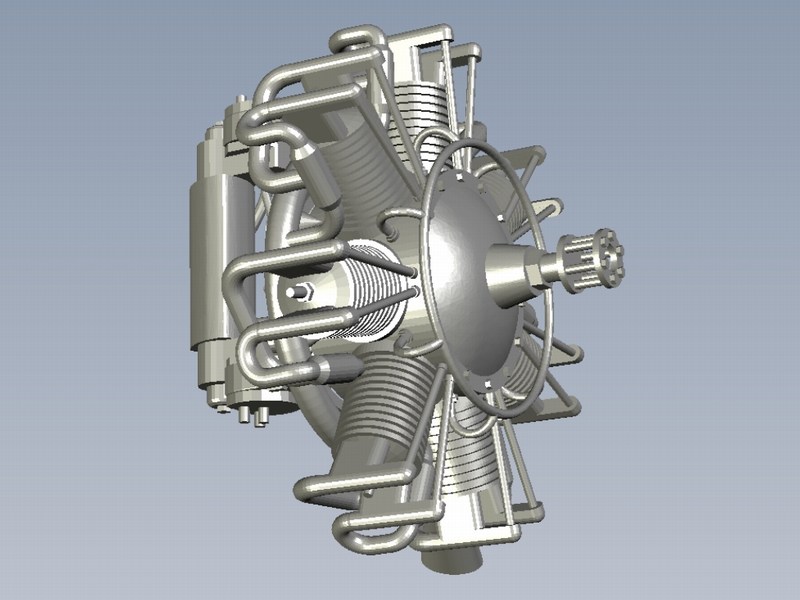
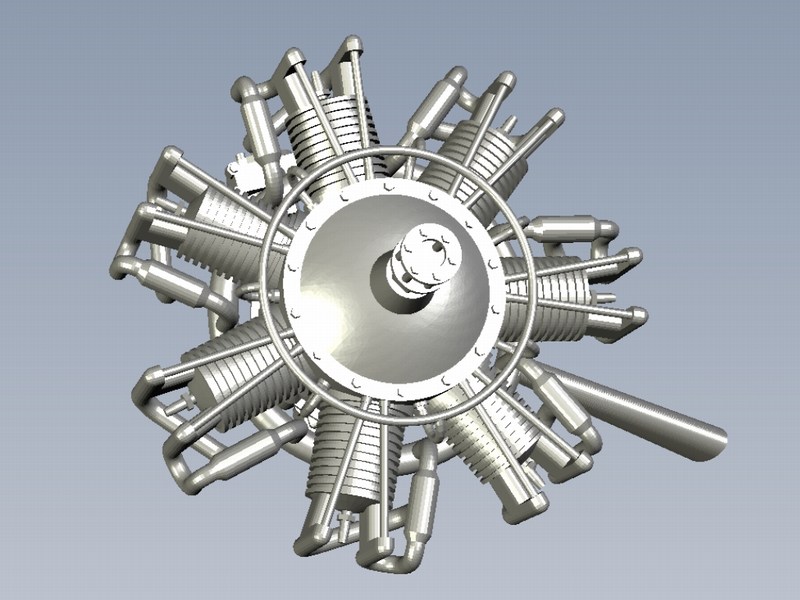
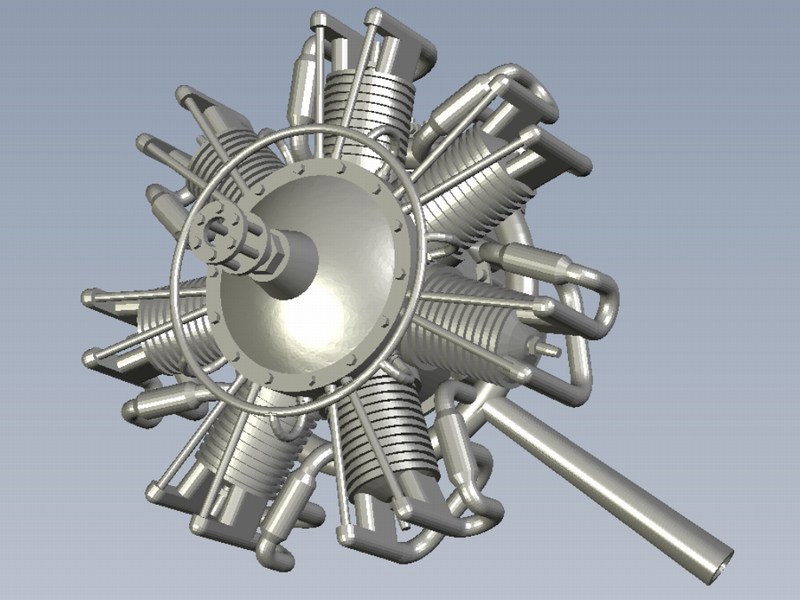
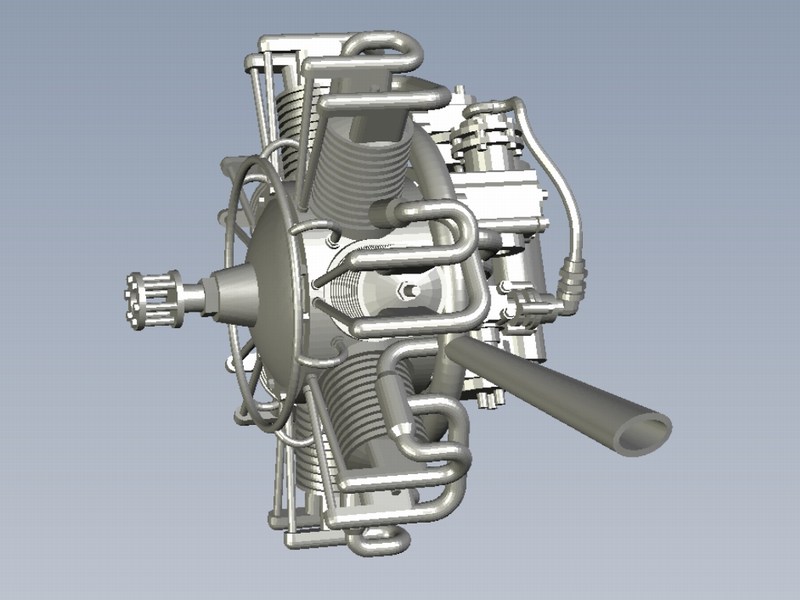
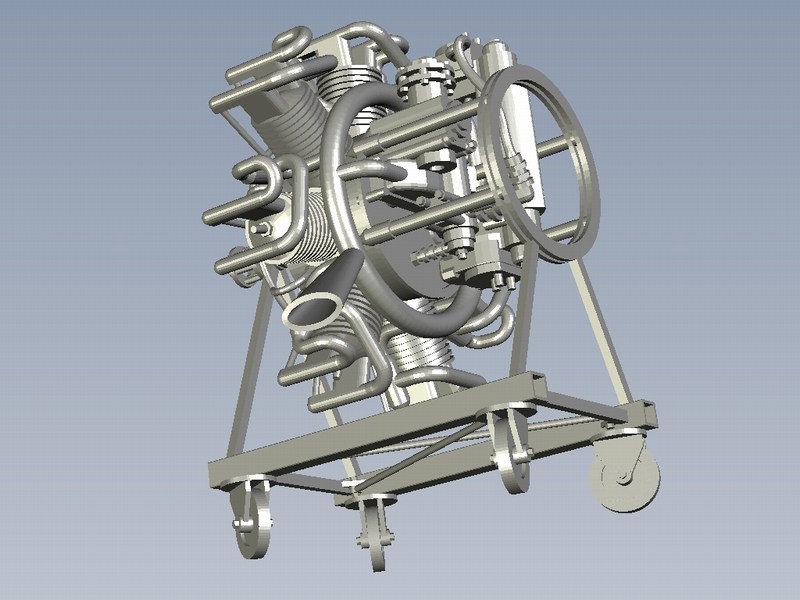
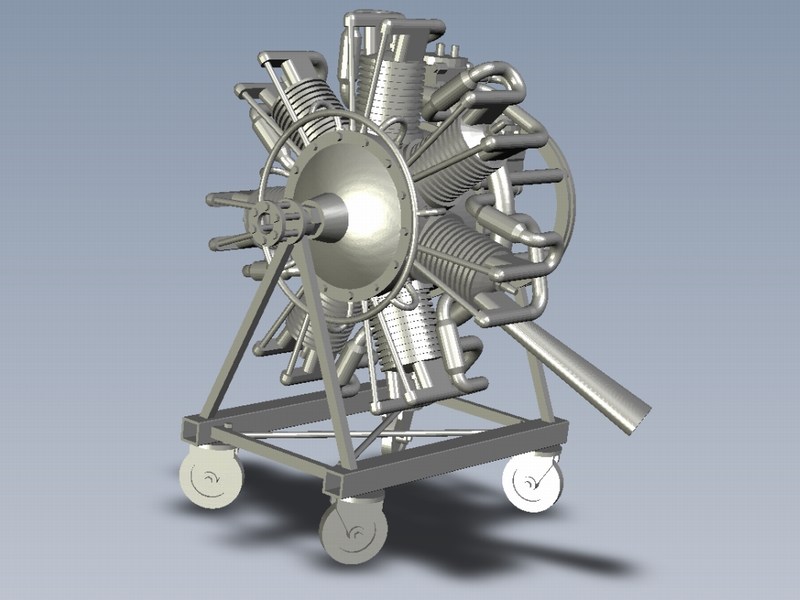
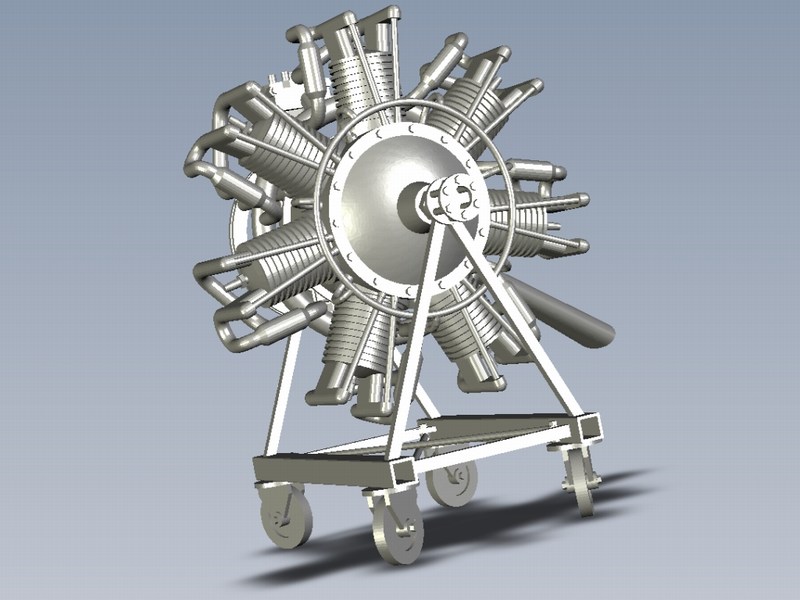
 Düzenleyen Nick_Karatzides - 27/07/2018 Saat 12:10 |
|
 |
|
|
Nick_Karatzides
Üye 

Kayıt Tarihi: 06/06/2009 Aktif Durum: Aktif Değil Gönderilenler: 250 |
  Gönderim Zamanı: 10/08/2014 Saat 22:24 Gönderim Zamanı: 10/08/2014 Saat 22:24 |
|
Some additional parts unrelated to the helicopter structure, also designed to get 3D printed later and be used later as part of a diorama scene. For example a couple of 200 litres fuel drums (also known as 55 gallons drums in USA) and few 20 litres (4.4 imp gal; 5.3 US gal) Jerrycan fuel canisters (originally called Wehrmacht einheitskanister) designed in Germany during 1930ies for military use. These fuel drums & canisters used by Wehrmacht, Luftwaffe & Kriegsmarine during WWII had the Kraftstoff 200L Feuergefährlich Luftwaffe and the Kraftstoff 20 L Feuergefährlich 1941 inscriptions, engraved or embossed on side. Actually it took only 15 minutes of CAD work on my laptop to have this result under 1/18 scale. As previously described, the CAD file can be easily scaled up or down to reach the desired dimensions, with few mouse clicks only and later be 3D printed under any scale. Yes, I could scratchbuild some WWII Wermacht style fuel drums or canisters with my own hands, using metal foil or by vaccumforming styrene sheet, or simply by solid epoxy putty, but it would take much more time and I would surely get some dirt under my nails. The easier, the better! Actually, Im not really sure if the handmade result would be so accurate in scale or if I could possibly build it within few minutes only. Notice that the fuel drum & canisters are not solid - they were CAD designed such way (width of skin is about 0.3 to 0.4 mm), aiming both to represent as closely as possible to real ones and also could be later filled with transparent resin material to simulate liquid fuel, always visible through the opened filler cap.
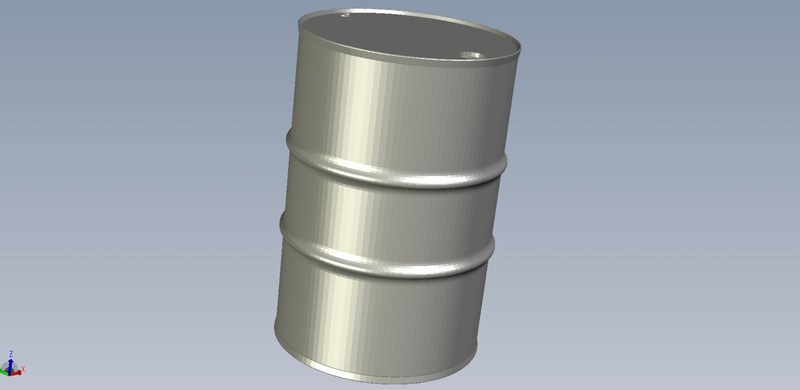
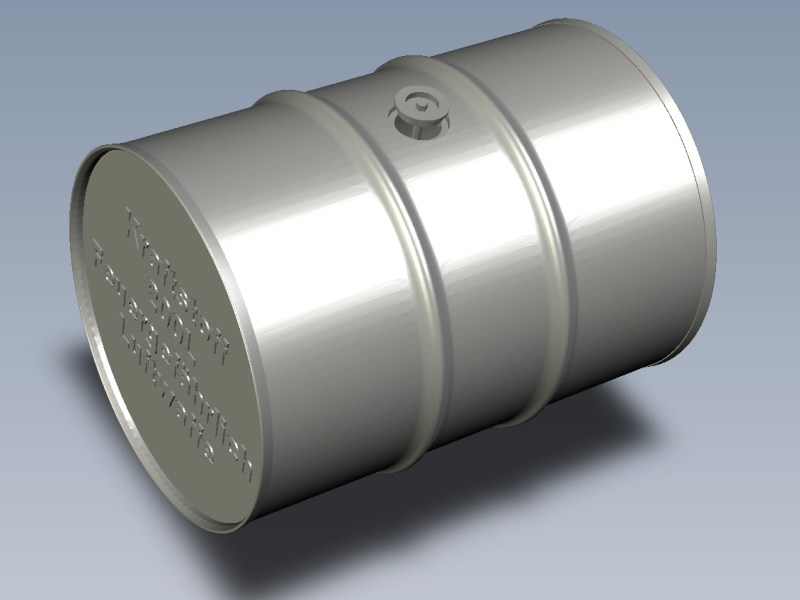
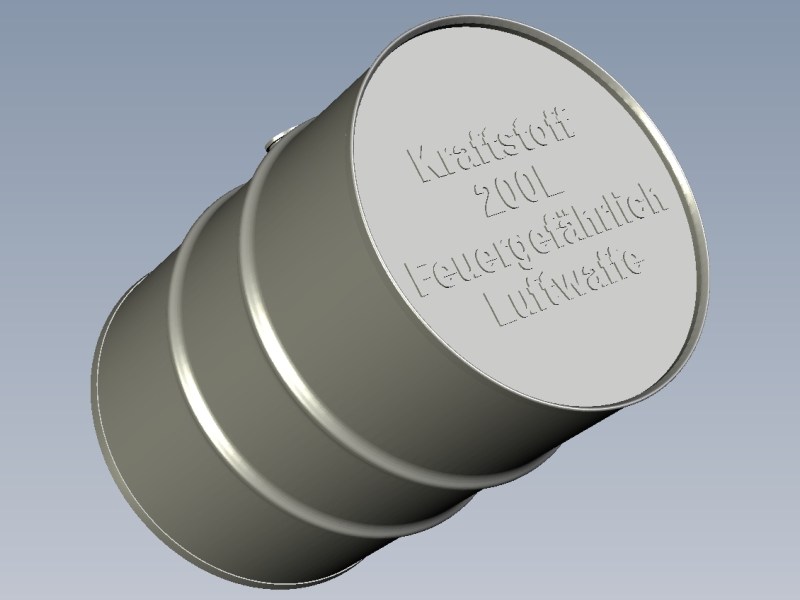
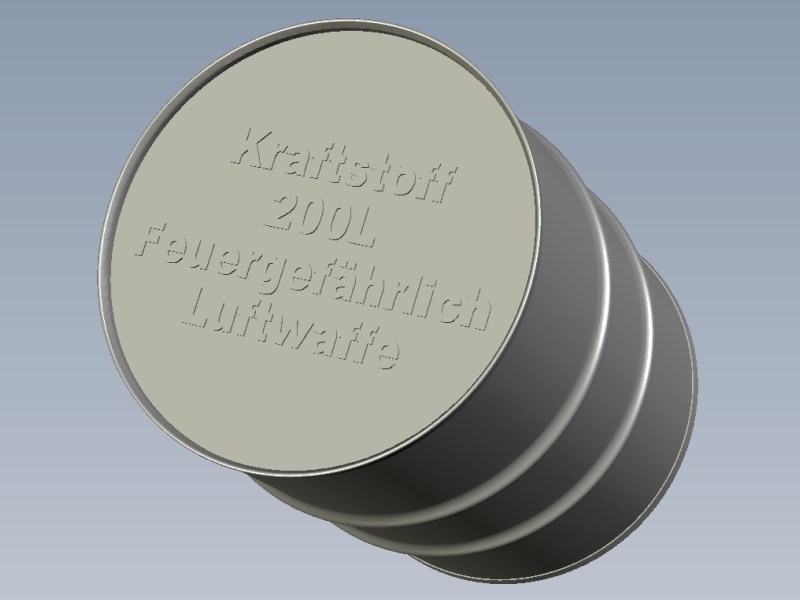
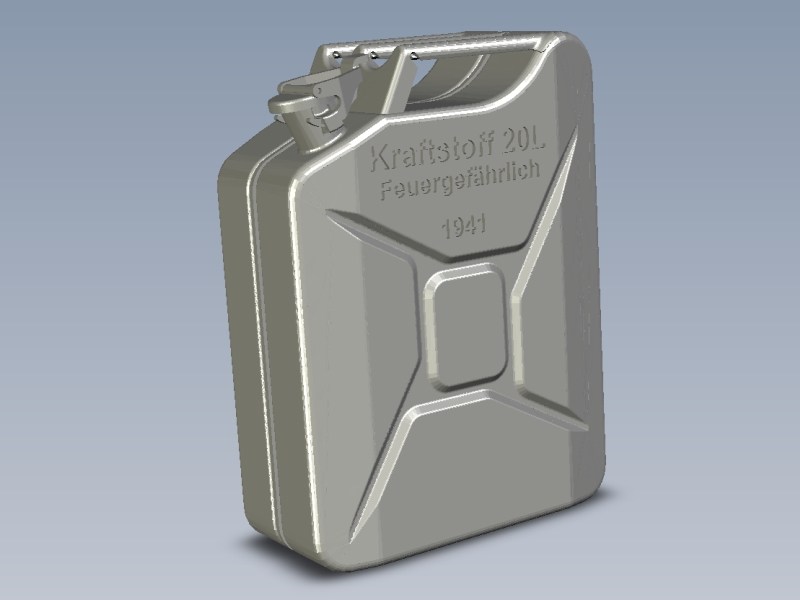
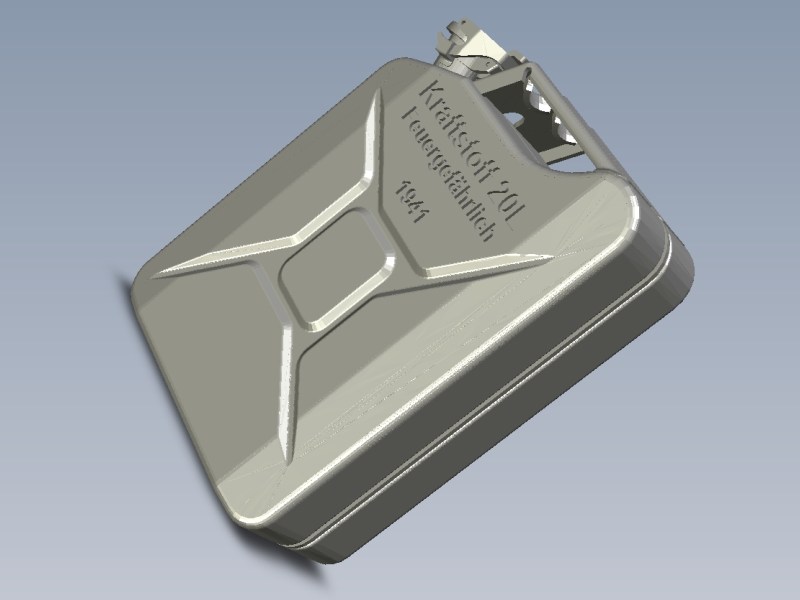
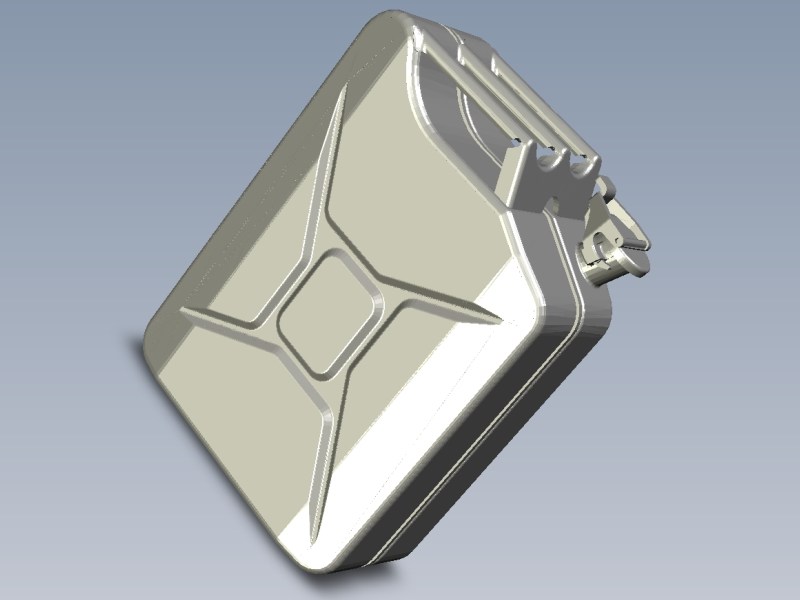 At last, a final piece also 3D designed to be used as a wooden 3-steps ladder as used by Luftwaffe WWII ground crews and technician personnel for ground vehicle & aircraft maintenance procedures. 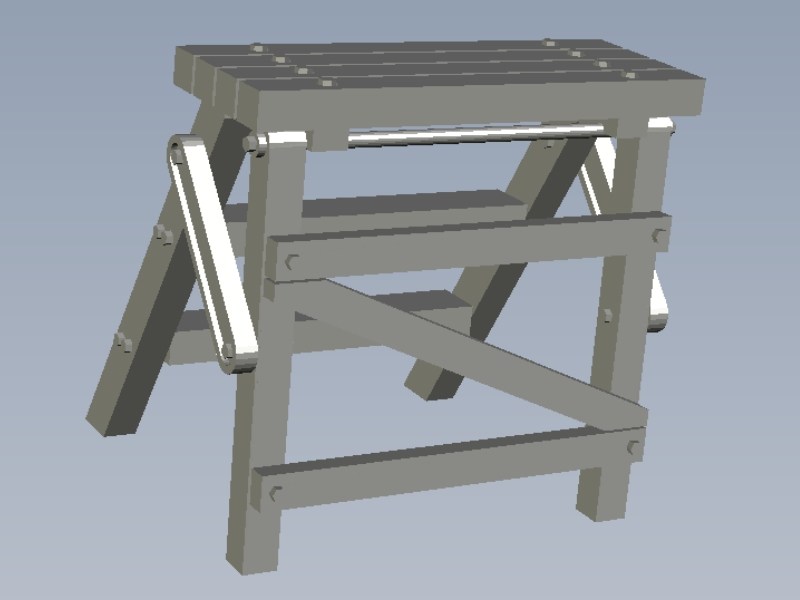
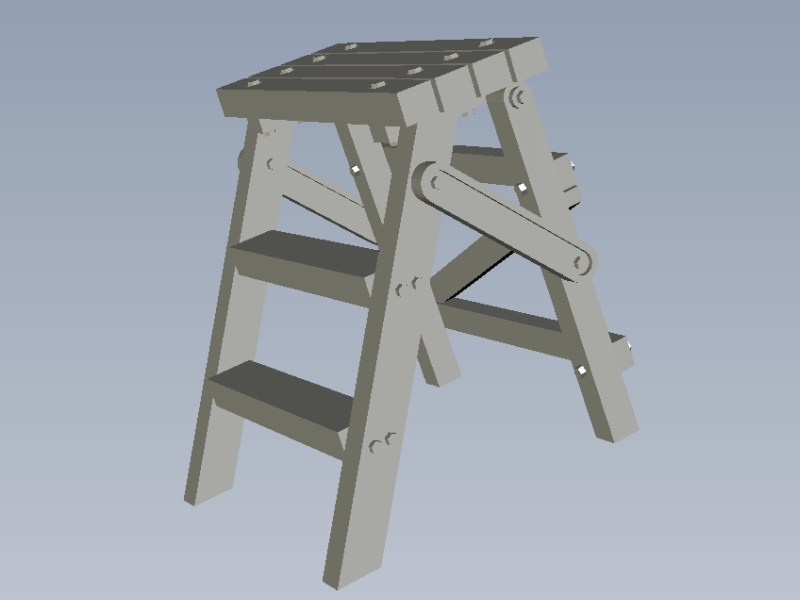
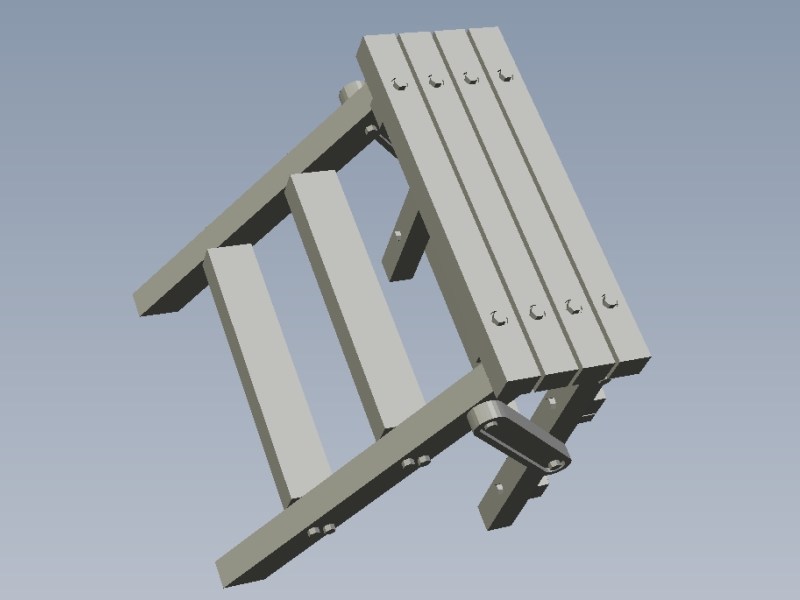 Düzenleyen Nick_Karatzides - 27/07/2018 Saat 12:11 |
|
 |
|
|
Nick_Karatzides
Üye 

Kayıt Tarihi: 06/06/2009 Aktif Durum: Aktif Değil Gönderilenler: 250 |
  Gönderim Zamanı: 10/08/2014 Saat 22:34 Gönderim Zamanı: 10/08/2014 Saat 22:34 |
|
After digitally building the Fl-282 Kolibri 3D model using only mouse clicks, I saved it as an STL - STereoLithography format binary file and forward it on the 3D replicator to start generating the individual parts of the actual scale model. To do so, I used the best available tools & plastic material and asked from Shapeways, a special digital fabrication lab equipped with a high-precision & high-cost ProJet HD 3000 machine for creating custom made-to-order products, to 3D print it. The 3D printing material used was a special plastic called VisiJet SR 200, a UV light cured acrylic polymer plastic material for 3D printing with ± 0.025 mm accuracy for every 25.40 mm. Its actually an organic mixture, consists of 55% triethylene glycol dimethacrylate ester and 45% urethane acrylate polymer. It is printed using the MJM aka Multi Jet Modeling process. During this MJM process, cartridges of acrylate and/or wax material are heated and the plastic material is fired in ballistic micro droplets from a multi-chambered print head containing hundreds of Piezo jets. Molten plastic is deposited onto an aluminum build platform in layers using several nozzles, essentially like a large print that sweeps across the build layer. As the heated material jets onto the build plate, it solidifies instantly. After each layer is deposited, it is cured & polymerized by a wide area UV lamp. The next layer then applied, and through this repeated process layers of thermoplastic build up into a model. This method can print durable plastic parts with a high level of detail and accuracy as well as burnout materials and real wax parts for casting. Layers can be as thin as 16 microns, so MJM produces fantastic surface finish with minimal stepping.
The 1/18 scale Fl-282 V21 Kolibri full fuselage model kit consists of 60 different 3D printed parts made of matte translucent plastic material - in fact, the kit parts are quite more, but smaller in size are interconnected on same sprue frame which is counted as one part. Kit was CAD designed and 3D produced in such way to simplify assembling process while maintaining necessary details required by the scale size. Following the instructions described into the 102-page ultra-detailed 1/18 Fl-282 V21 full-fuselage kit building instructions manual (which can be found HERE as a PDF format downloadable file), the assembling process becomes easy. 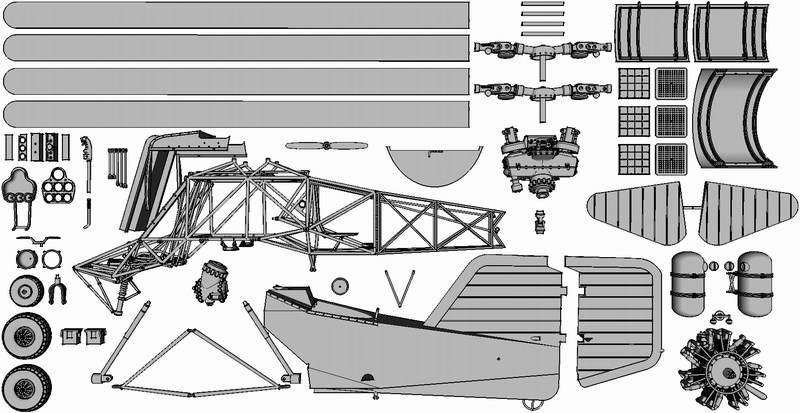
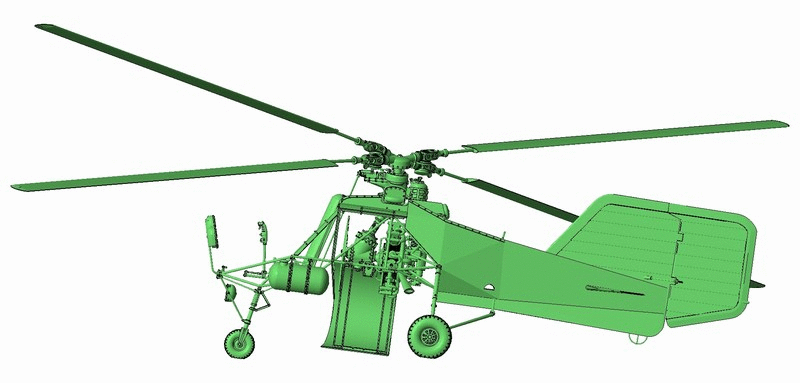 When printing is finished, the model parts are removed from the tray and placed into an oven that melts away the wax support material. Next, the models are placed into an a ultrasonic oil bath to remove any remaining wax residues, and then a ultrasonic water bath to remove any oil on the model. Final inspection and dry by hand follows for every single model part. Although the ProJet HD 3000 prints in high resolution (16 microns per layer) and can easily produce high detailed parts as small as 0.1 mm, it is better to avoid printing such small parts because they could easily get lost while washed into ultrasonic bath later, for wax residues removing. 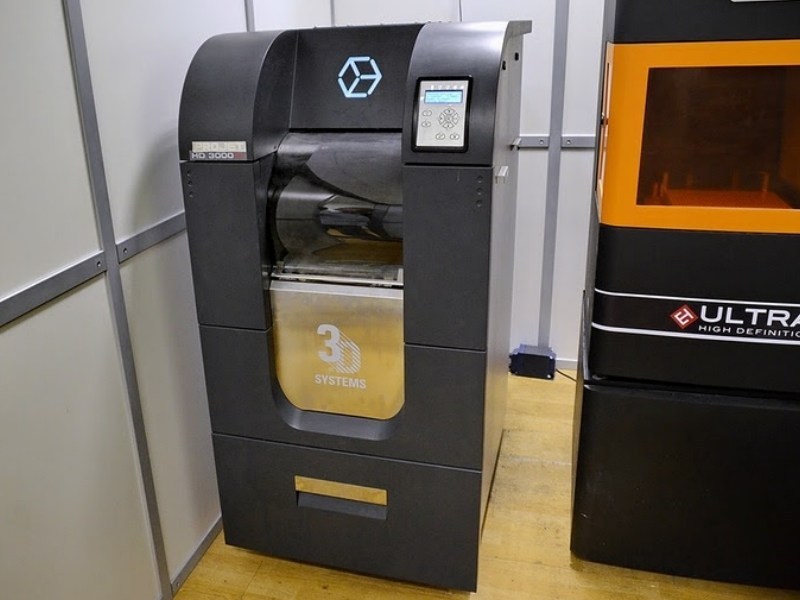
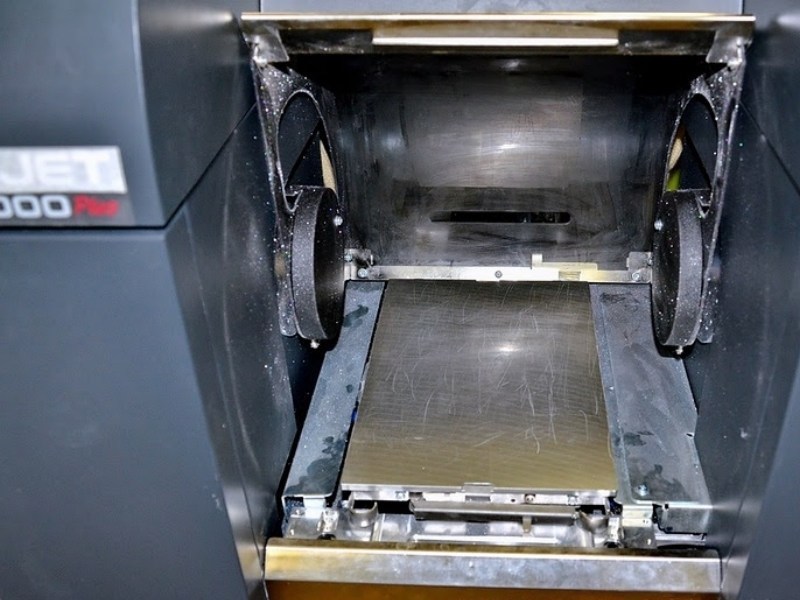 Keep in mind that due to increased 3D printed items manufacturing demand and workload in Shapeways factory, a complete model kit takes about 5 to 7 days to get produced after order. Depending customers location, the 3D printed parts are produced at one of two Shapeways production lines based at NYC Long Island, USA or Eindhoven, Netherlands and shipped Worldwide, (24hrs to 48hrs delivery time) right at your doorstep by USPS, UPS and DHL with most reasonable prices. 
 Düzenleyen Nick_Karatzides - 27/07/2018 Saat 12:12 |
|
 |
|
|
Nick_Karatzides
Üye 

Kayıt Tarihi: 06/06/2009 Aktif Durum: Aktif Değil Gönderilenler: 250 |
  Gönderim Zamanı: 10/08/2014 Saat 22:44 Gönderim Zamanı: 10/08/2014 Saat 22:44 |
|
Shortly thereafter, the 3D printing proceeding outcome pleased me while watching the Mbytes, magically converting into actual physical objects. Yeah, thats what I call cool gadgets on a scale modelers service. As soon as 3D printing process completed, the produced parts were cleaned & checked for broken parts or imperfections by Shapeways 3D printing lab specialized personnel. Later, everything carefully packed and shipped to my home address using UPS 24hrs delivery service. Next day, I got home to find a Shapeways box on my doorstep. After a long eye roll from my wife, I quickly grabbed a knife and opened it like all kids open their presents on Christmas morning. Nothing out of the ordinary, I decided to take a few photos to illustrate the experience of receiving my own custom designed & 3D printed model kits package and get in my hands the result of my very own custom-made kit, designed with laptop mouse clicks only and built from zero by converting a CAD binary file into an actual physical object, under my preferable 1/18 scale. Cool stuff, isnt it?
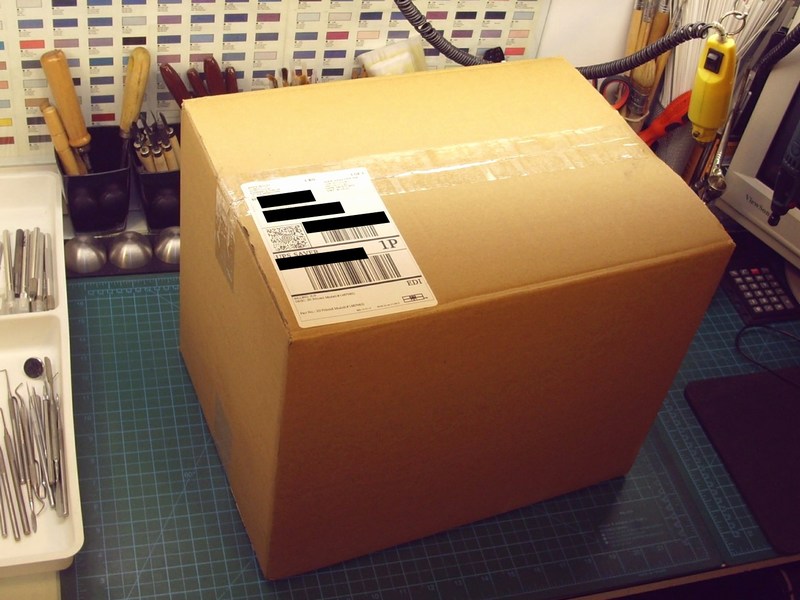
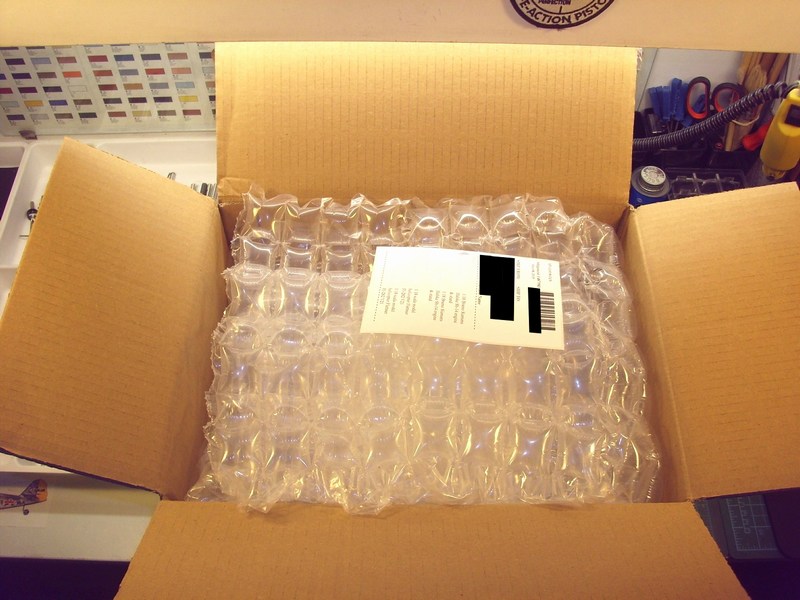
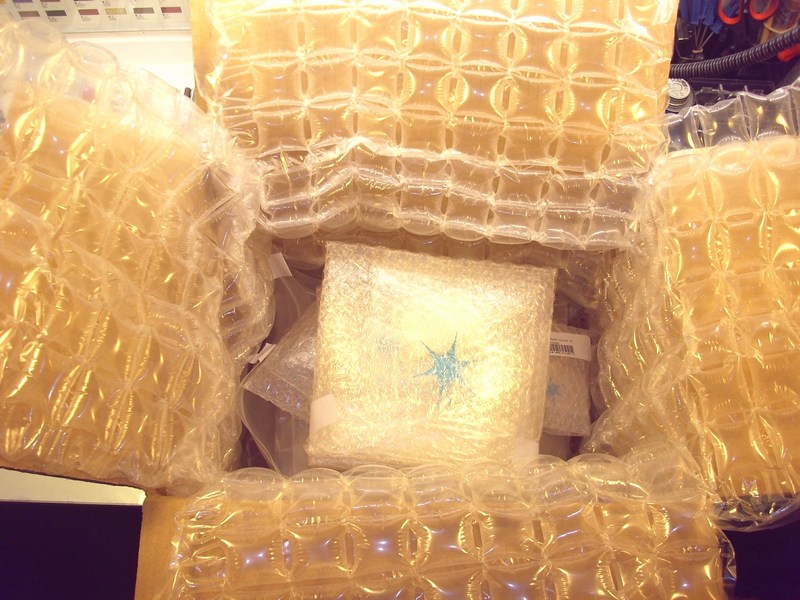

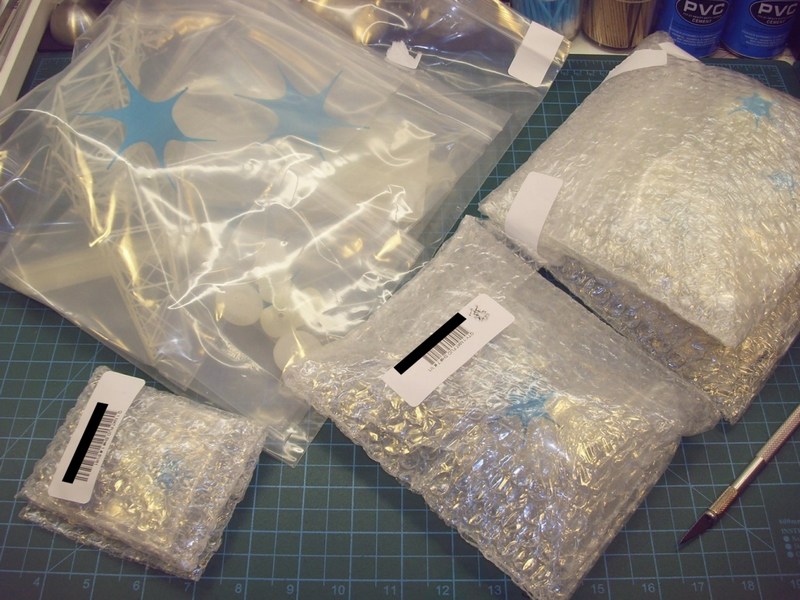 Düzenleyen Nick_Karatzides - 27/07/2018 Saat 12:12 |
|
 |
|
|
Nick_Karatzides
Üye 

Kayıt Tarihi: 06/06/2009 Aktif Durum: Aktif Değil Gönderilenler: 250 |
  Gönderim Zamanı: 10/08/2014 Saat 22:54 Gönderim Zamanı: 10/08/2014 Saat 22:54 |
|
Each one of the two complete custom-made kits consists of 60 different 3D printed parts, some quite big and some others so tiny that could be easily become victims of the carpet monster. The only difference between these two Kriegsmarines V6 and Luftwaffes V21 custom-made complete kits, is that the single seat V6 version kit contains an extra cover for the observers rearwards facing office just behind the rotor shafts. On the other hand, the two-seater V21 version kit extra contains the two cylindrical 25 lt fuel tanks placed on either side of the cockpit, which are absent on V6 naval kit.
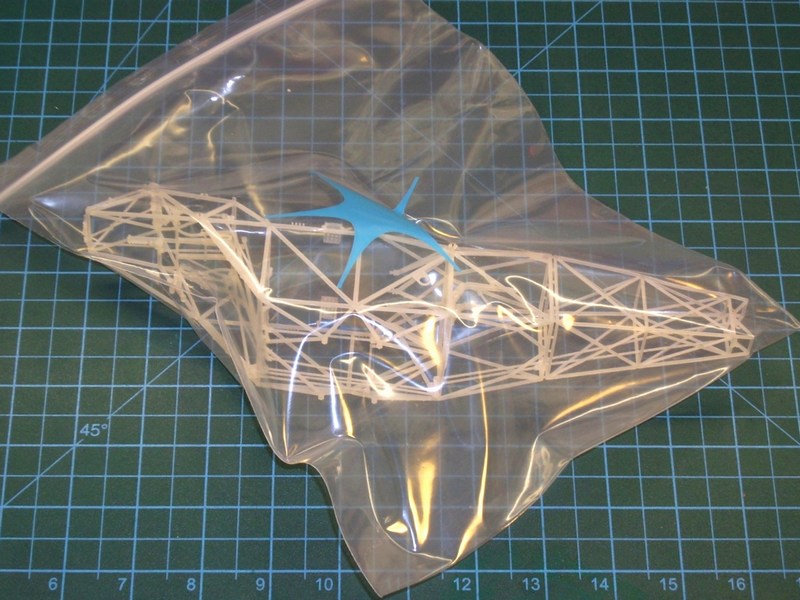
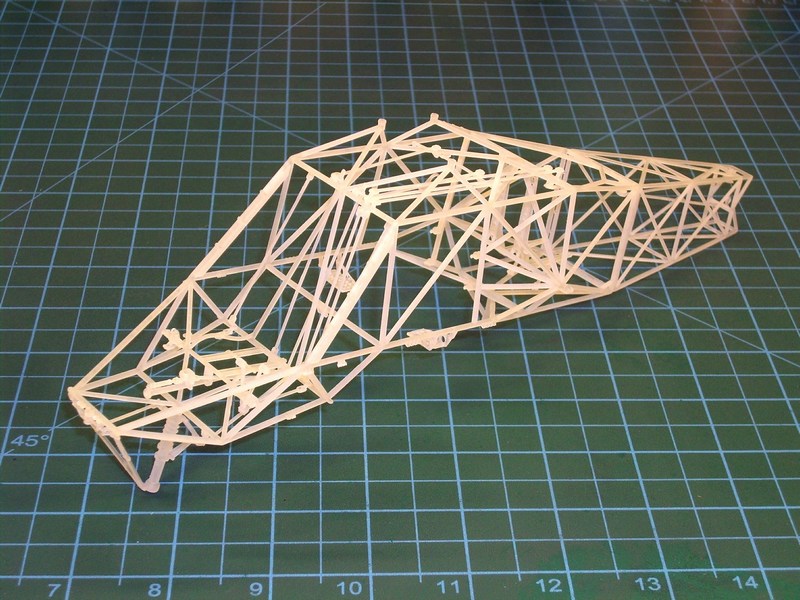
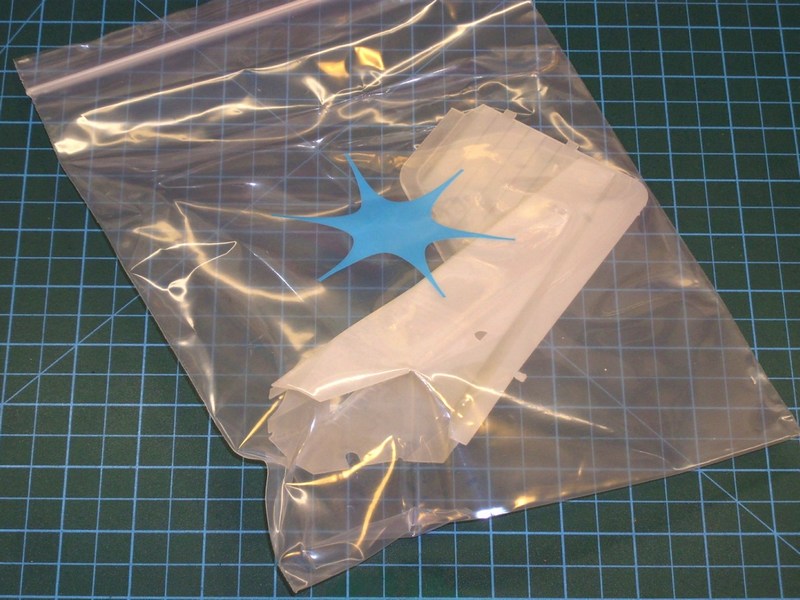
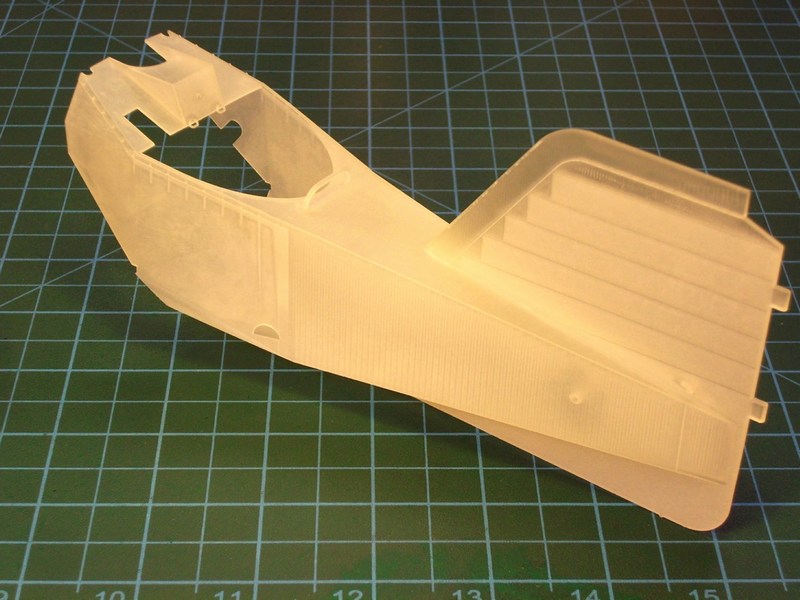
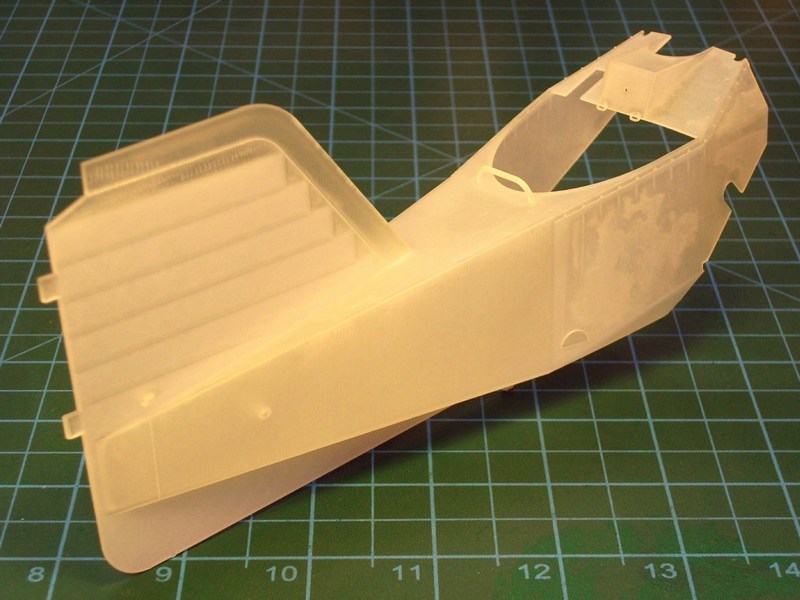
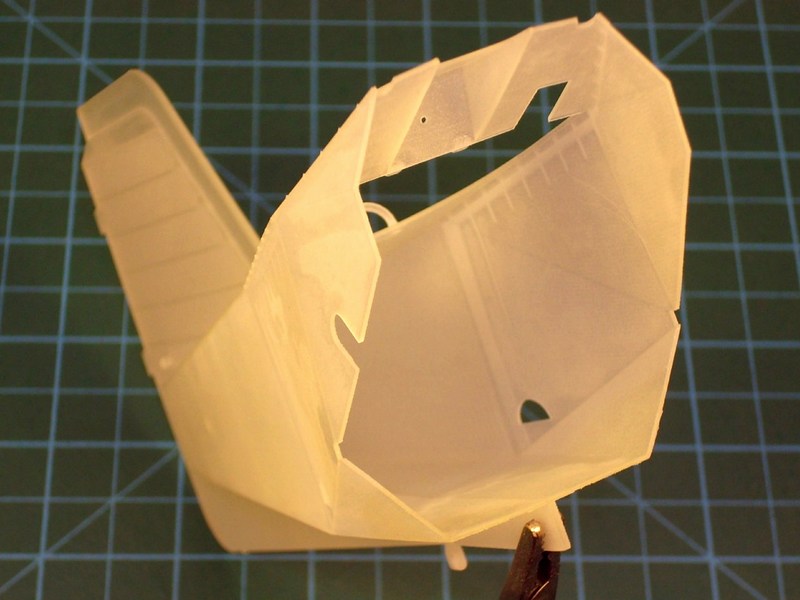 Düzenleyen Nick_Karatzides - 27/07/2018 Saat 12:13 |
|
 |
|
| Sayfa 4 Sonraki >> |
  |
||
Forum Atla |
Kapalı Foruma Yeni Konu Gönderme Kapalı Forumdaki Konulara Cevap Yazma Kapalı Forumda Cevapları Silme Kapalı Forumdaki Cevapları Düzenleme Kapalı Forumda Anket Açma Kapalı Forumda Anketlerde Oy Kullanma |
|